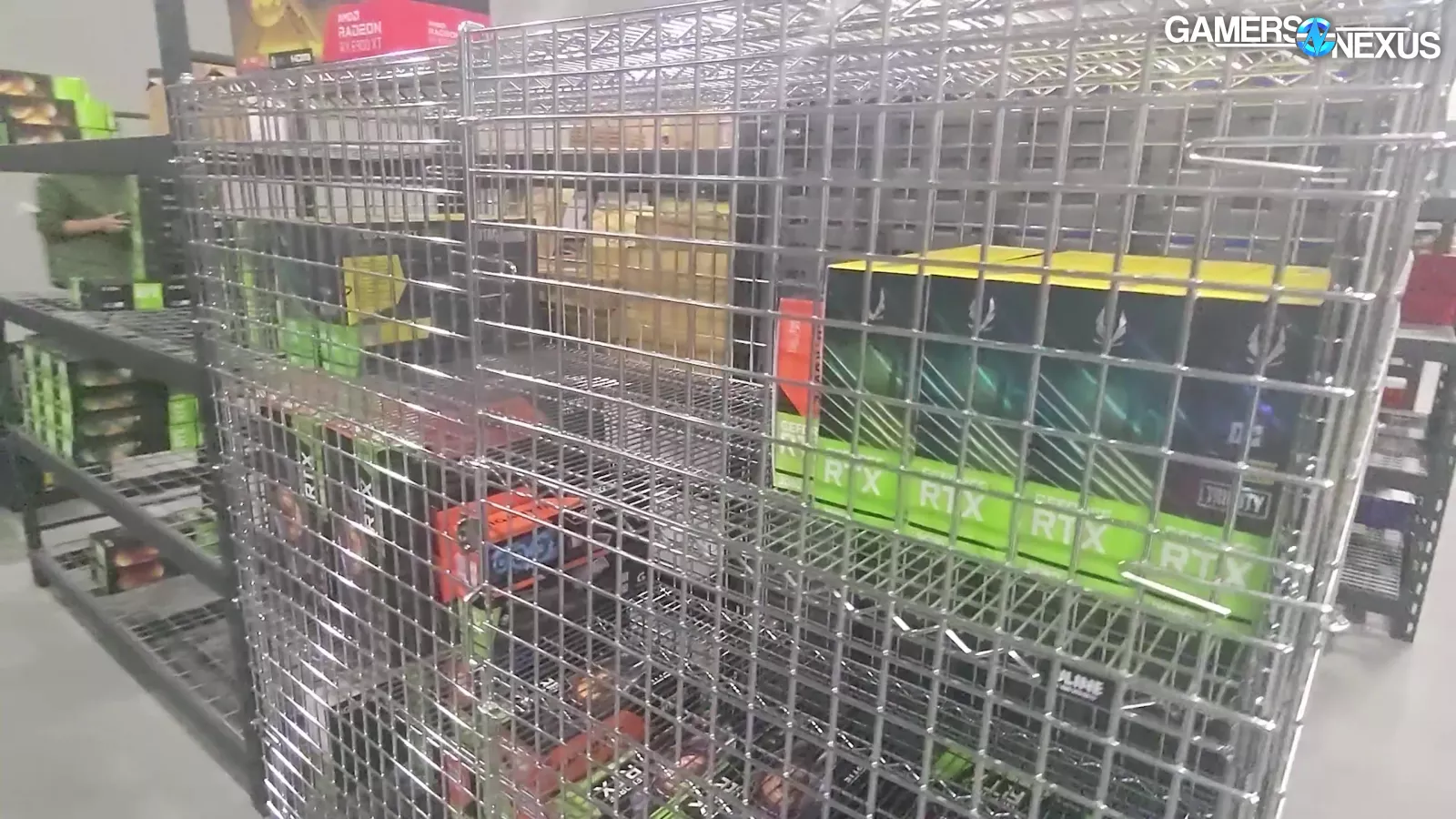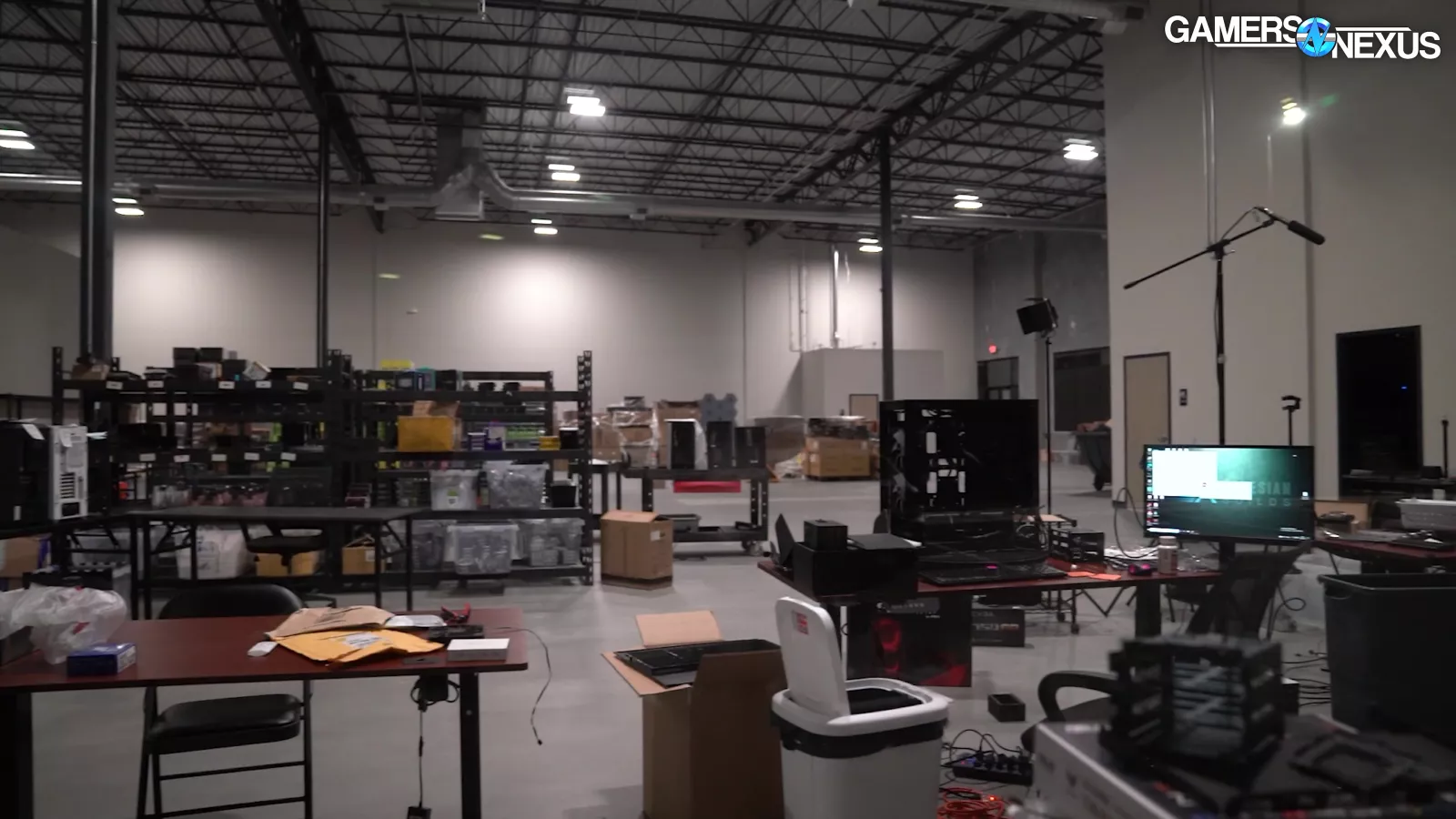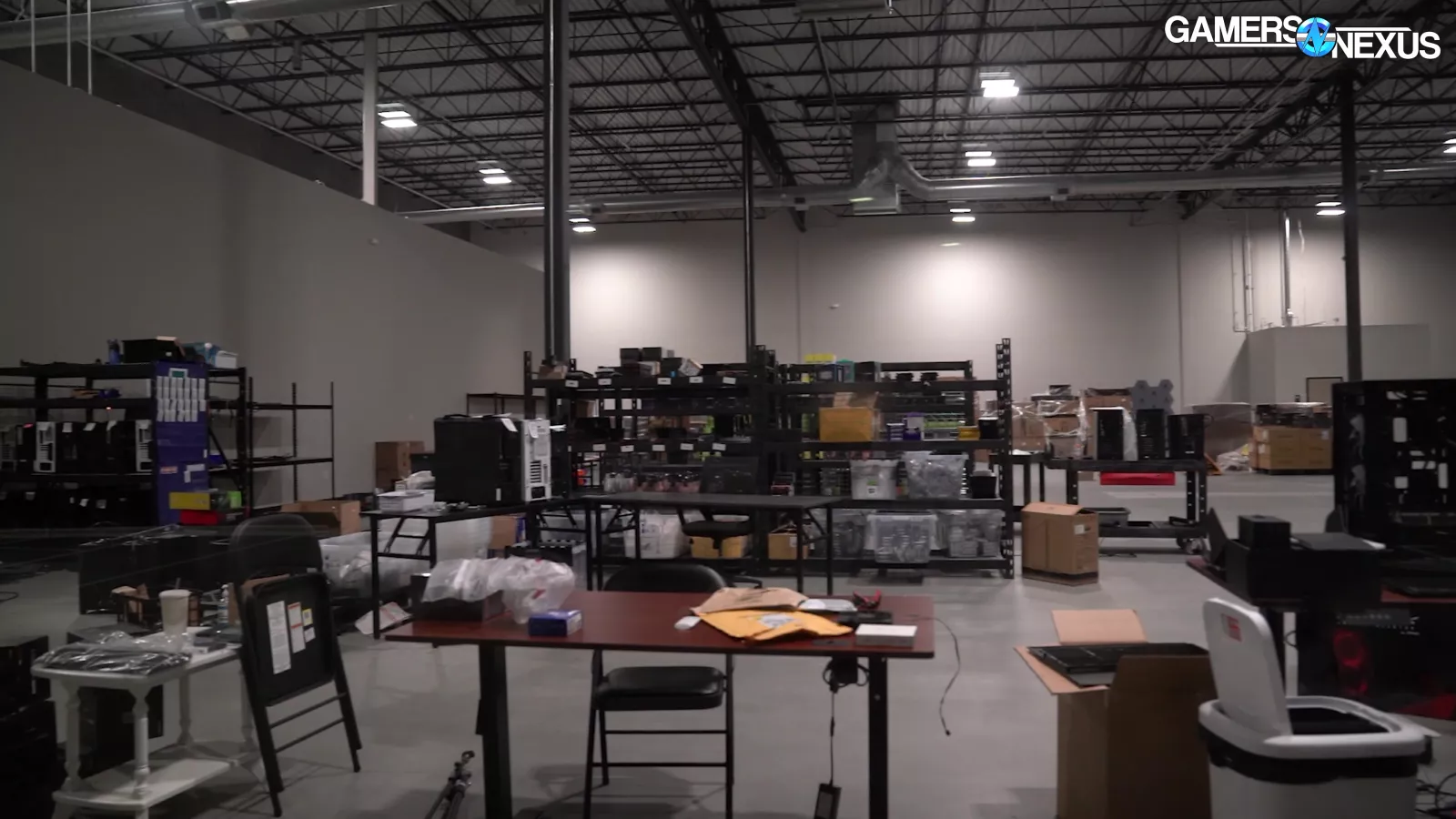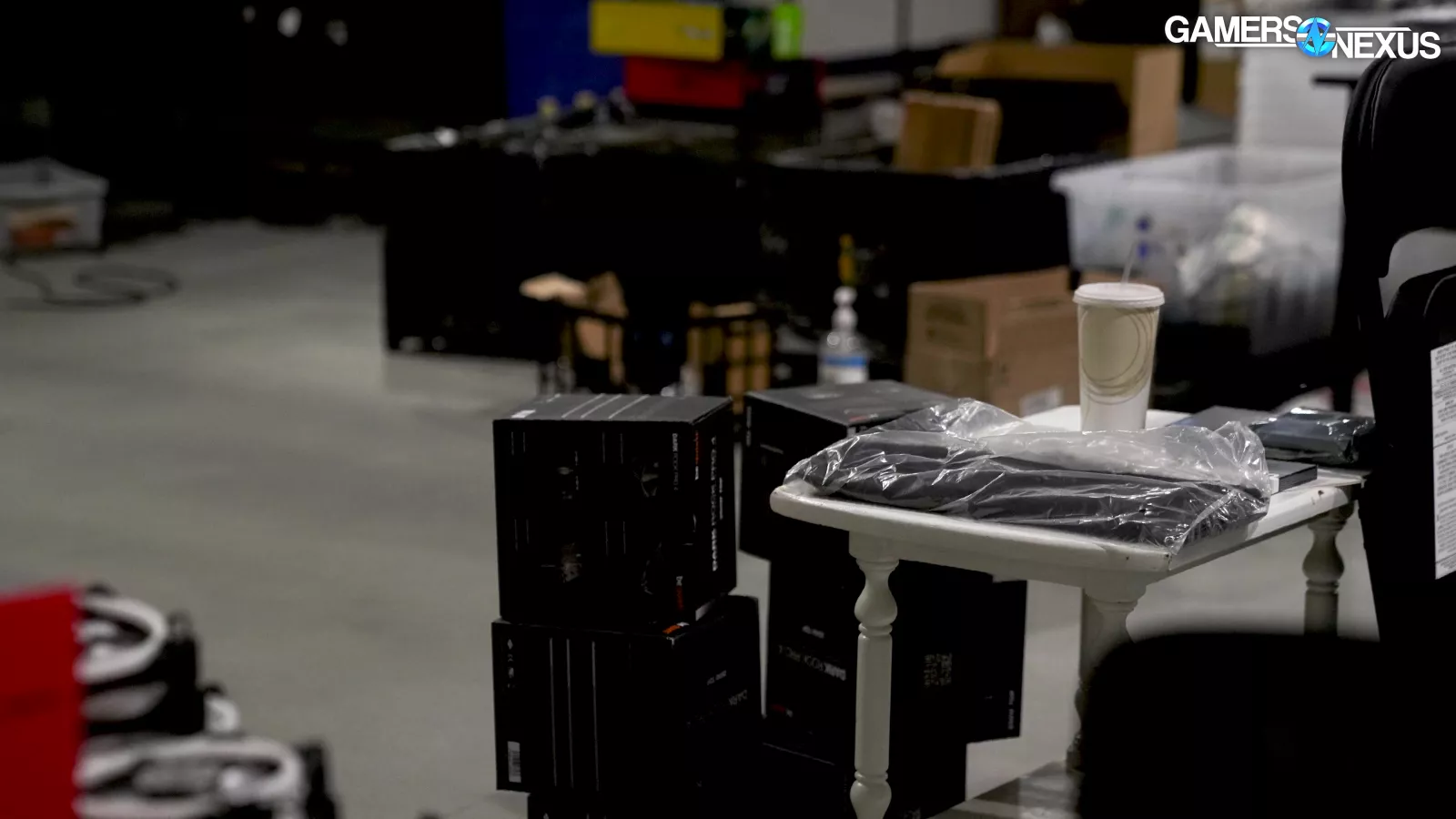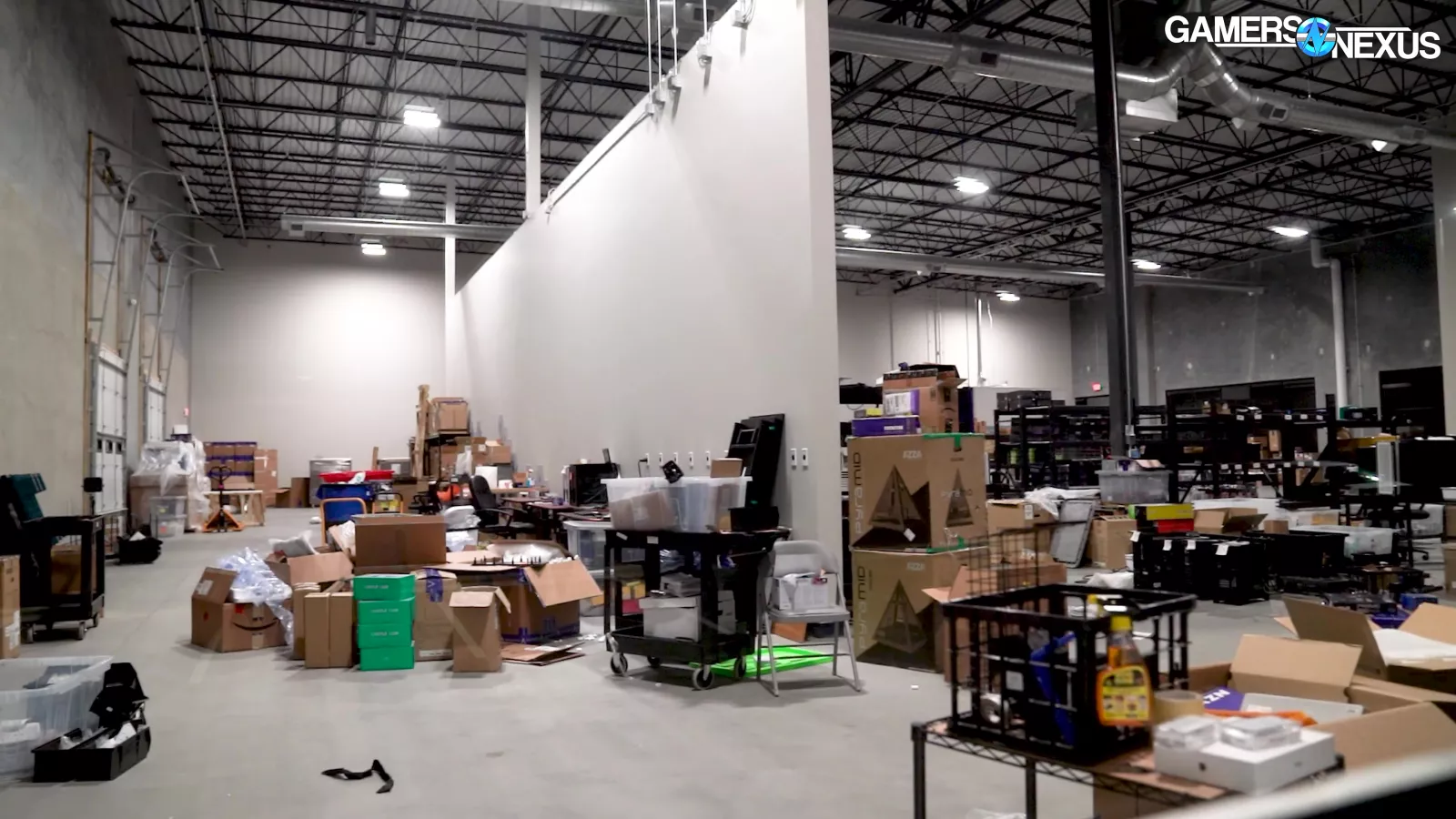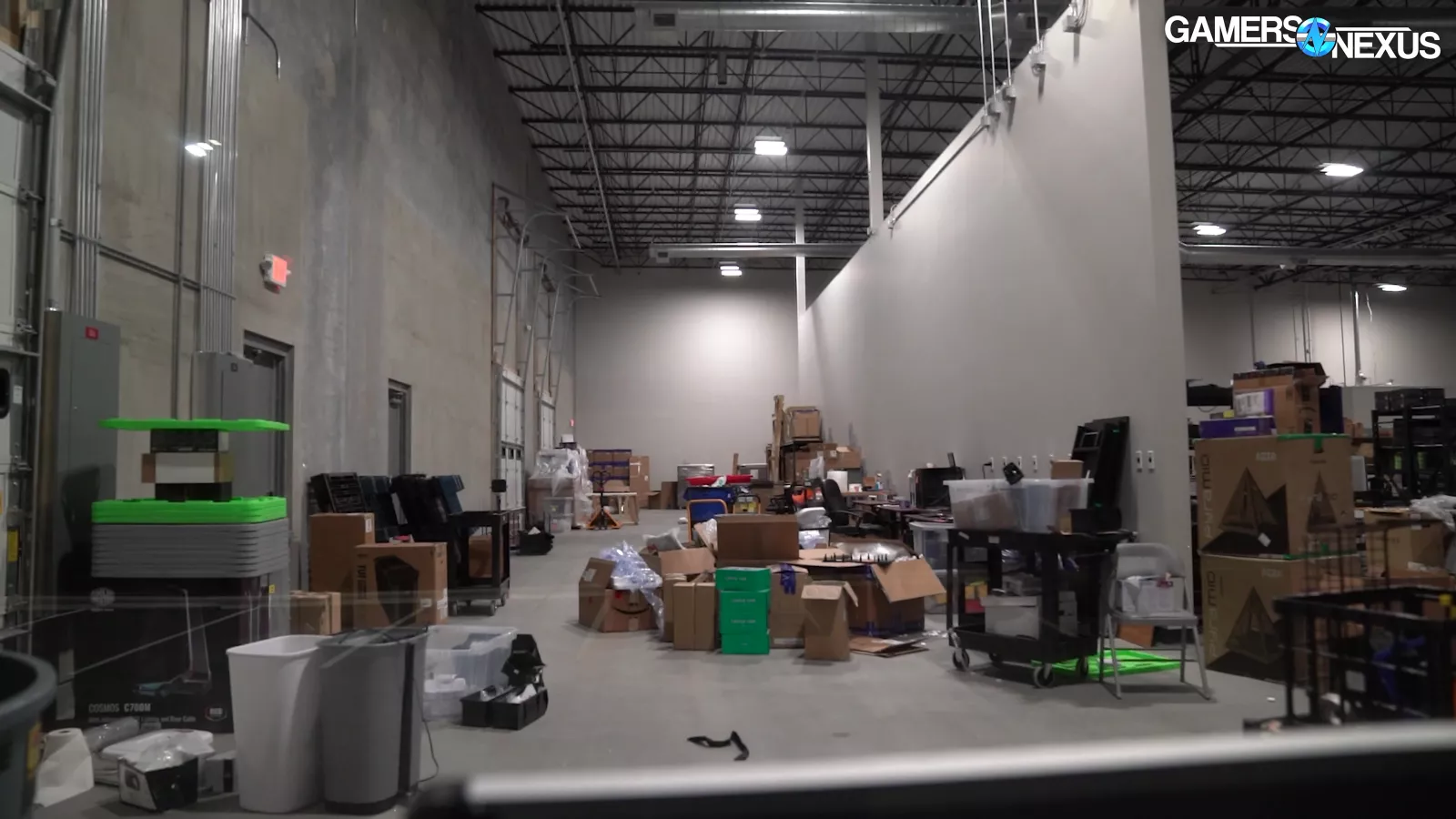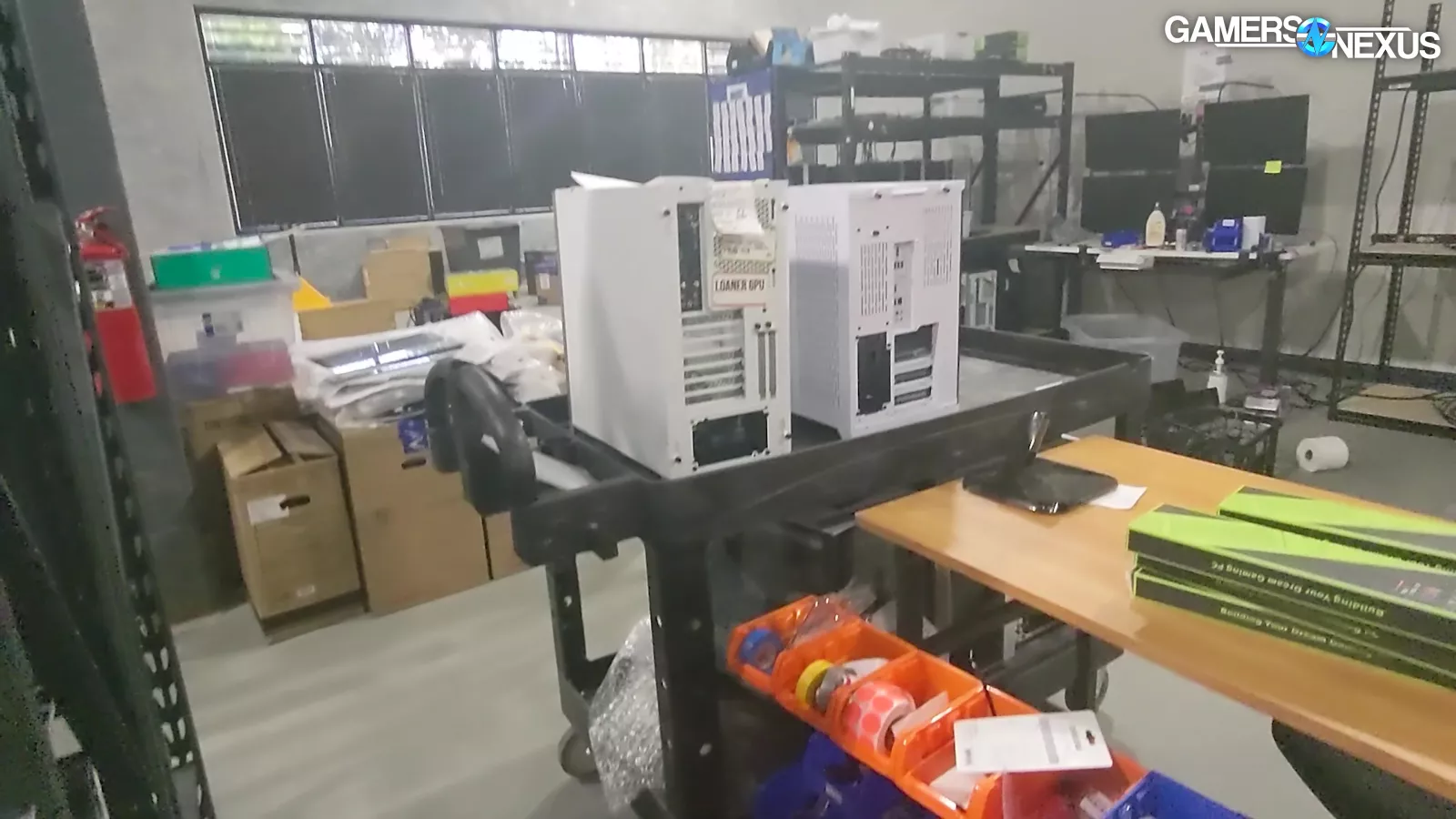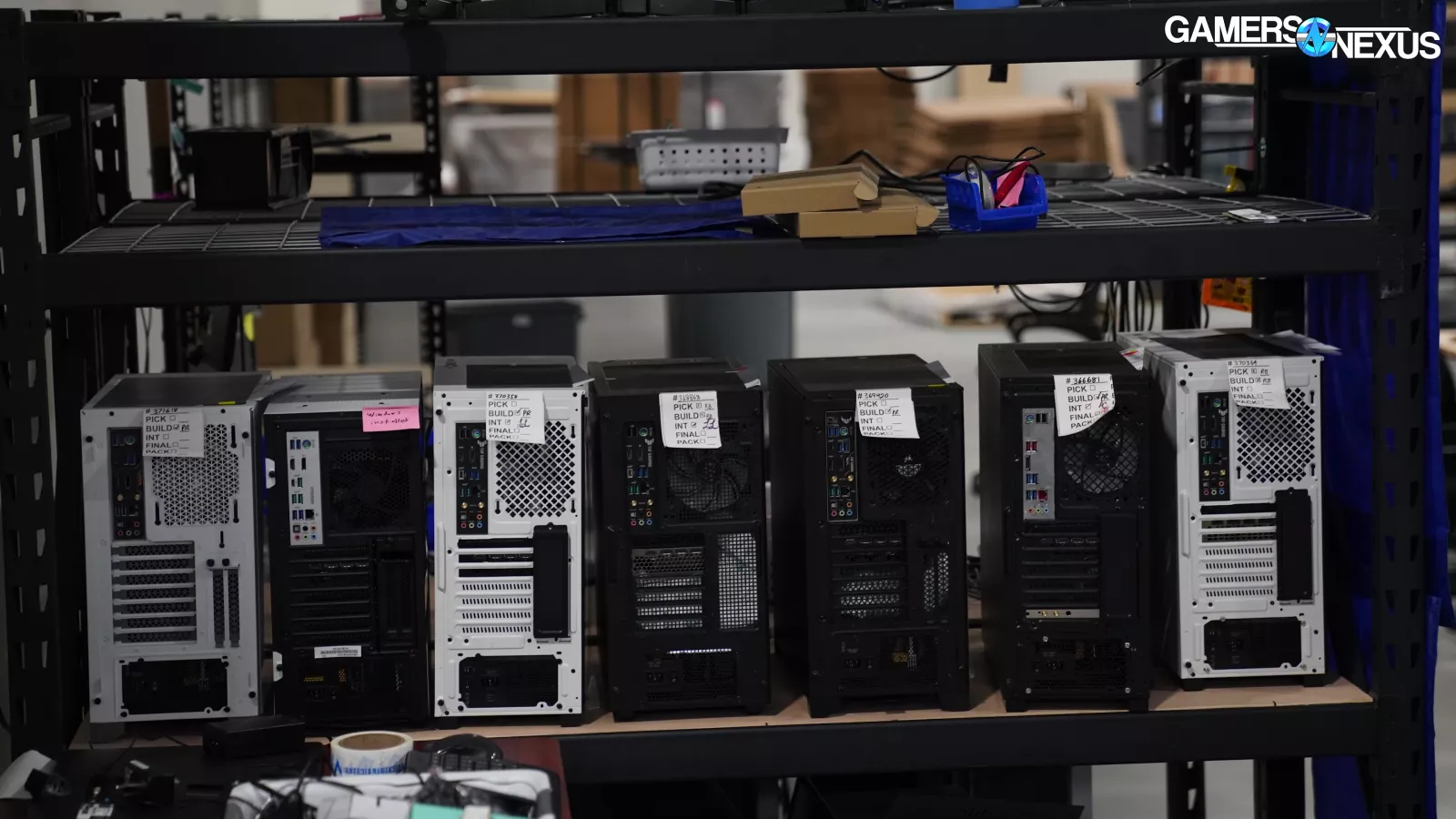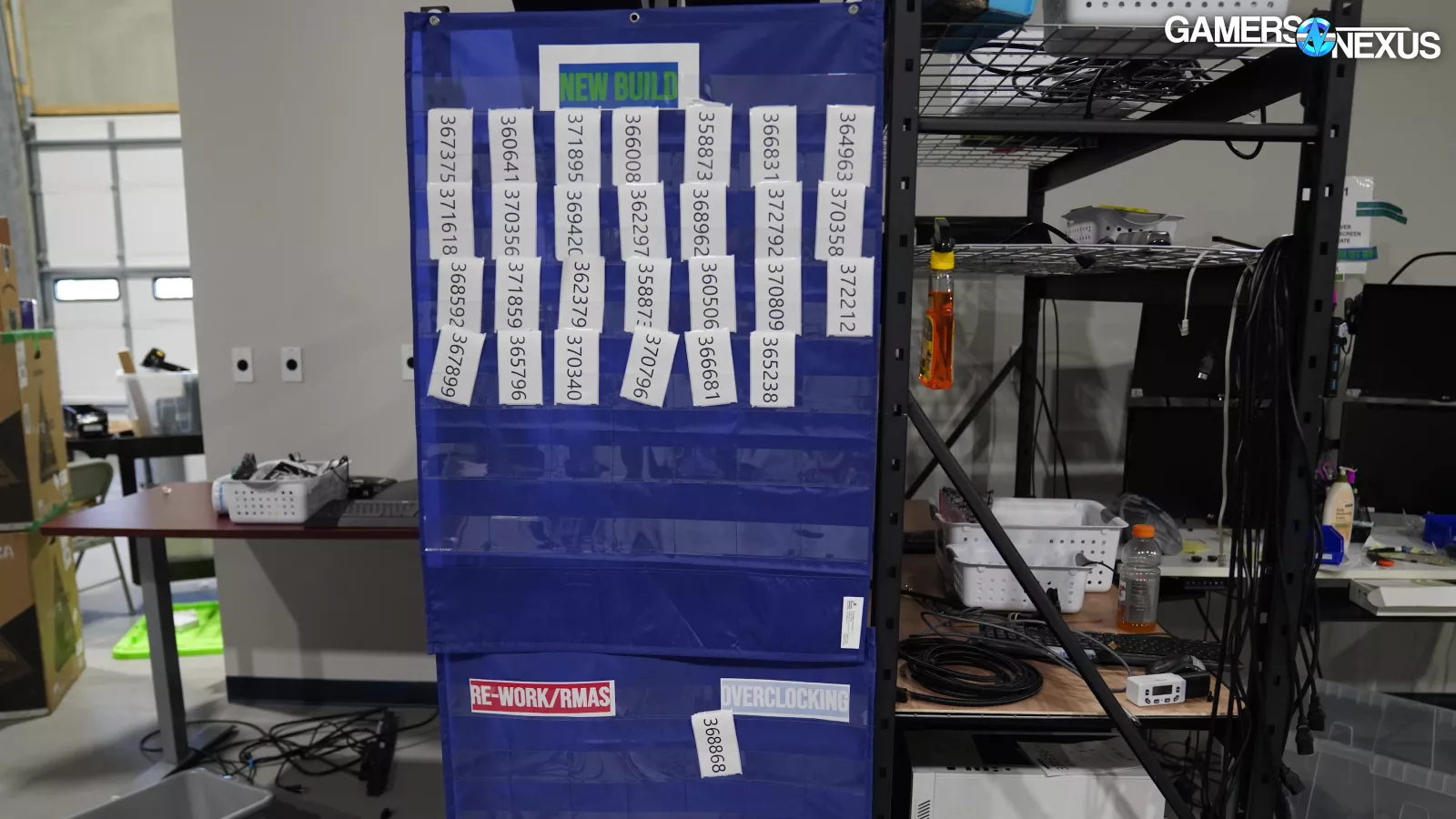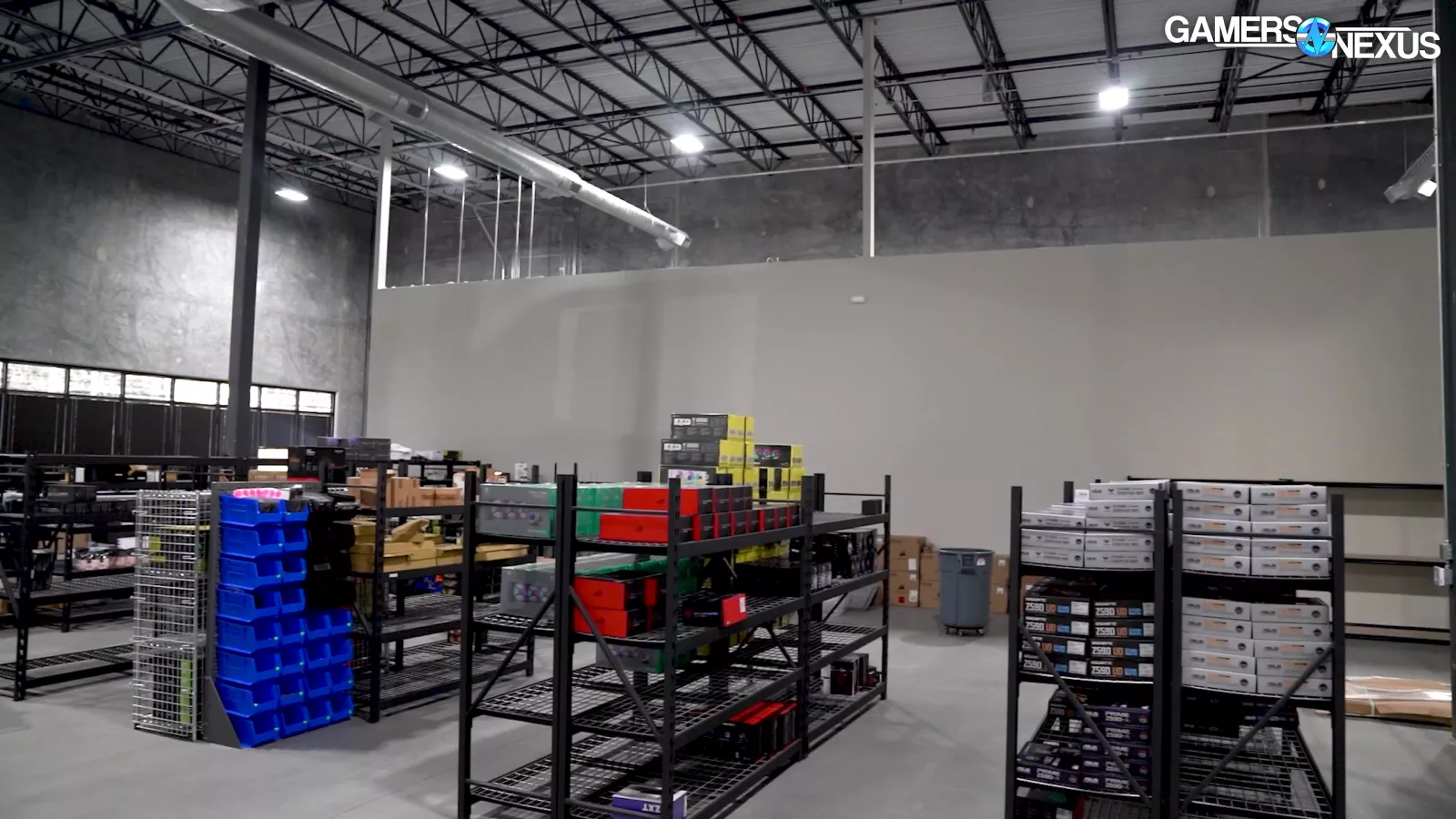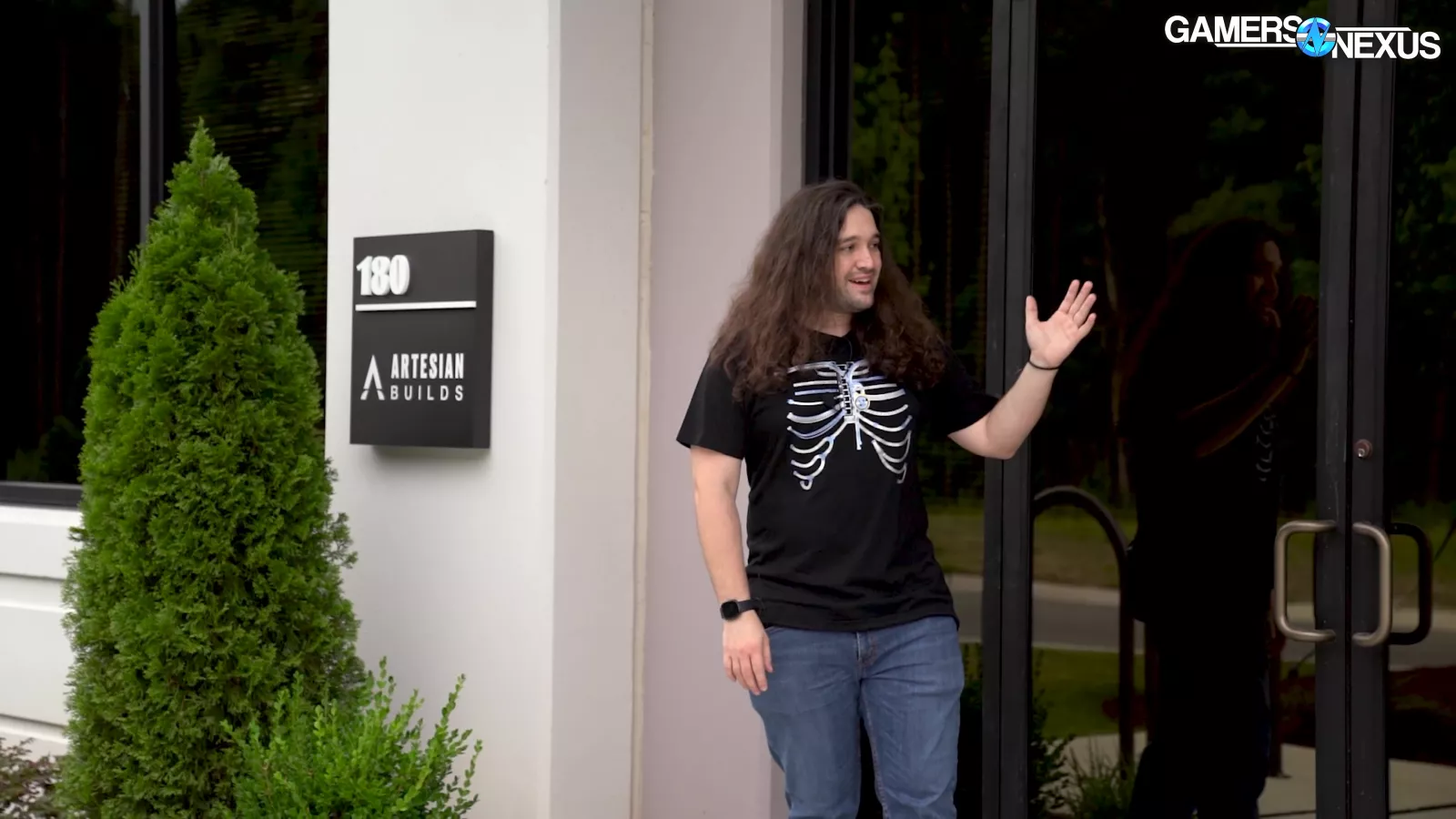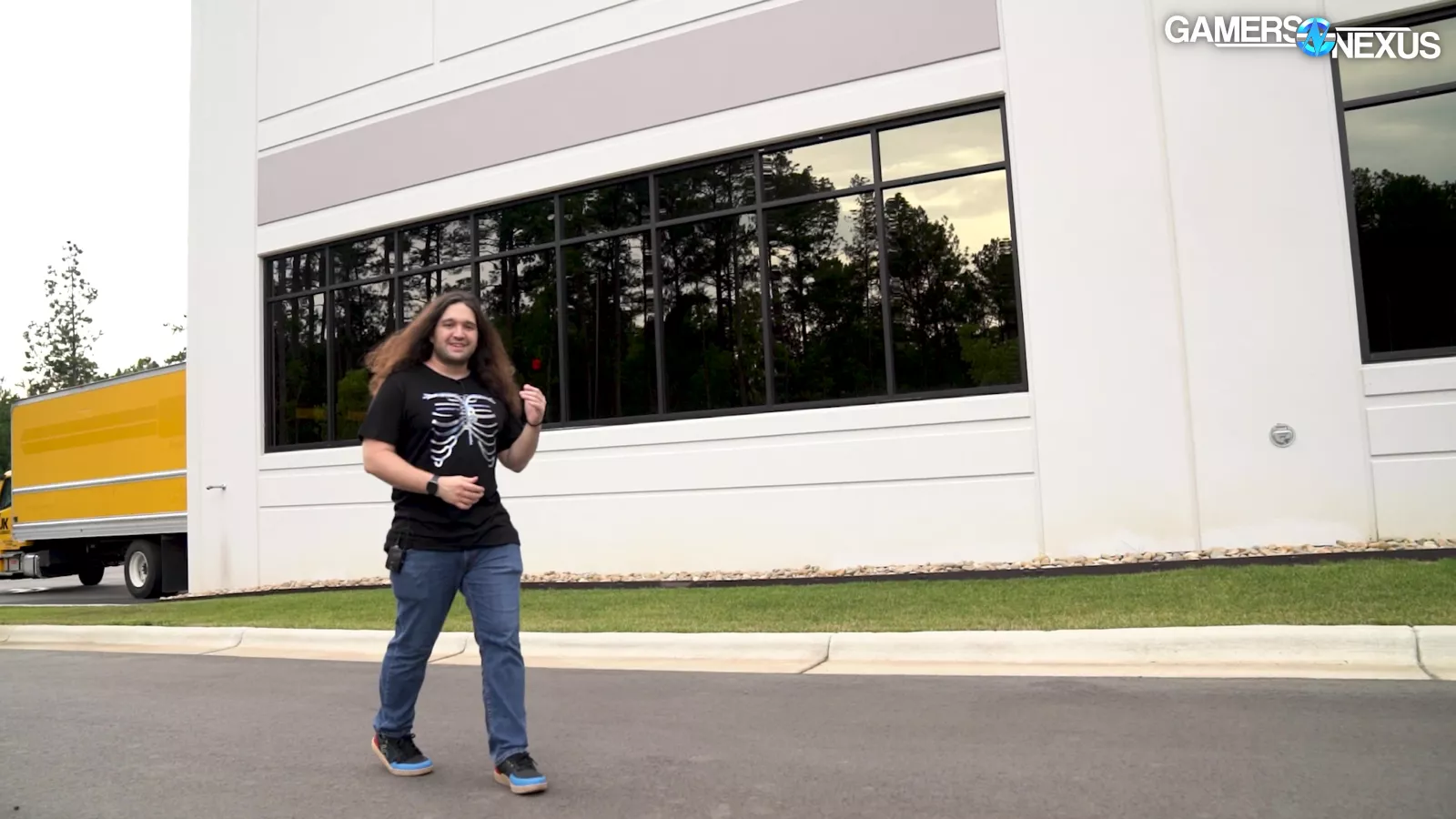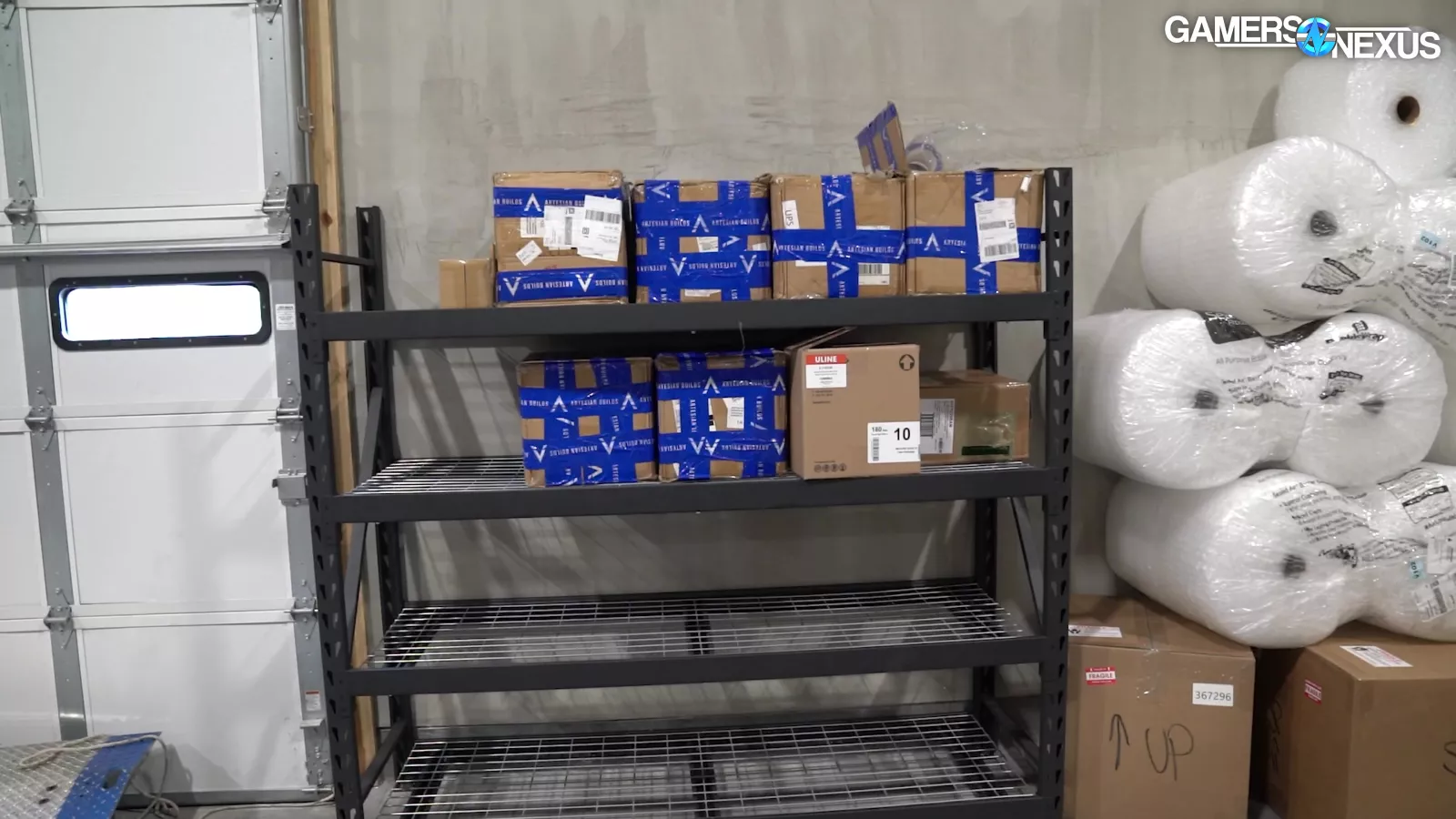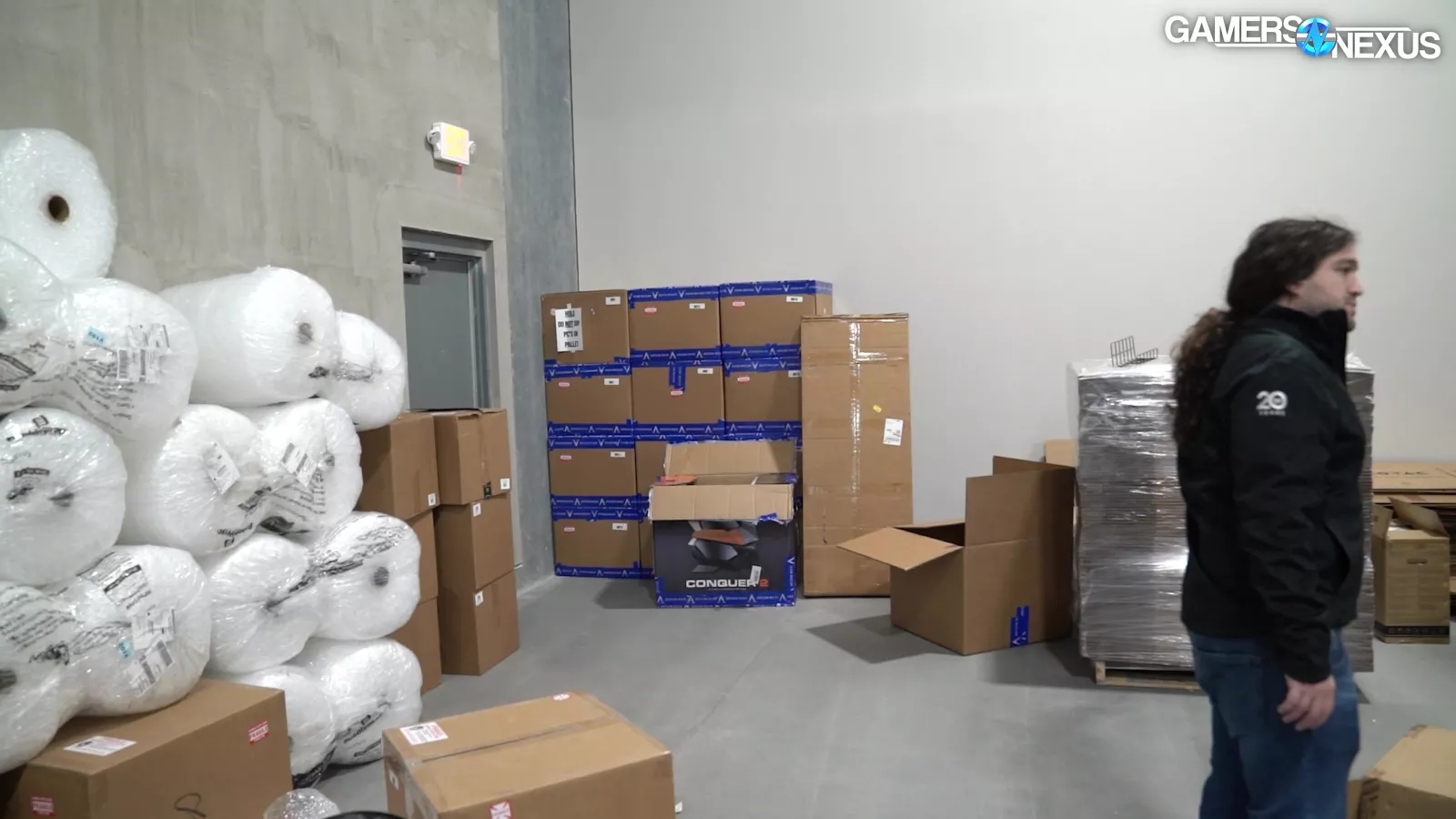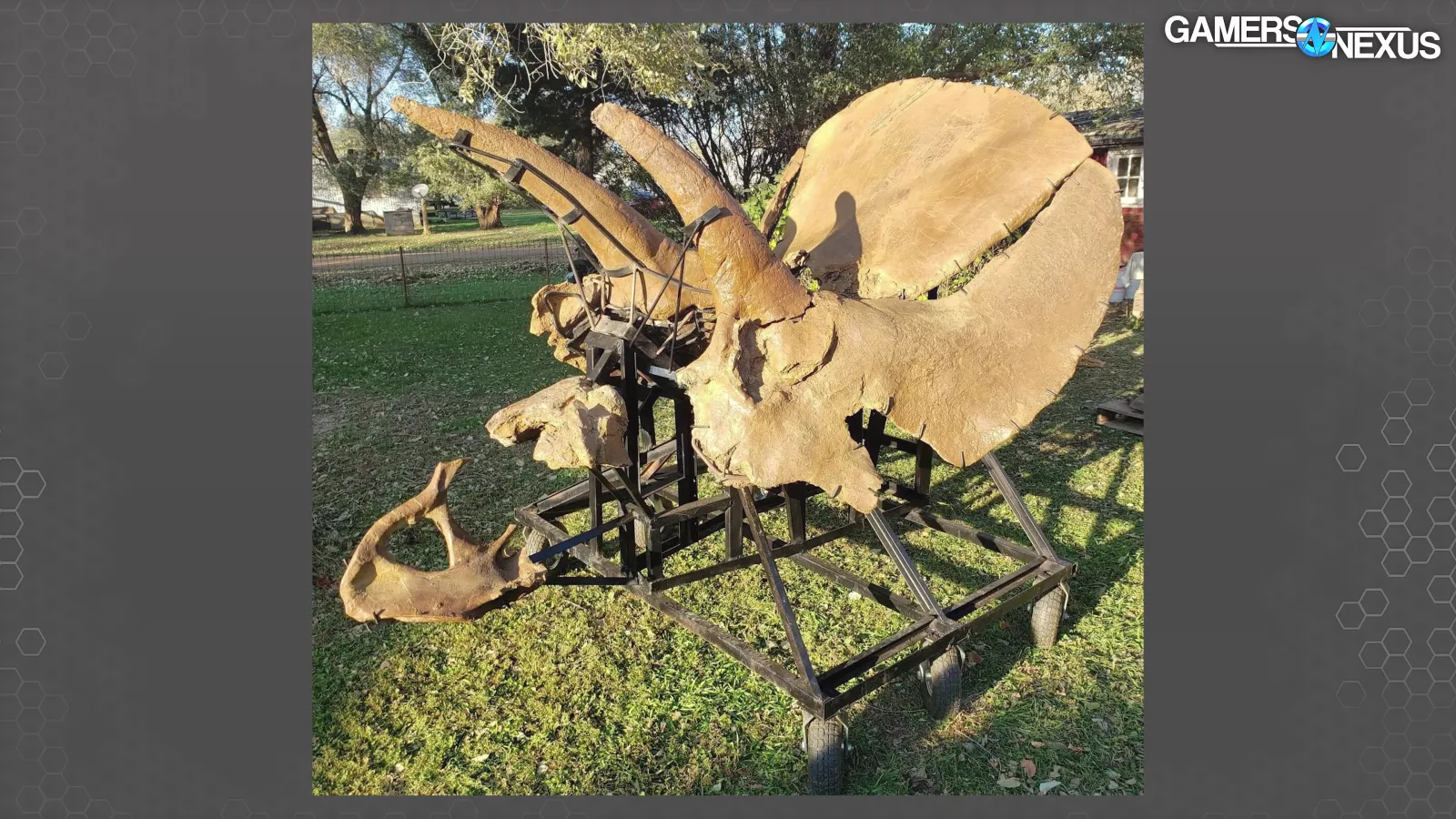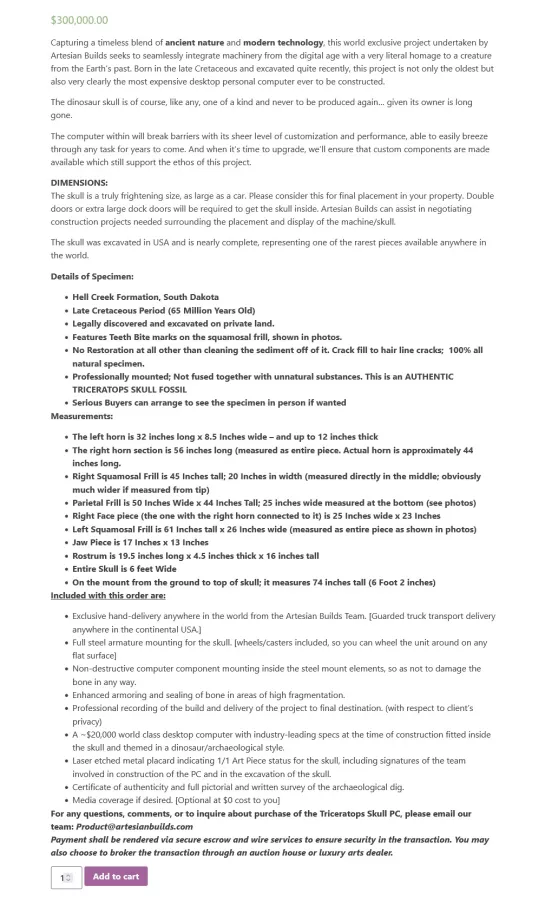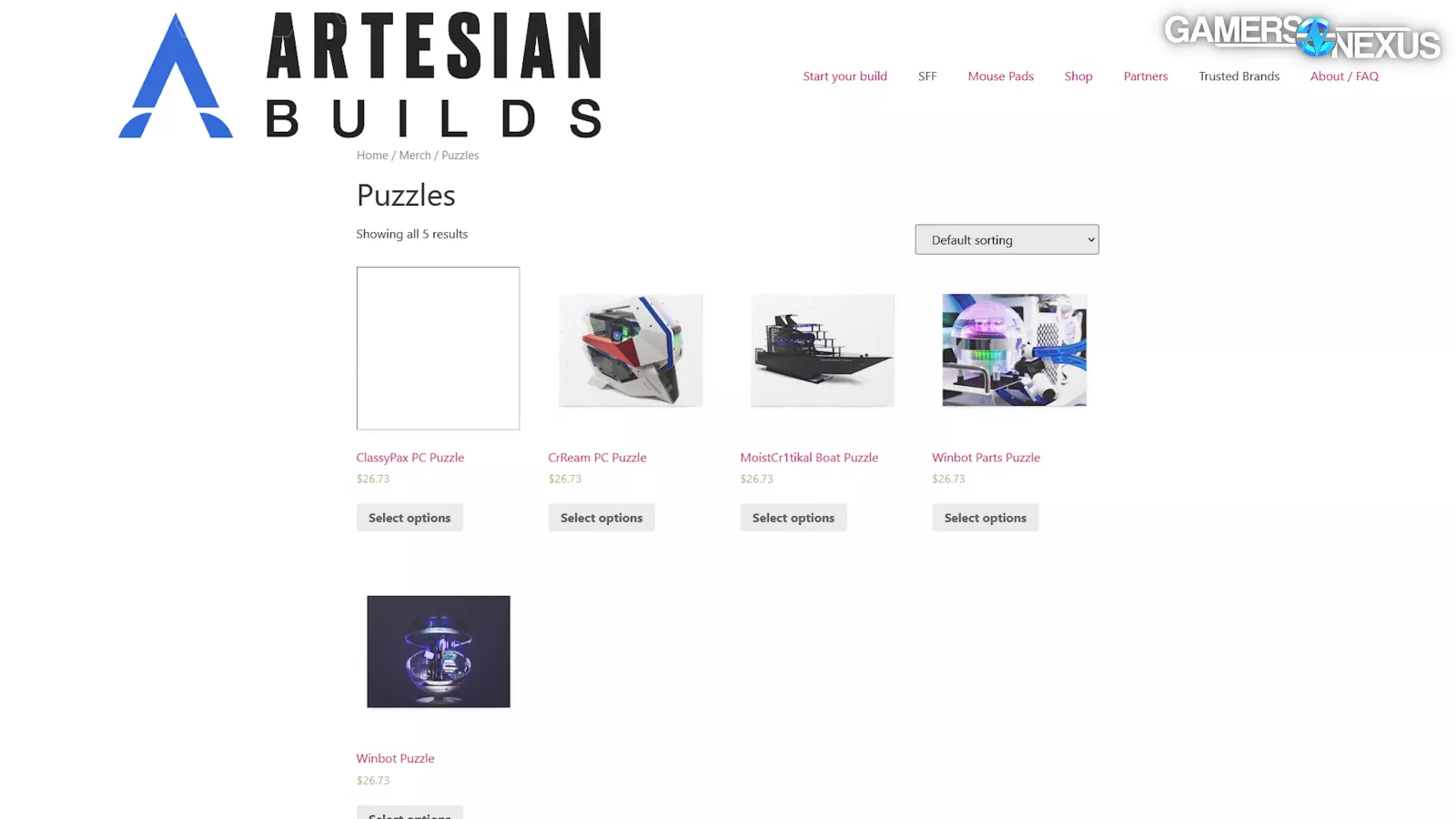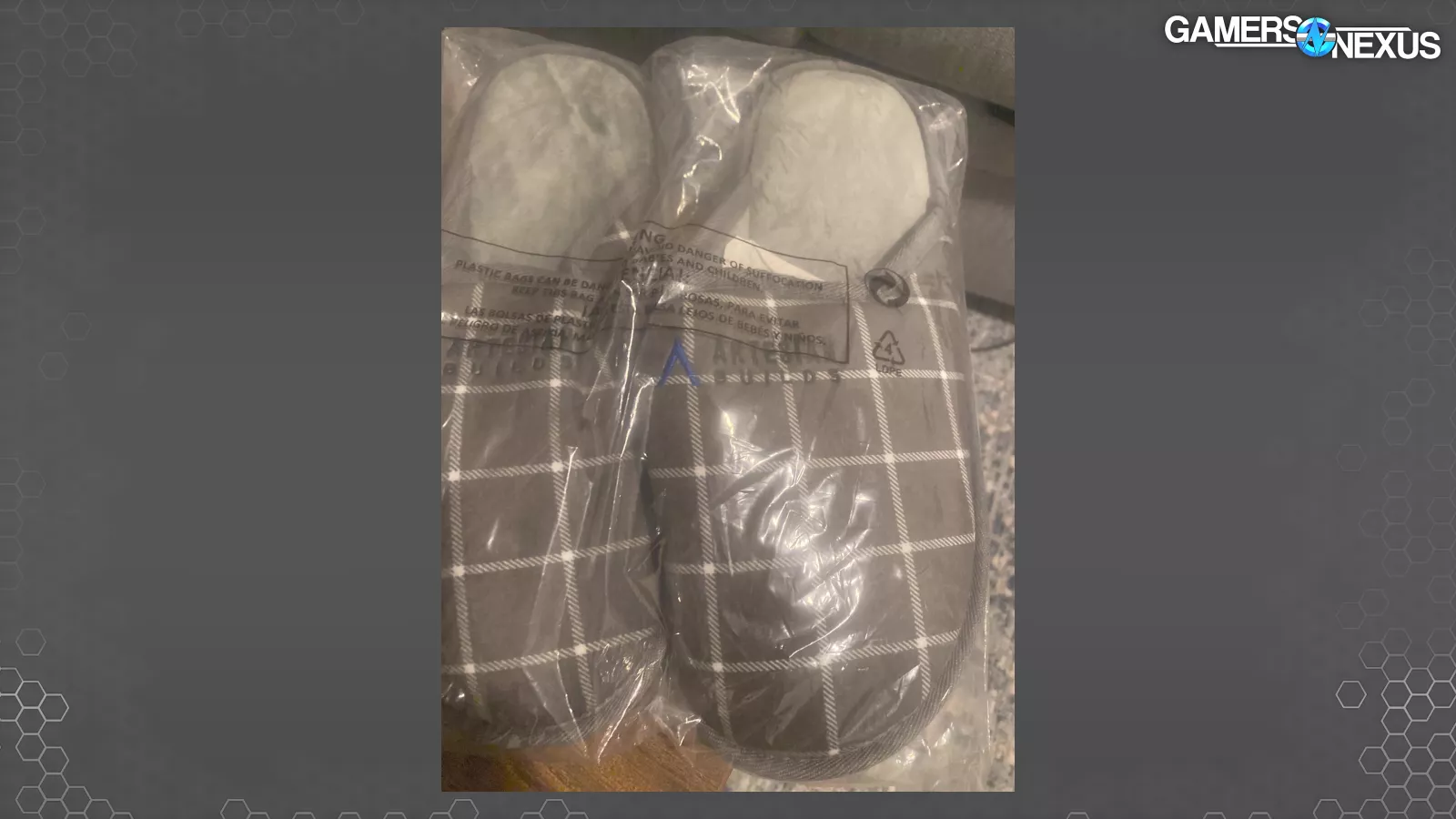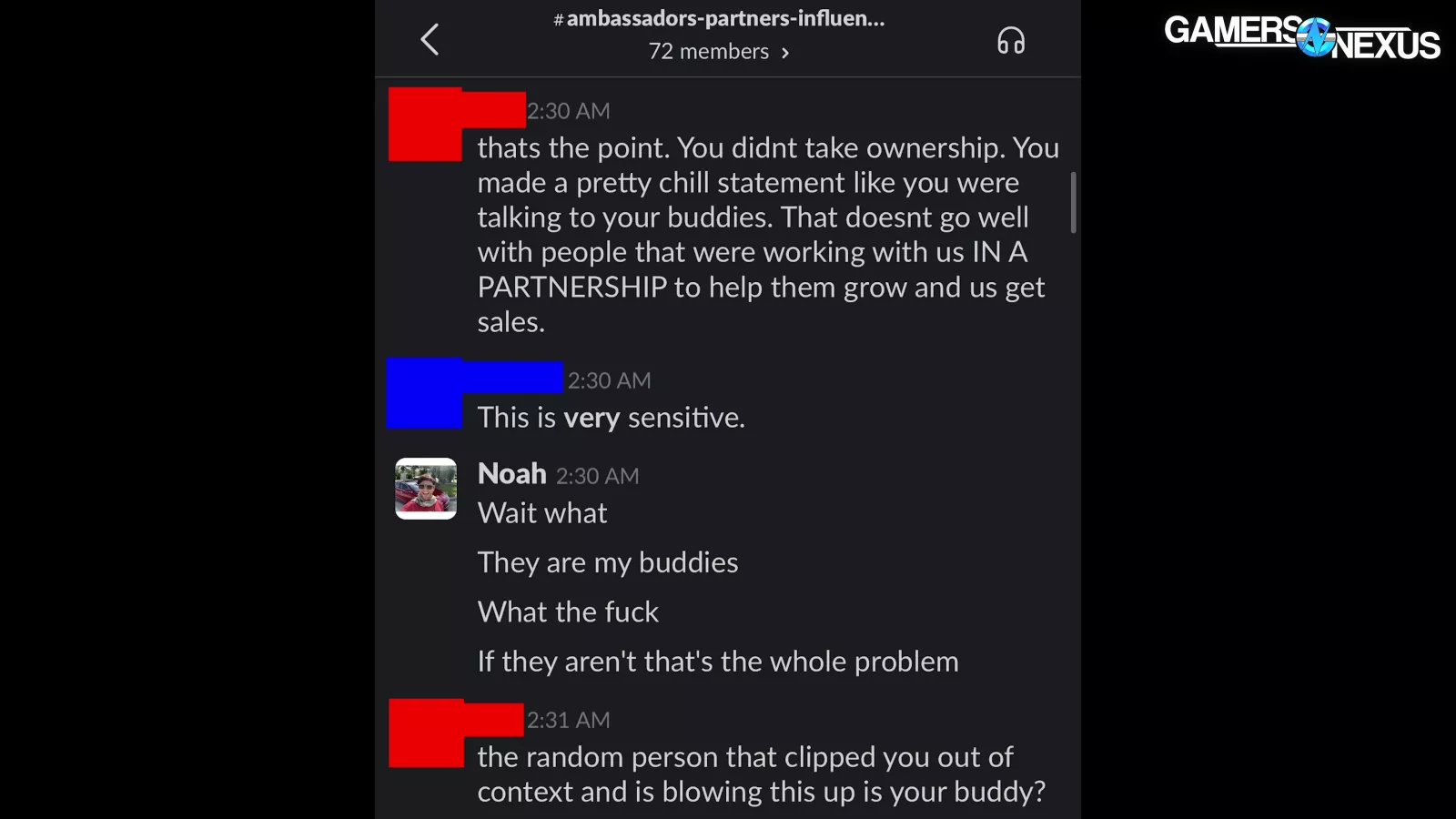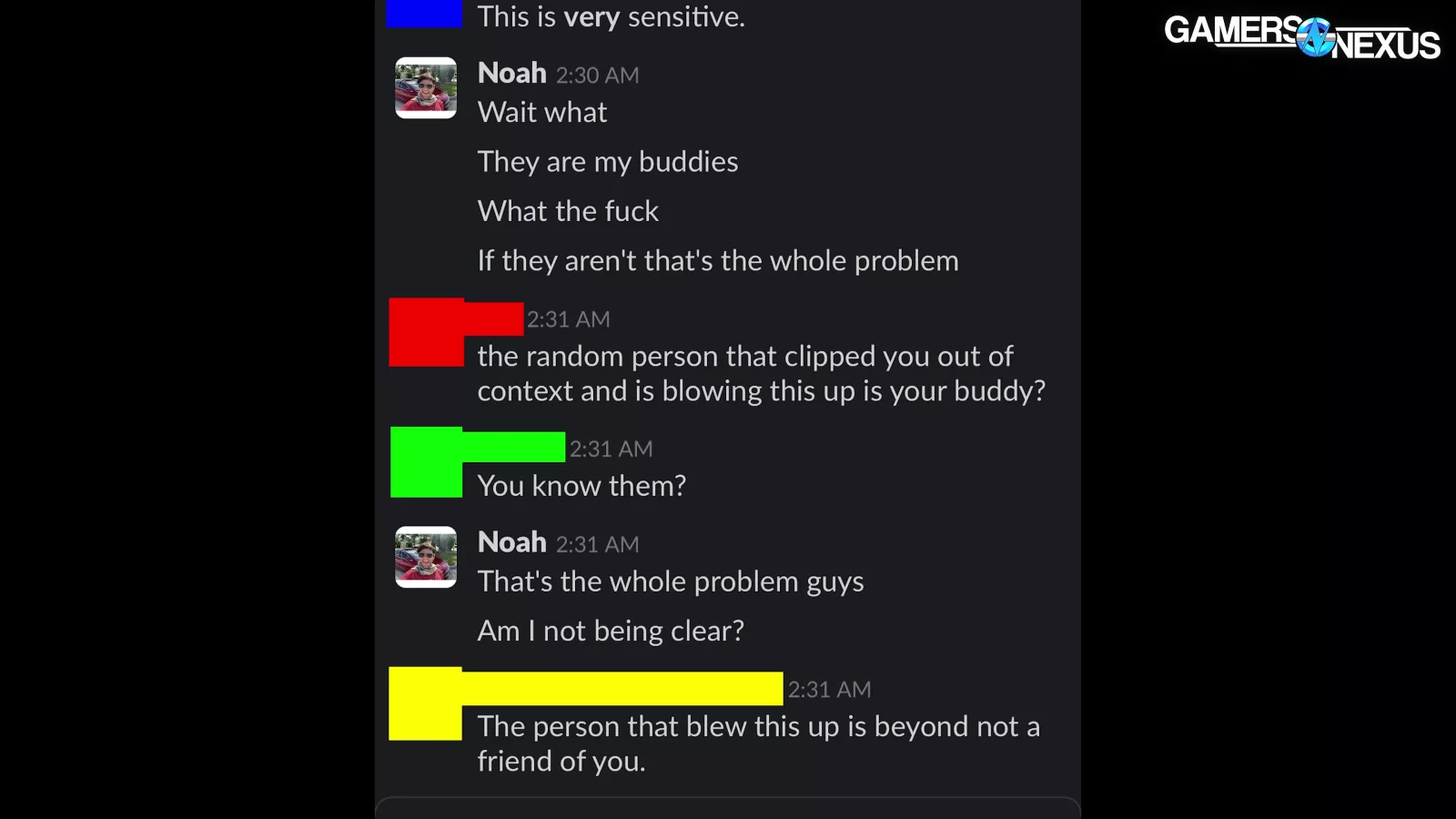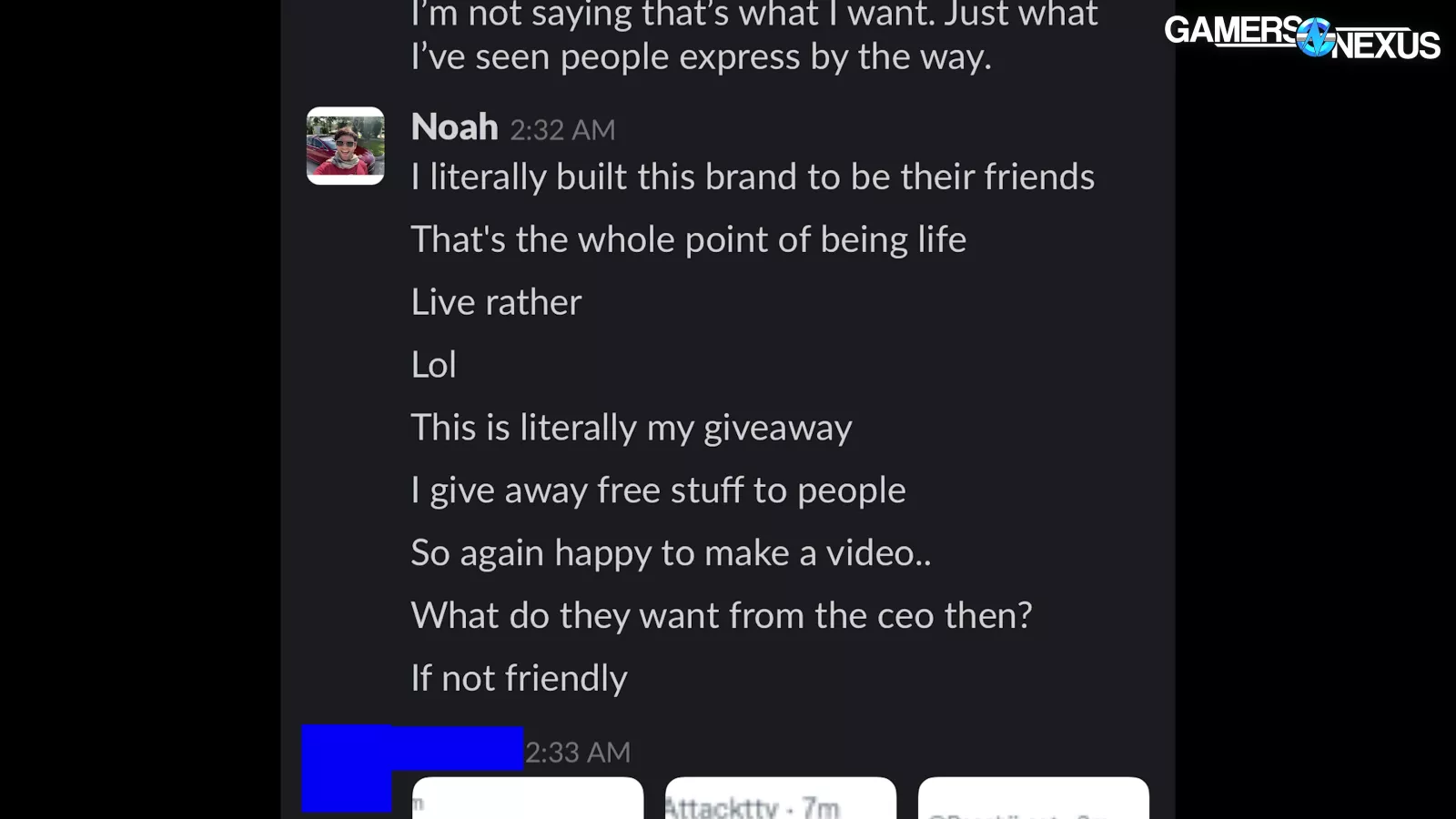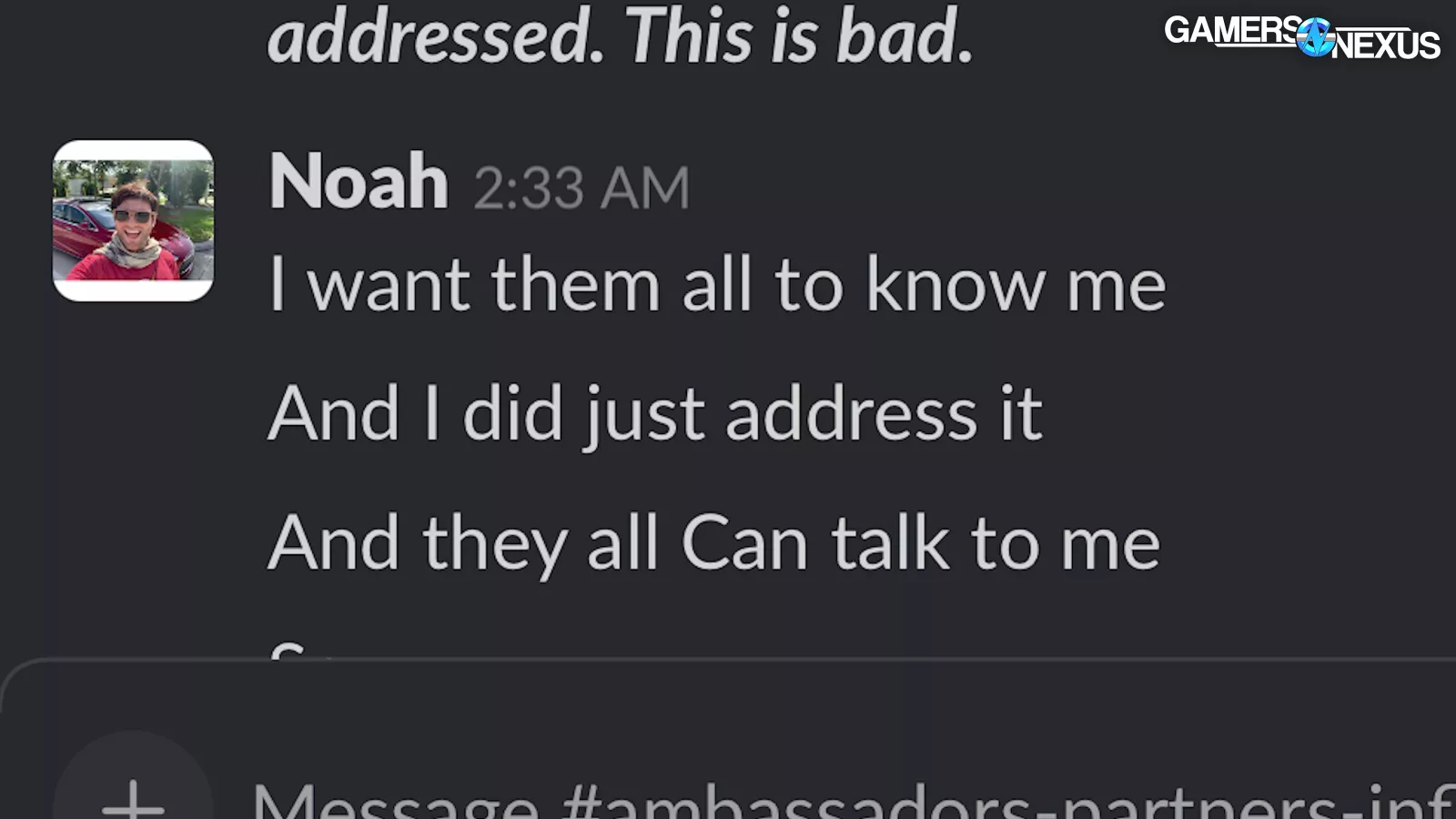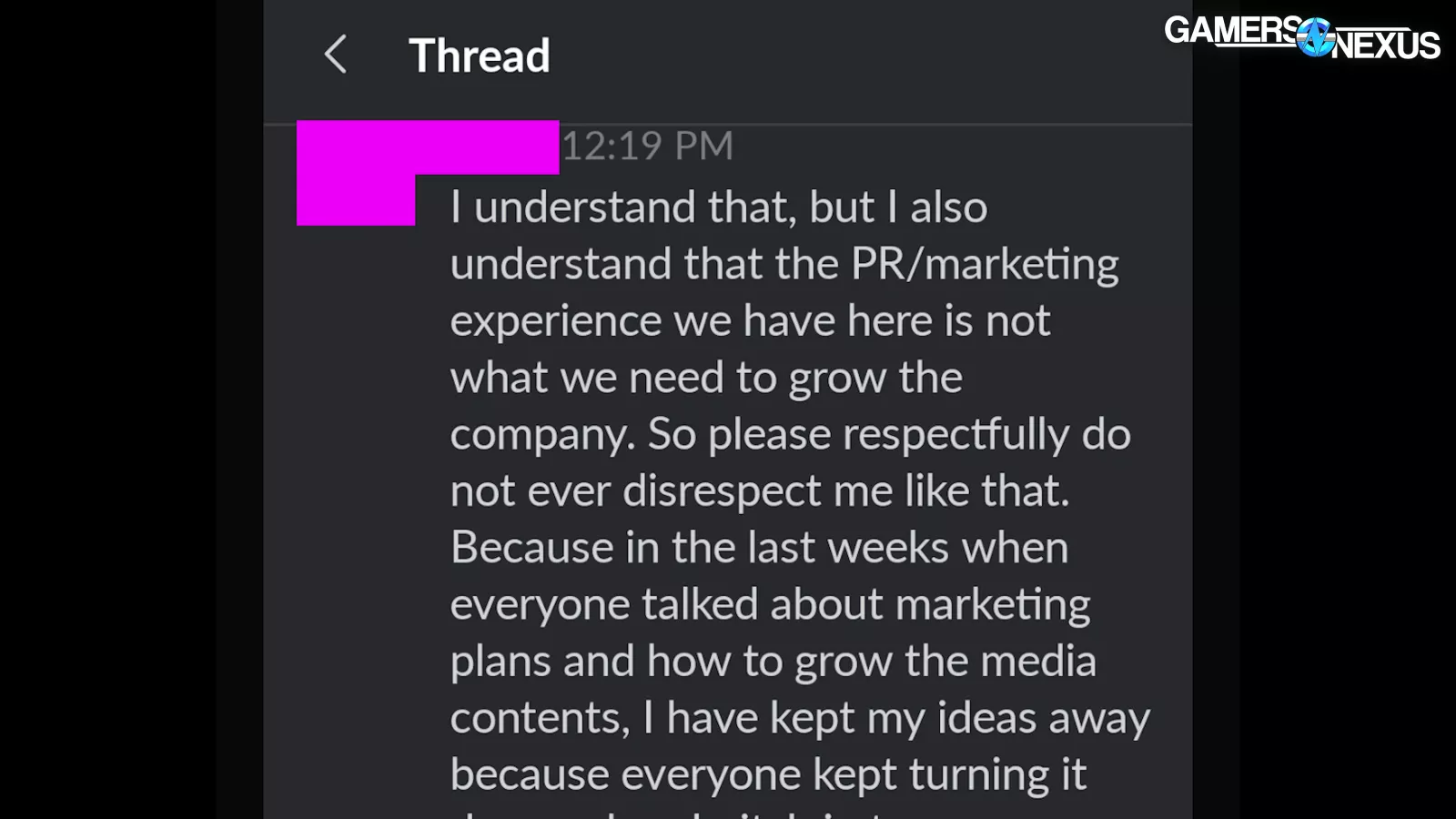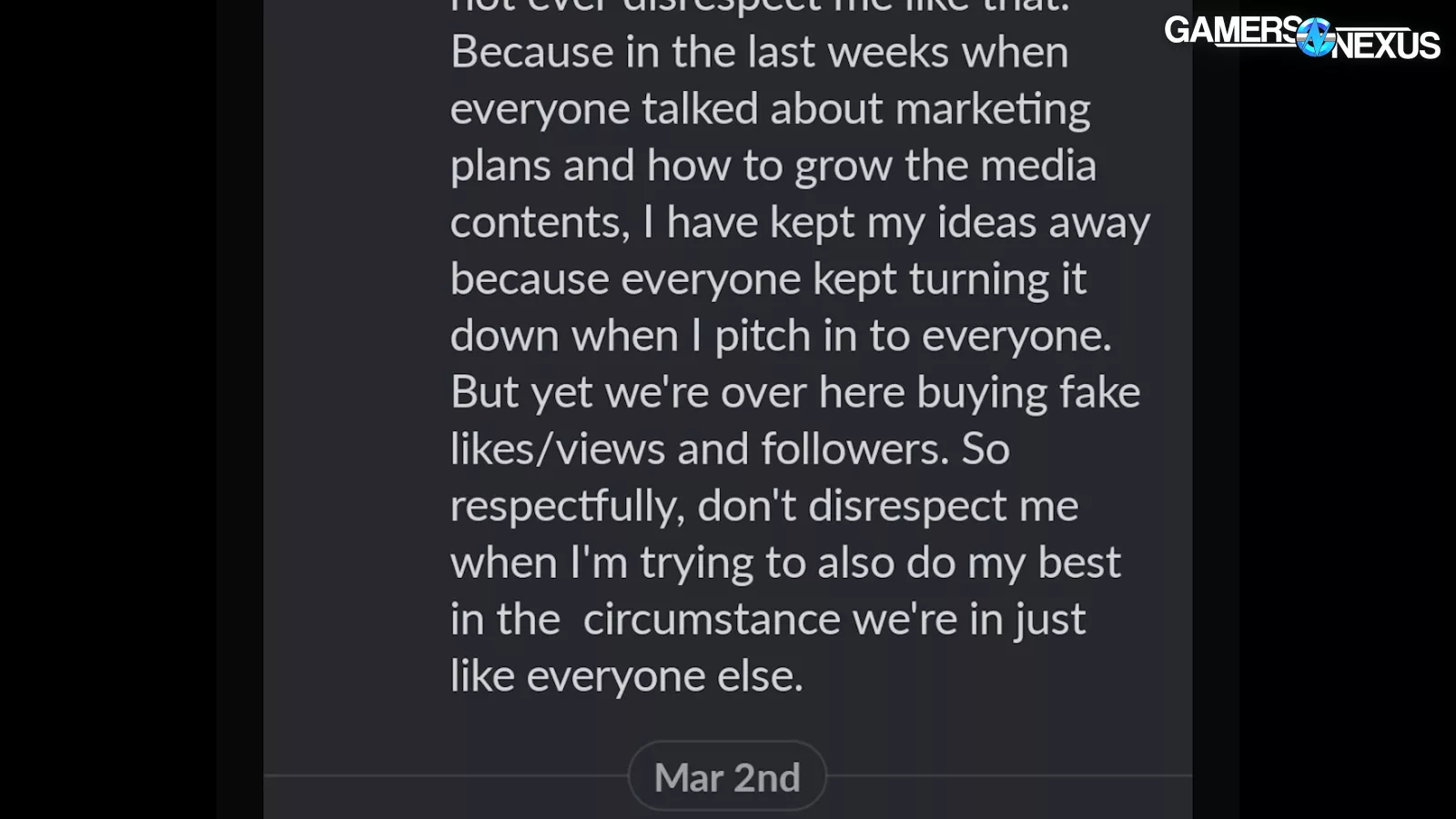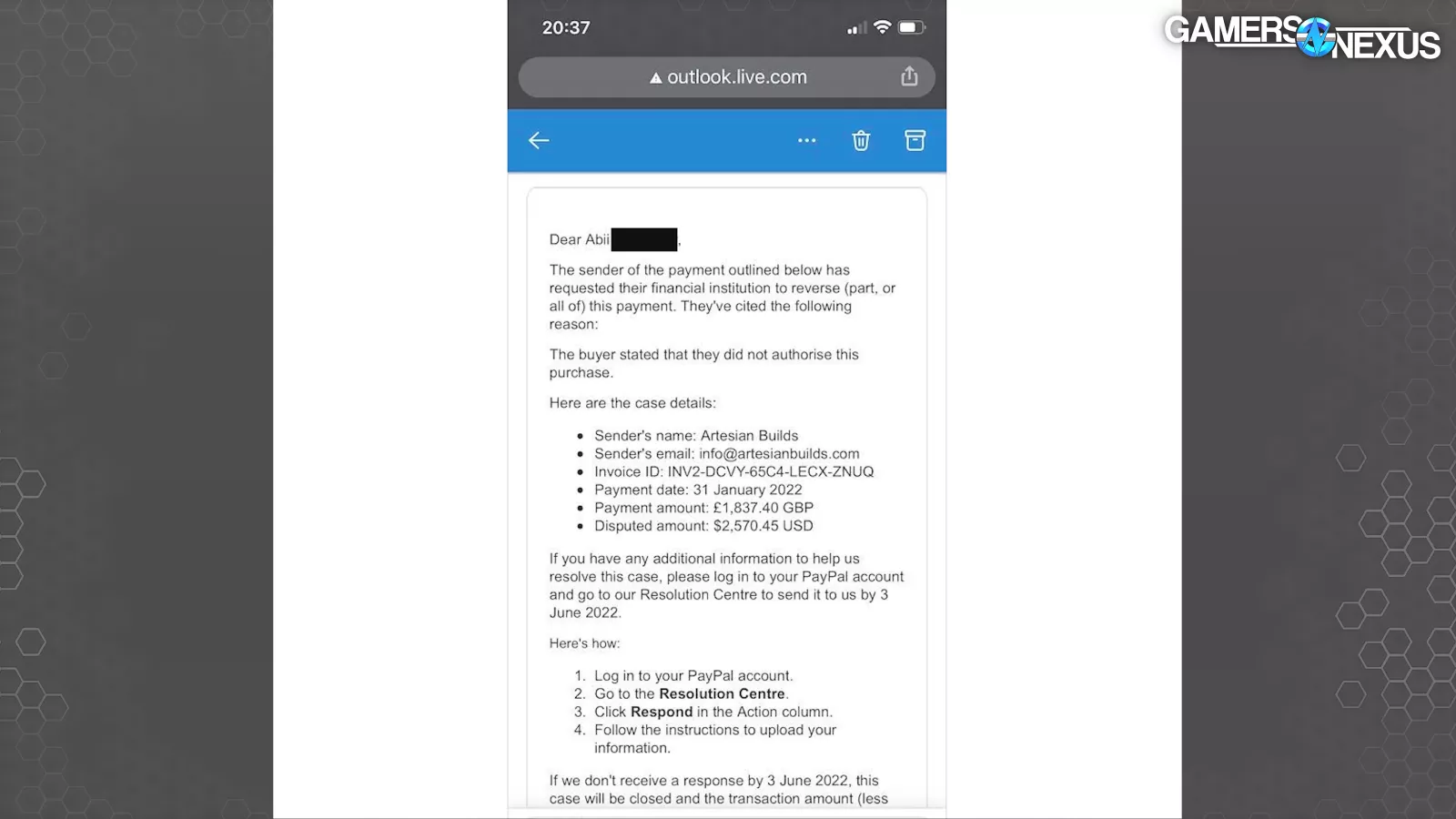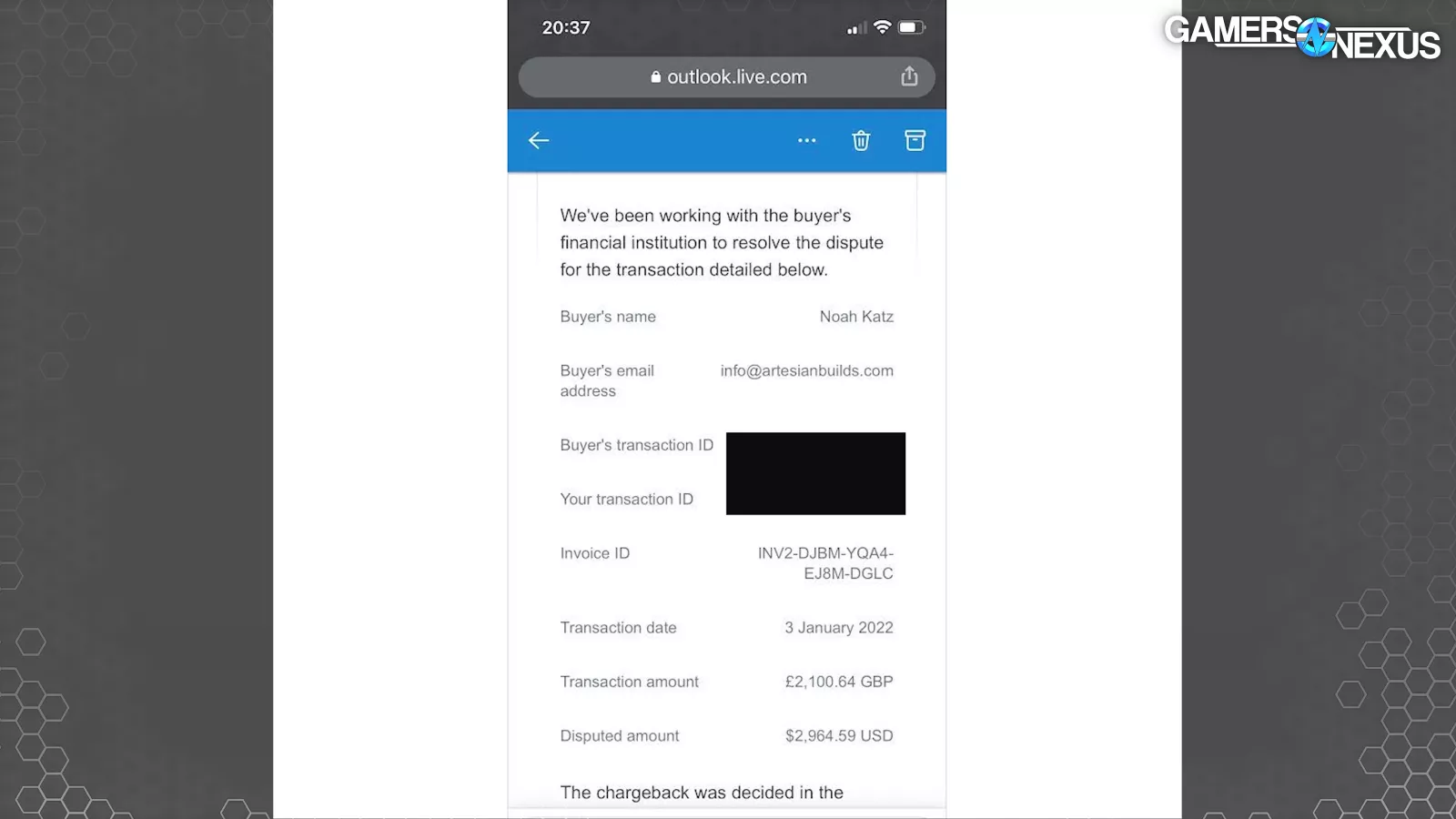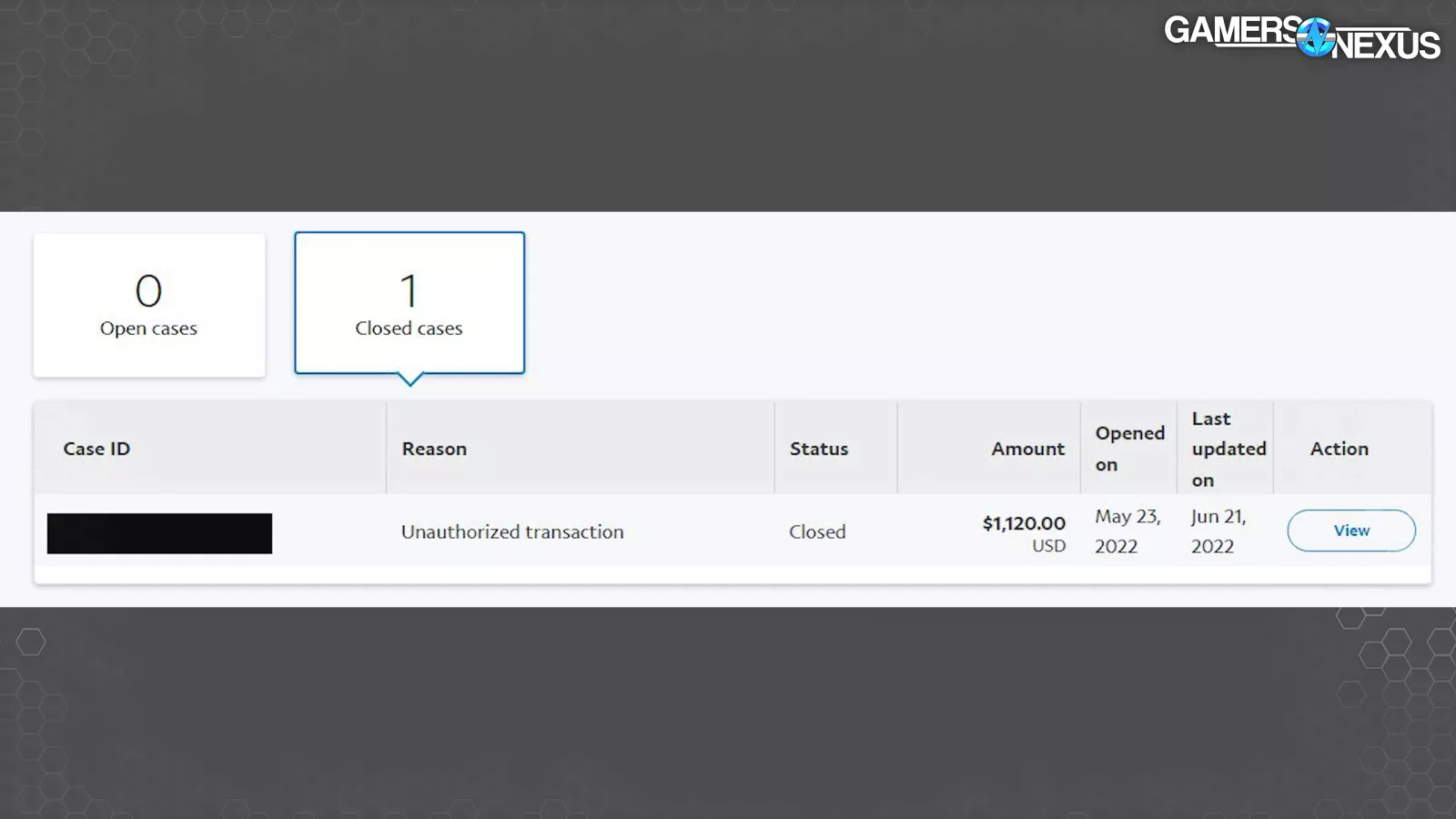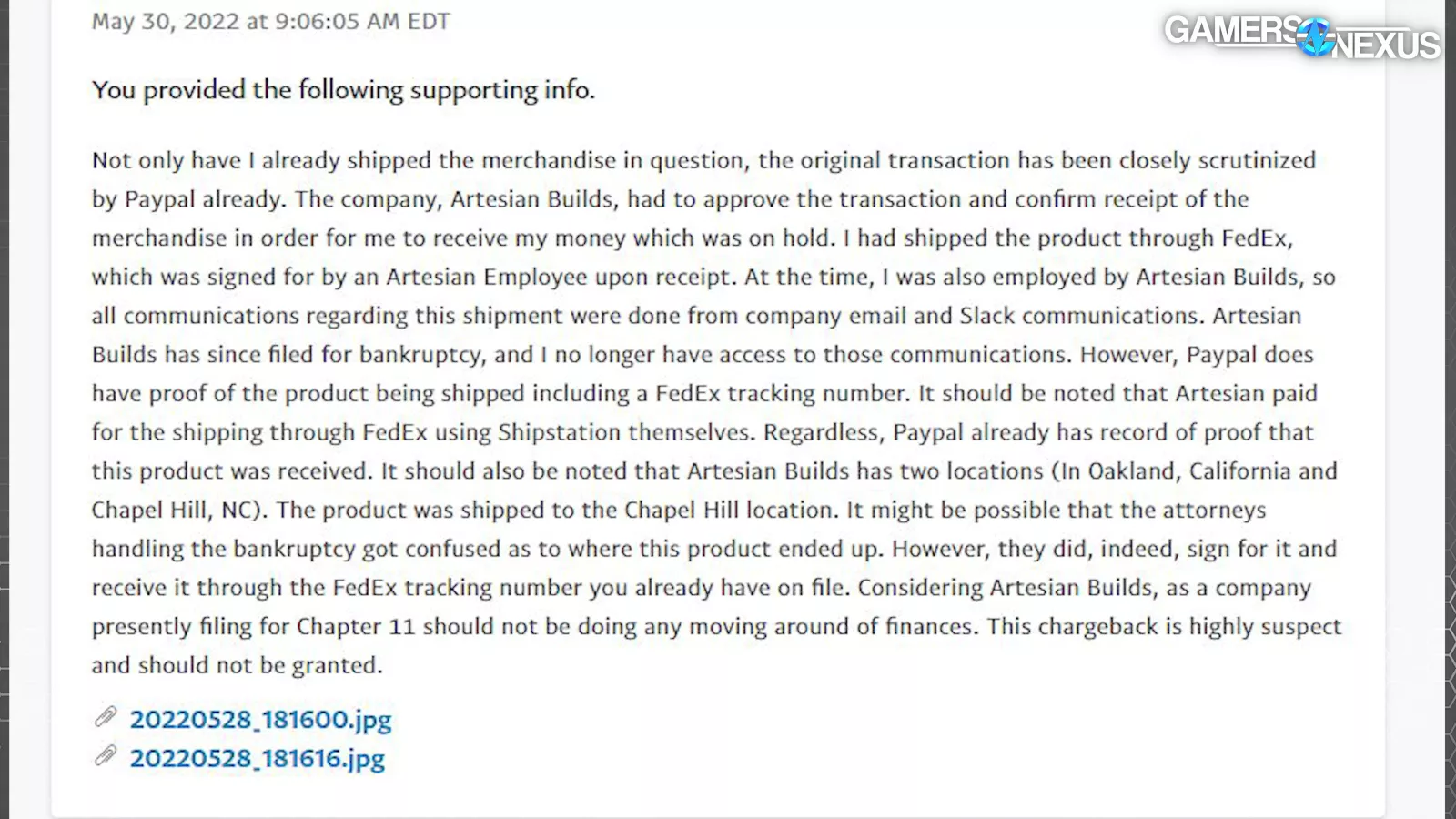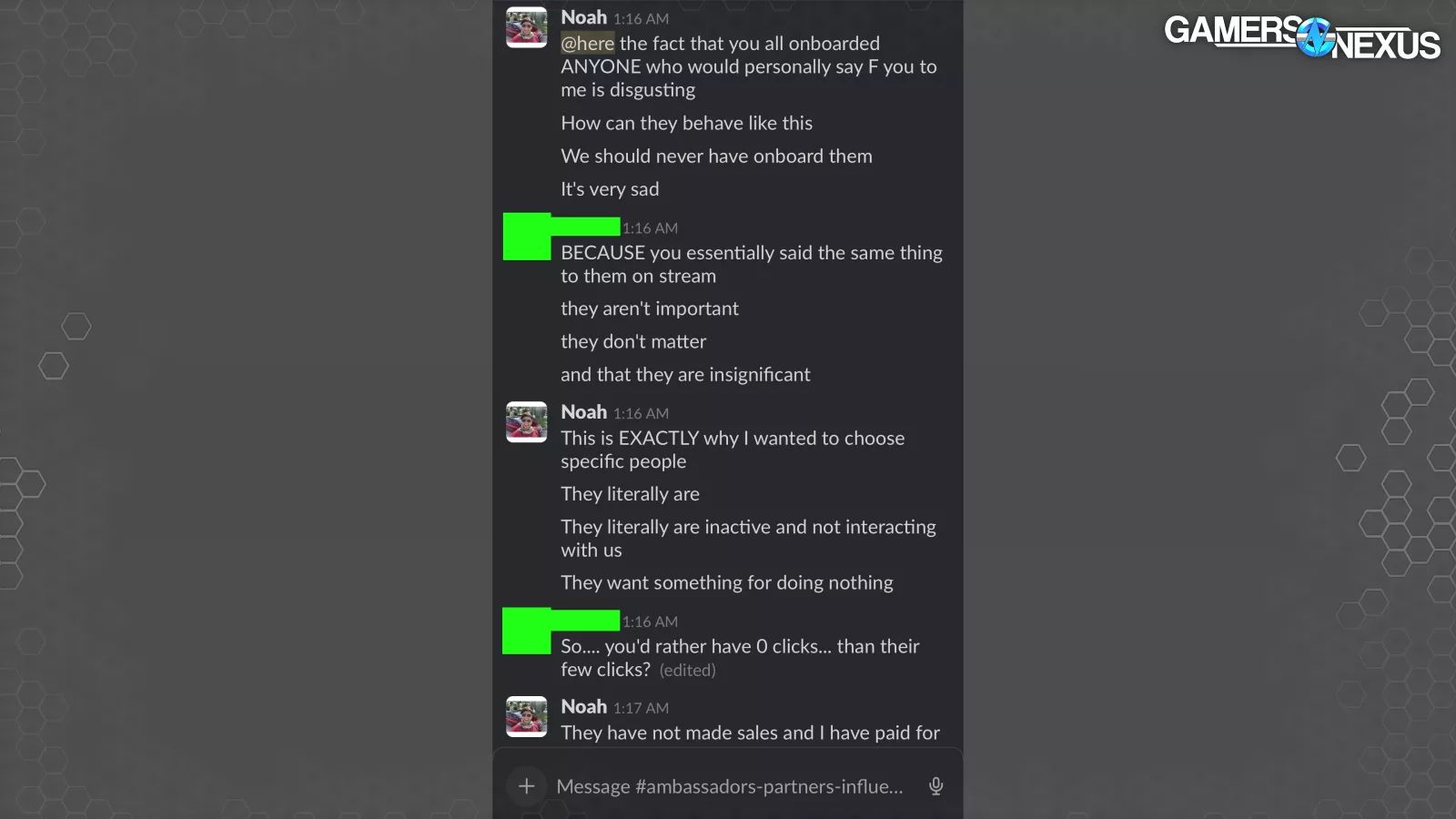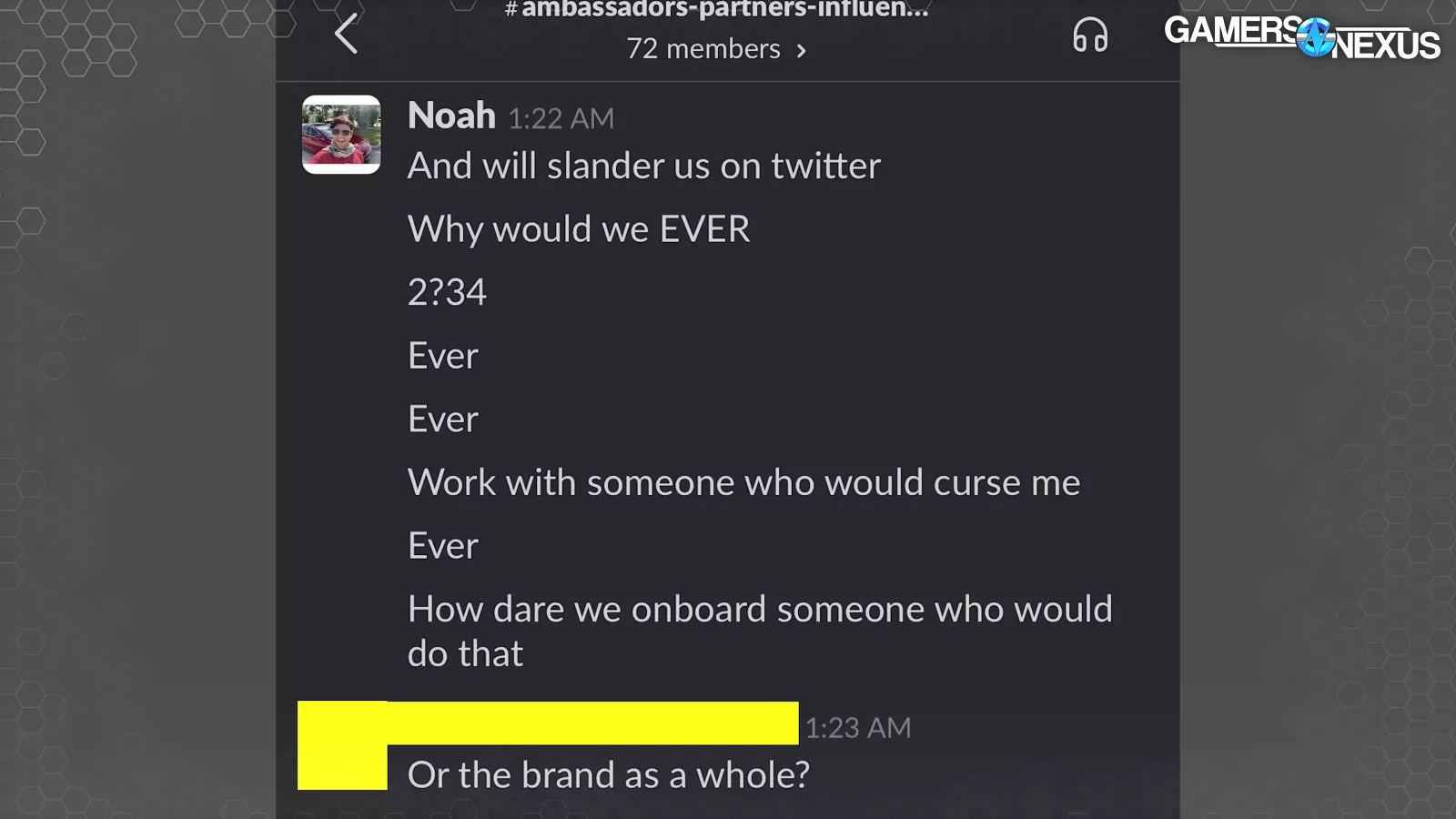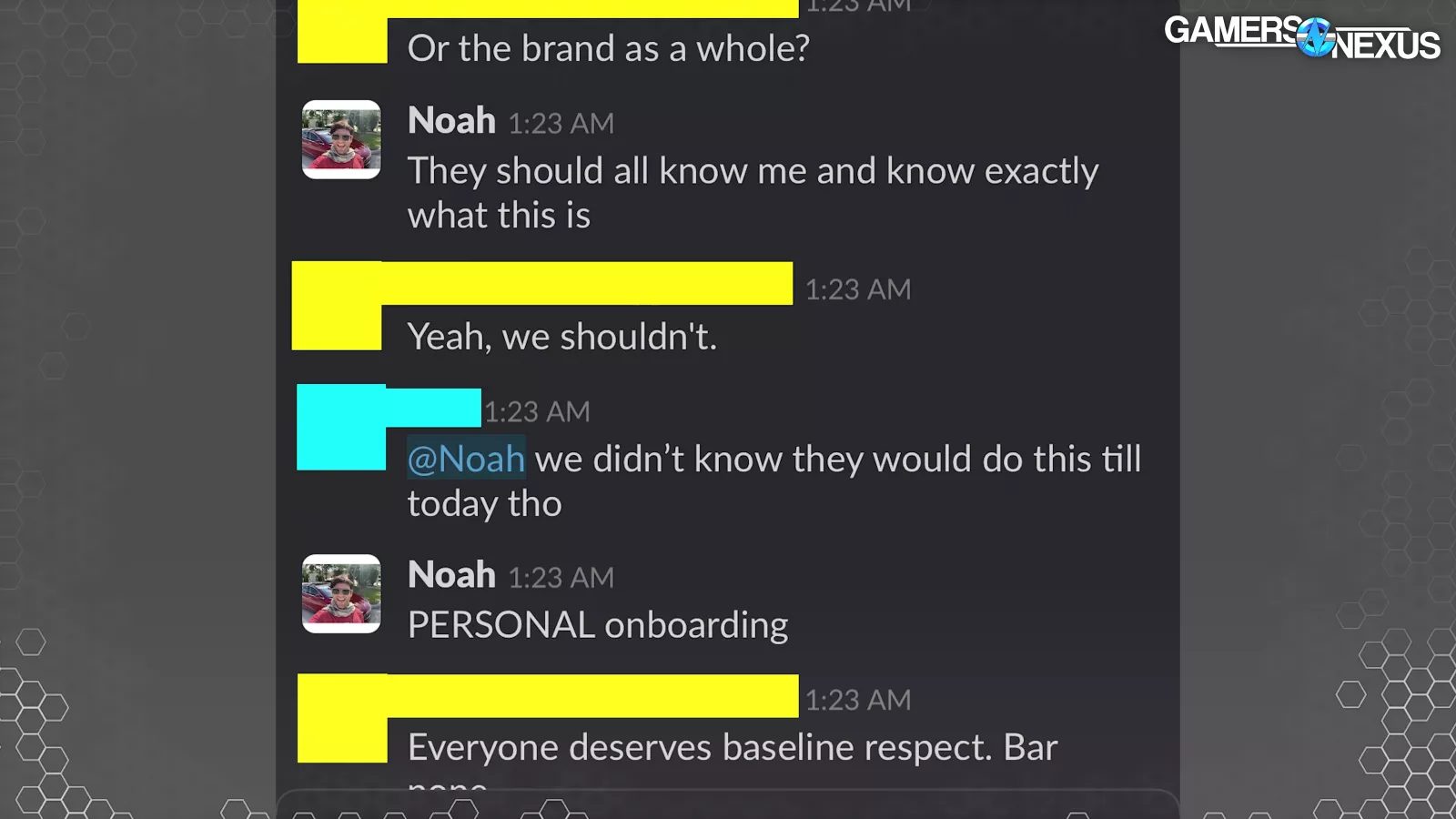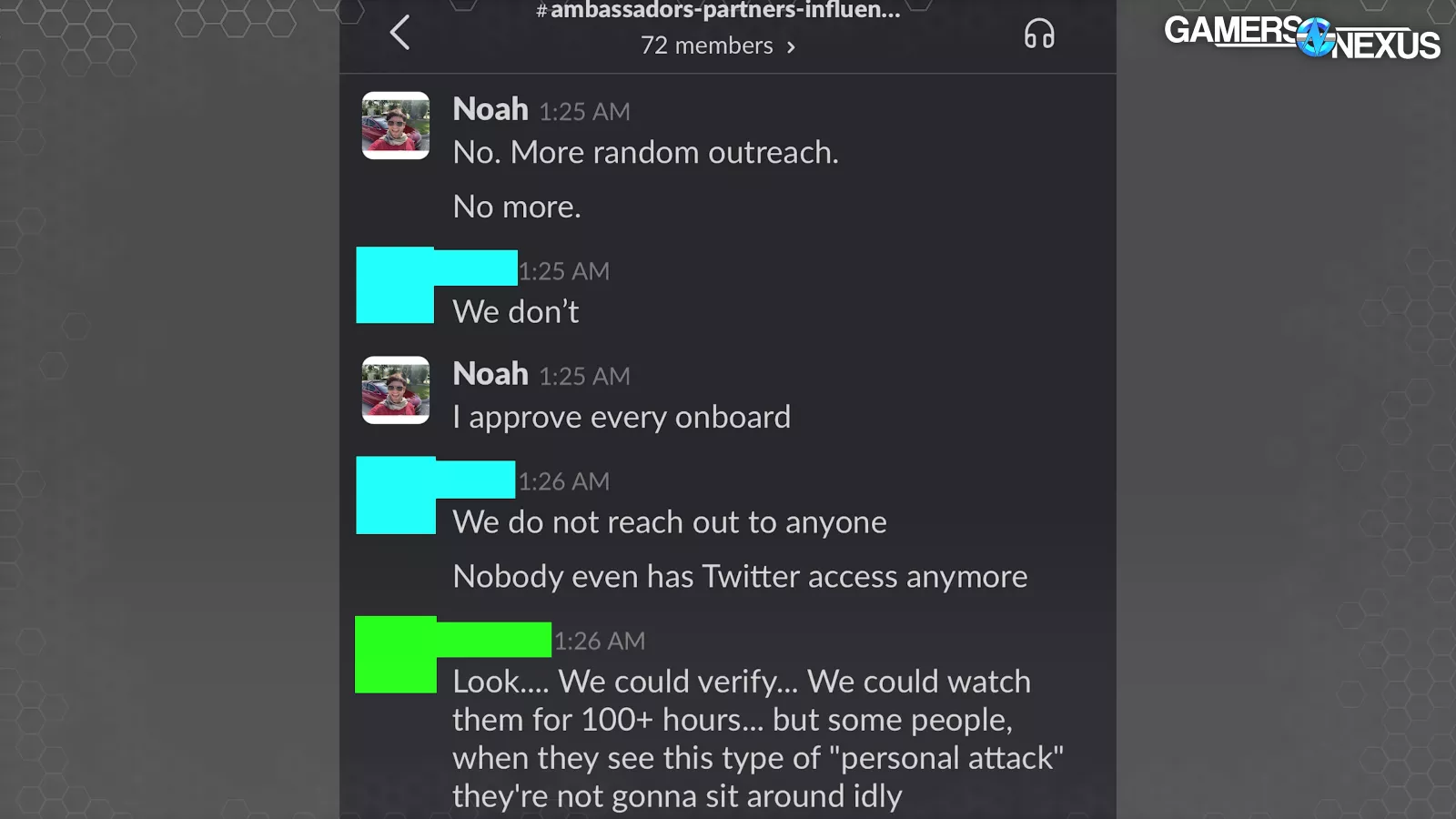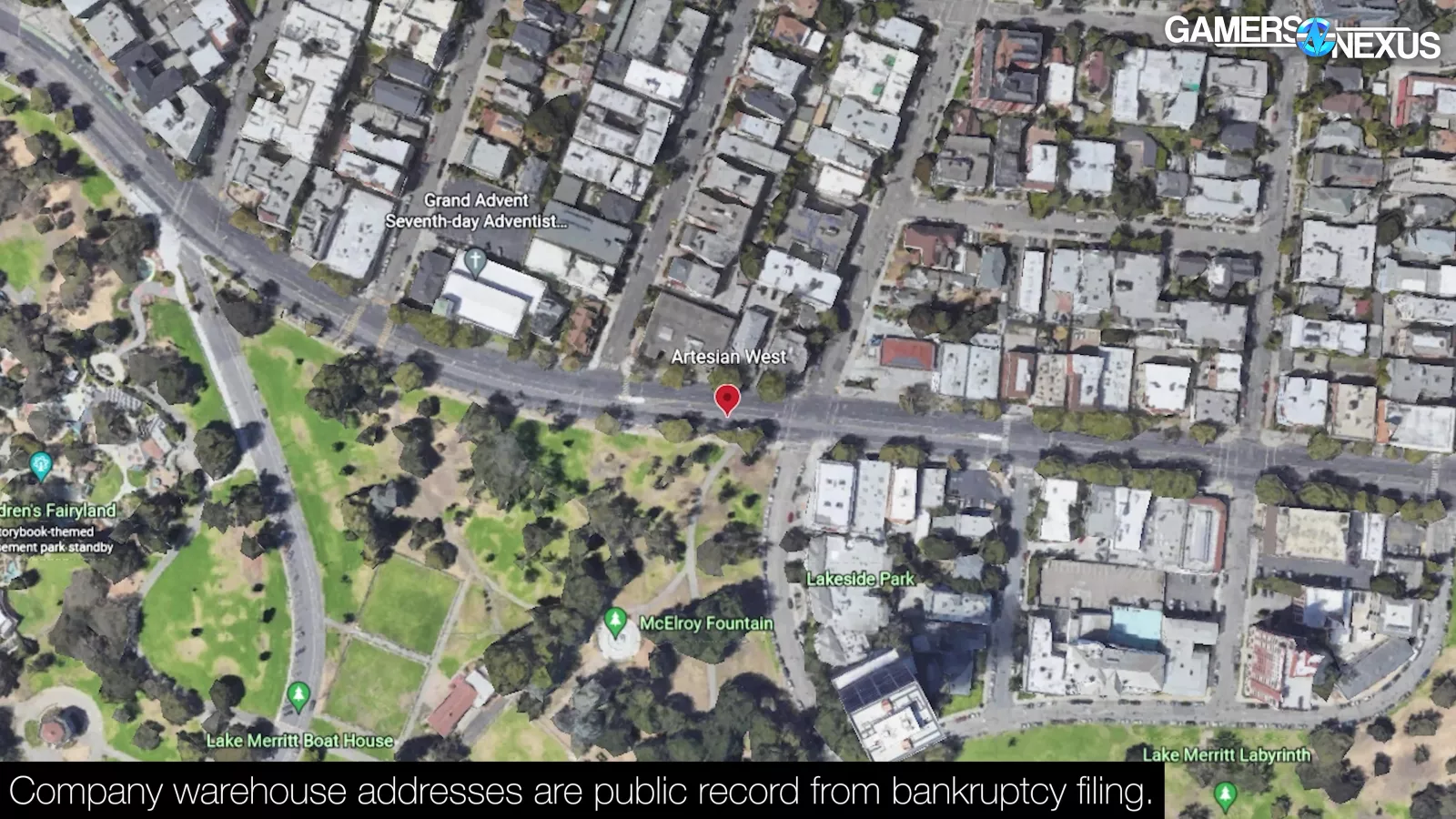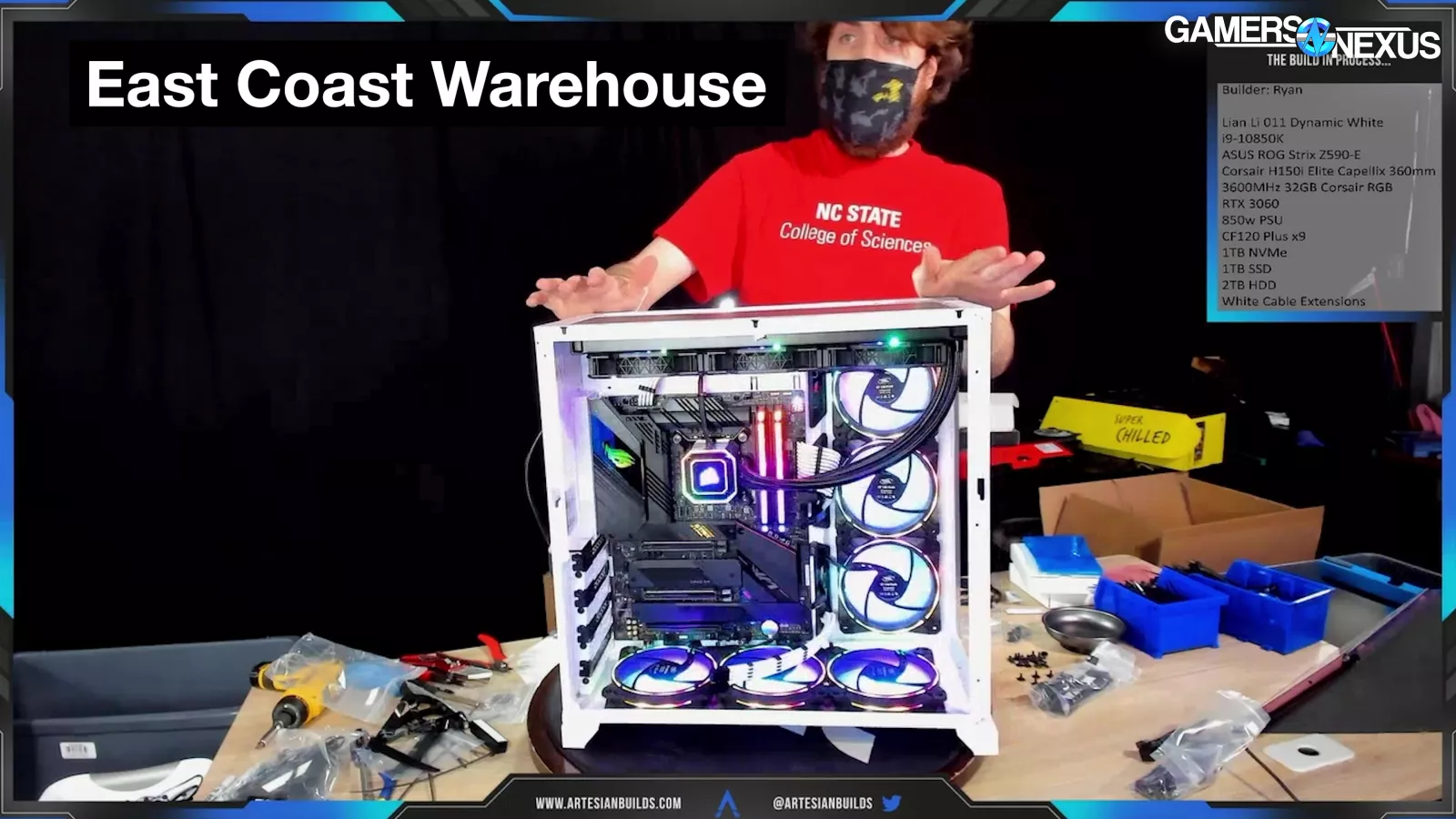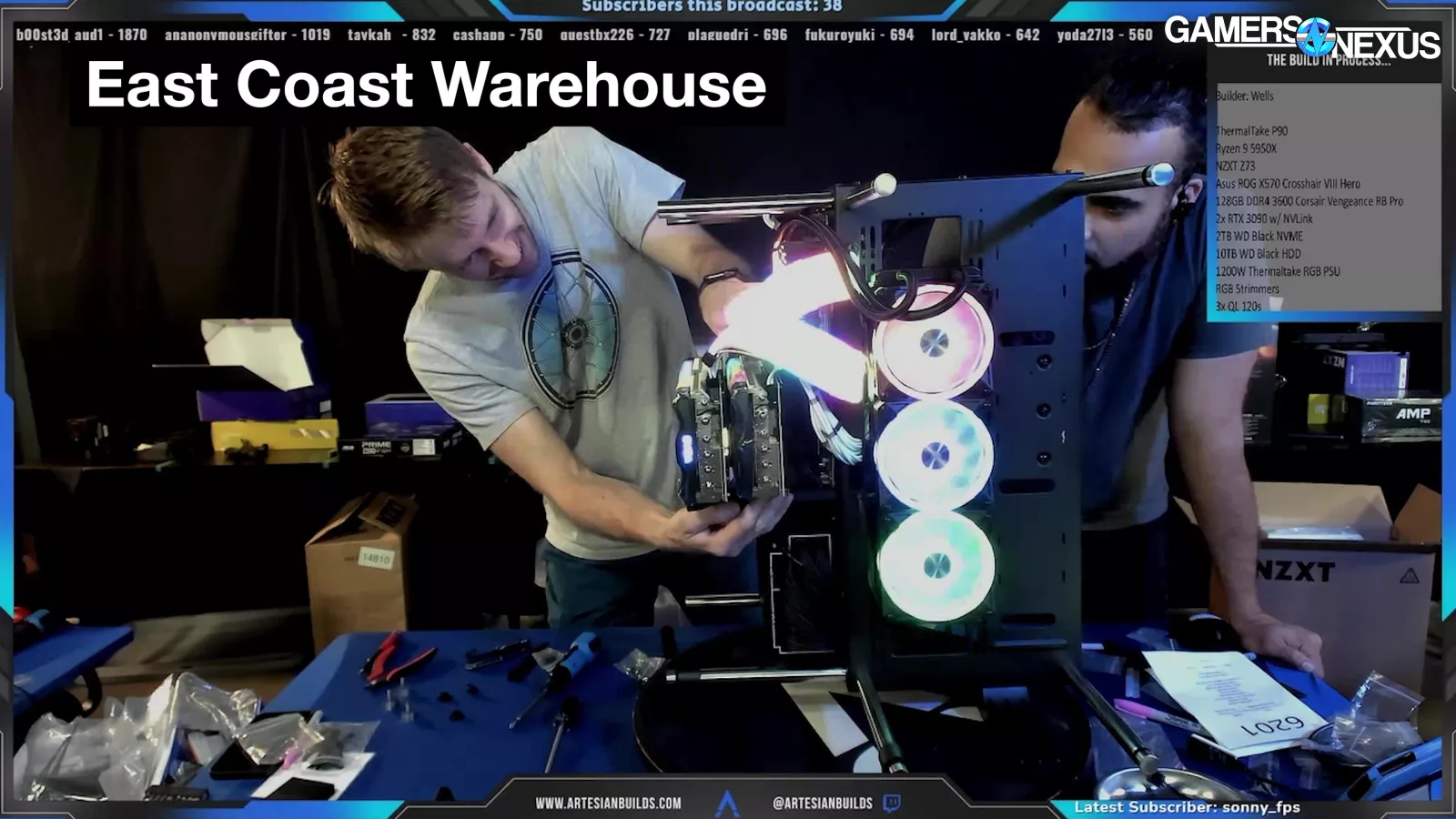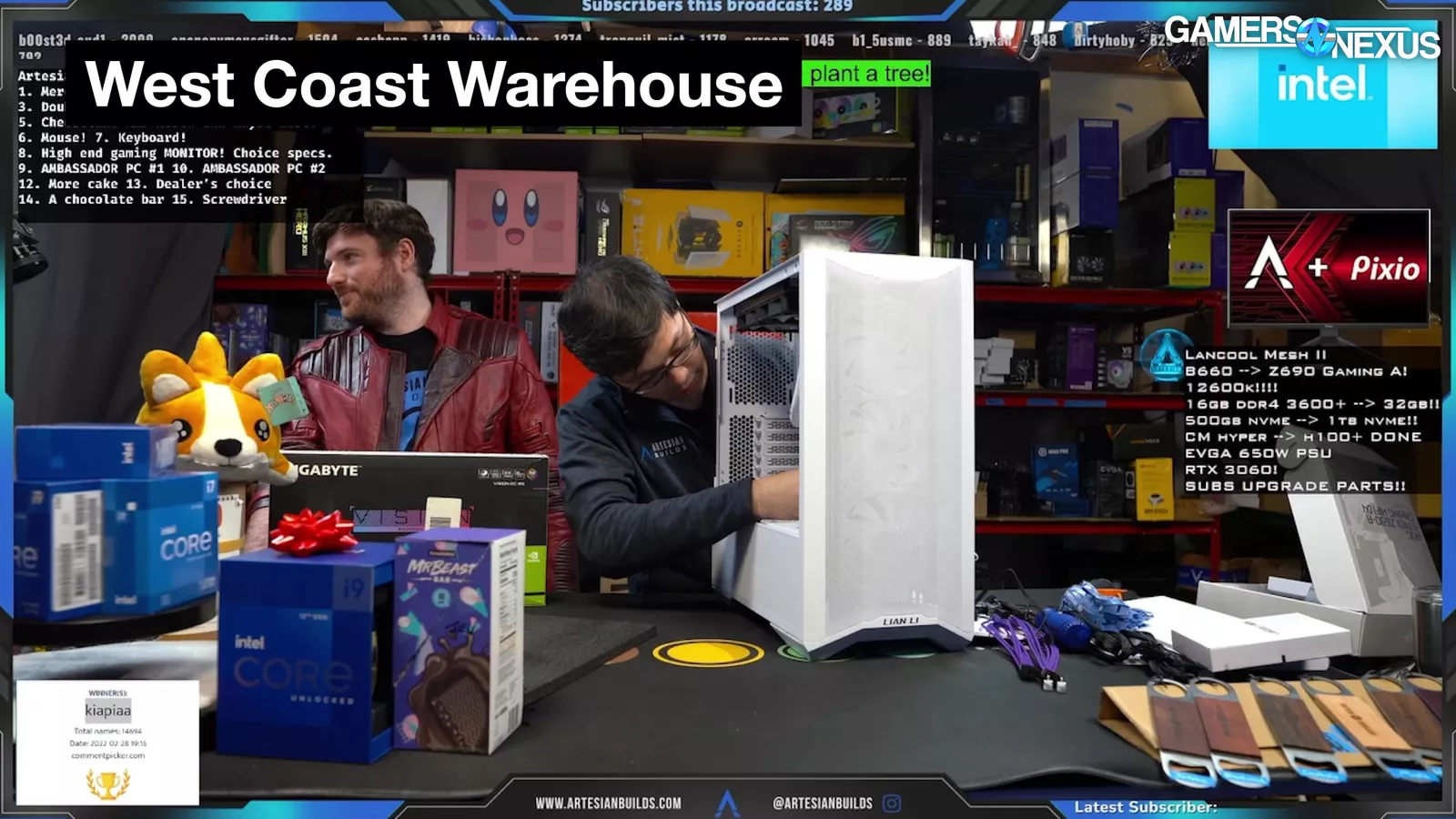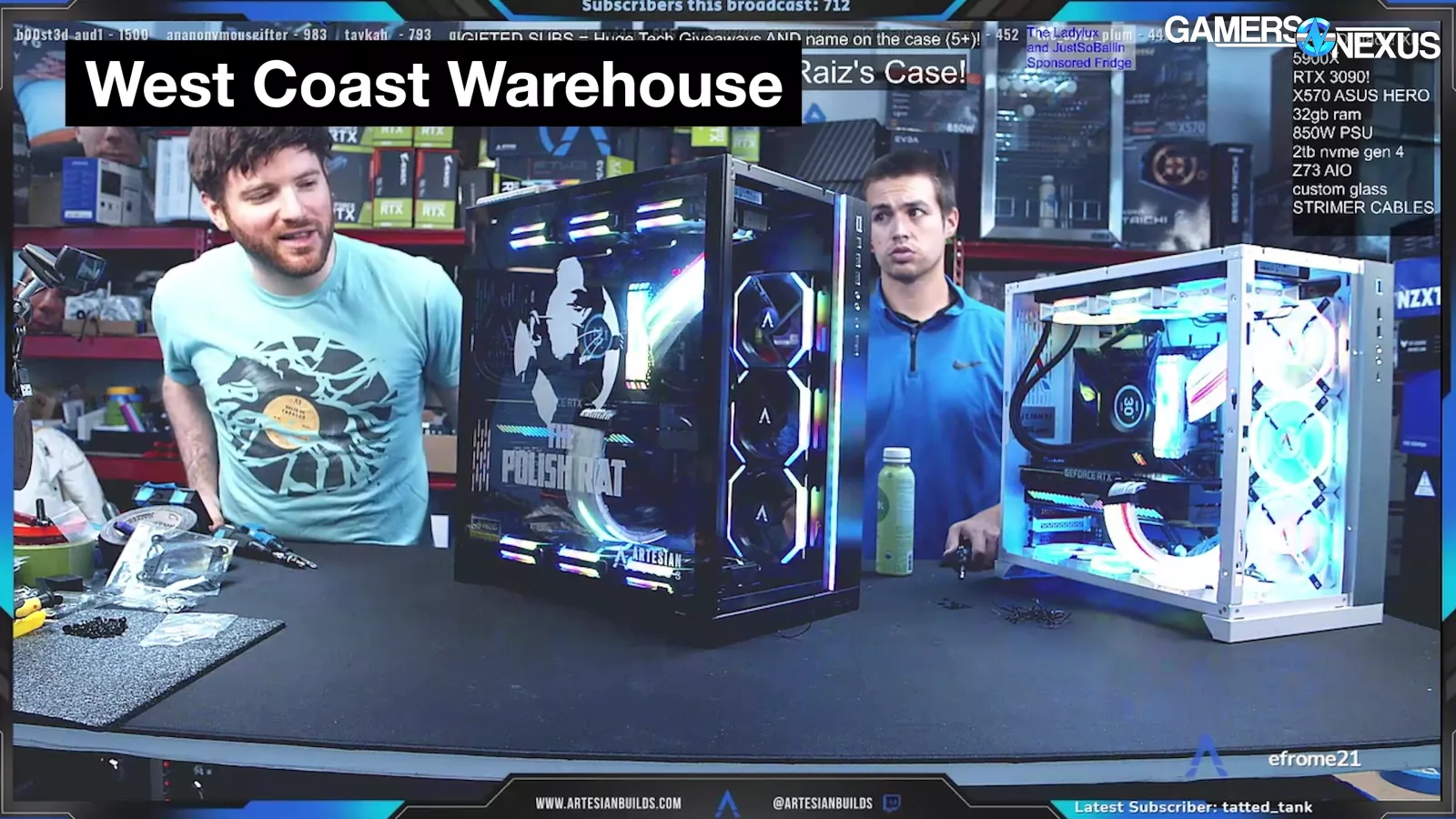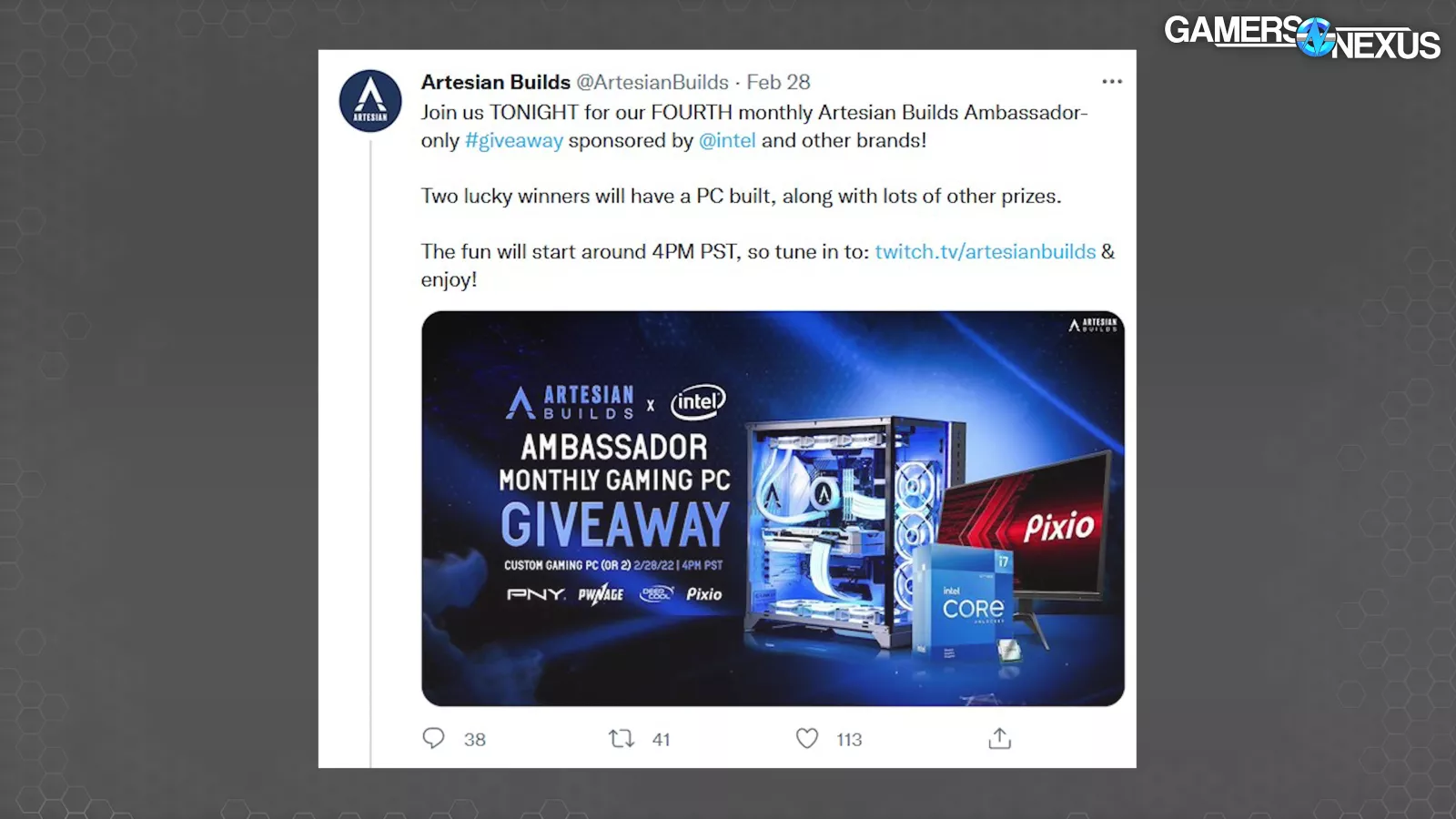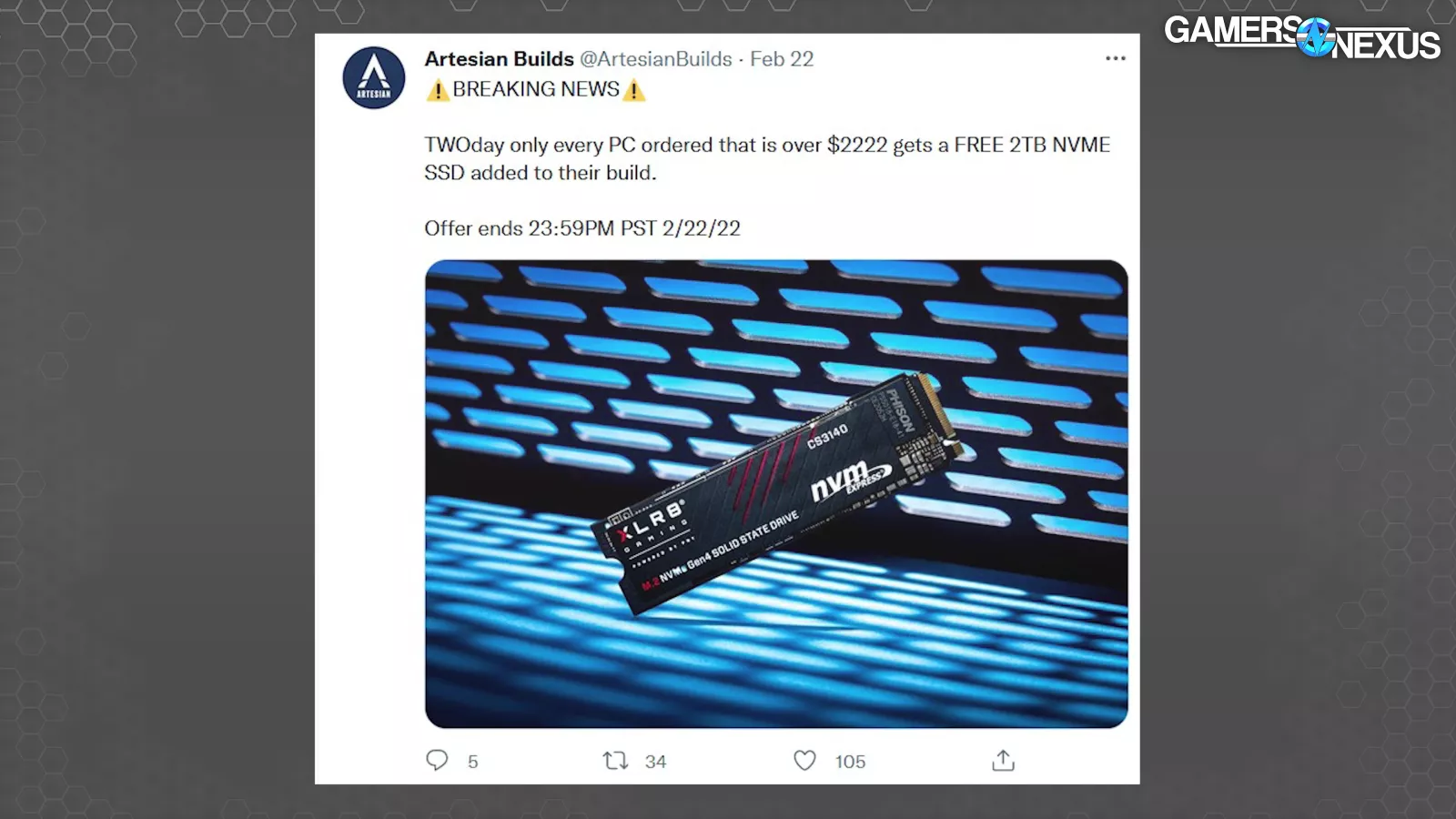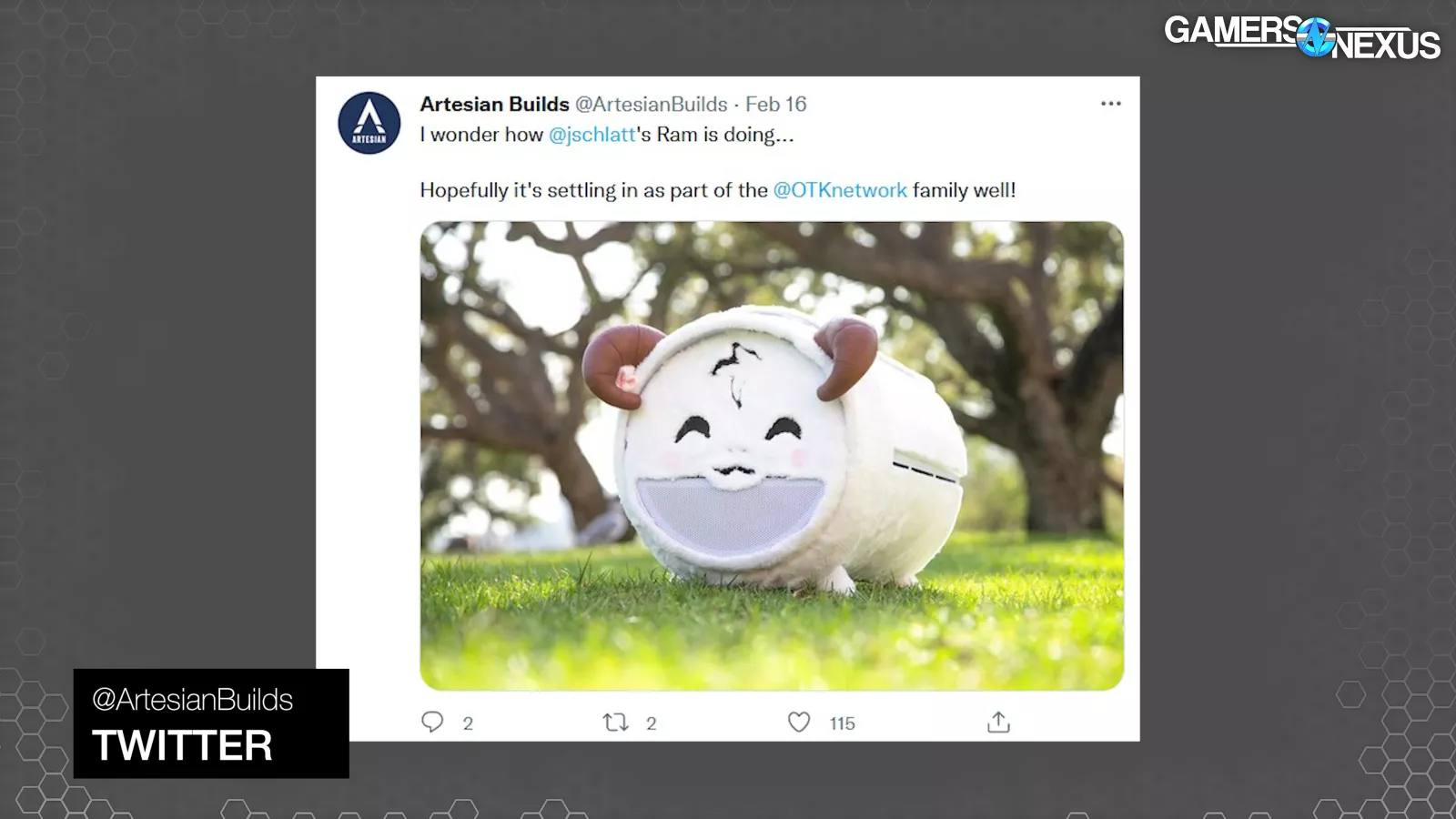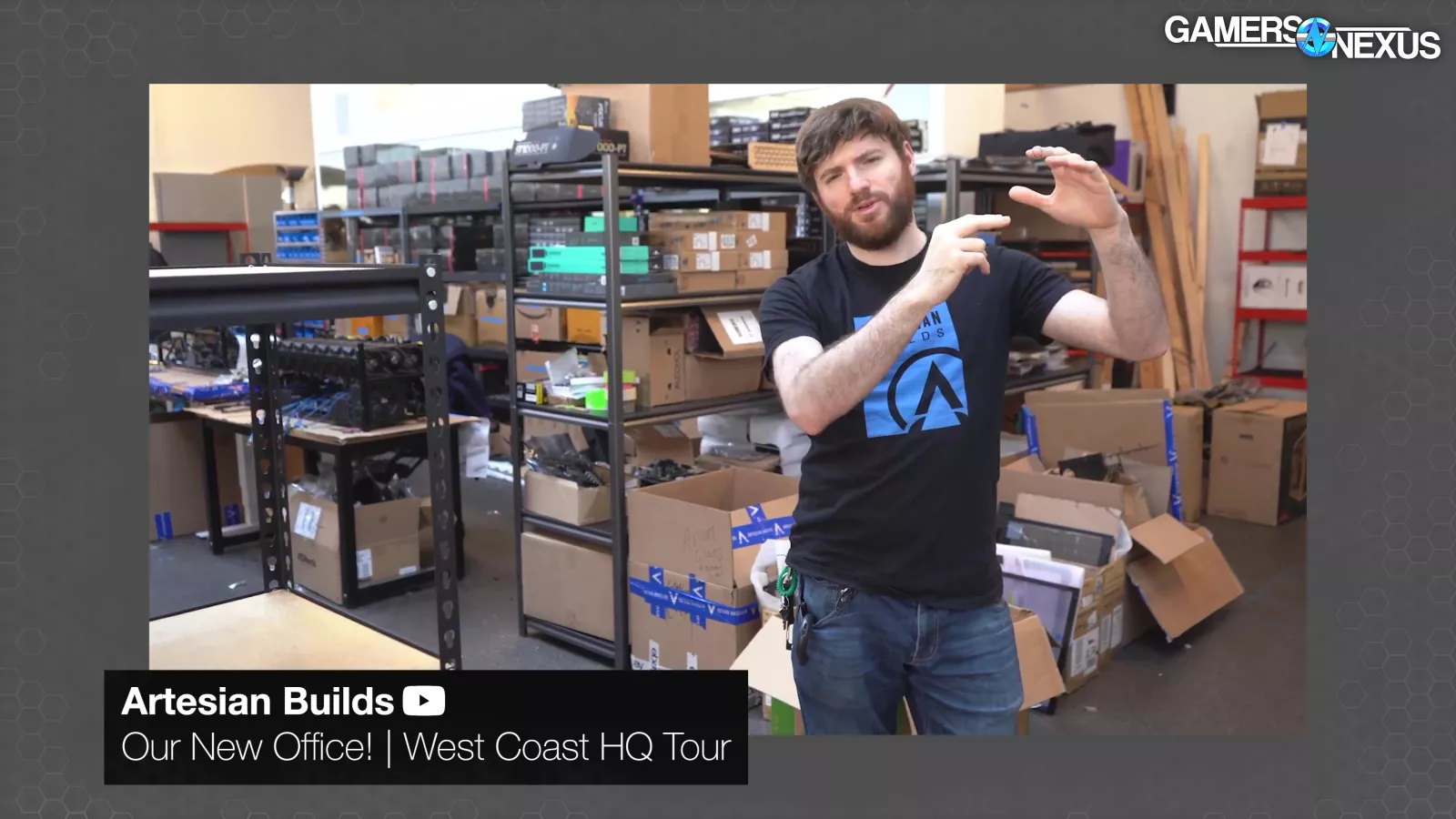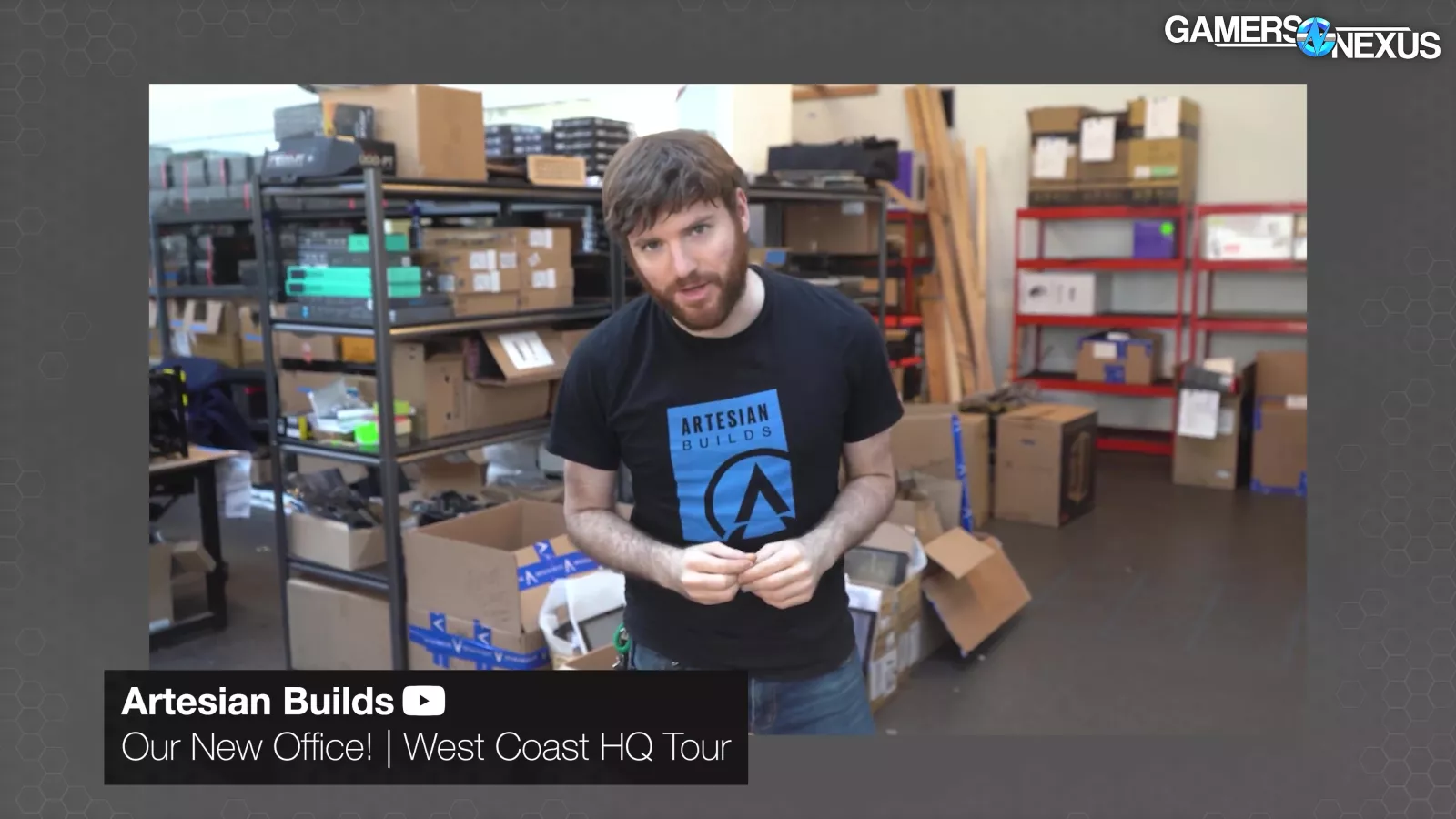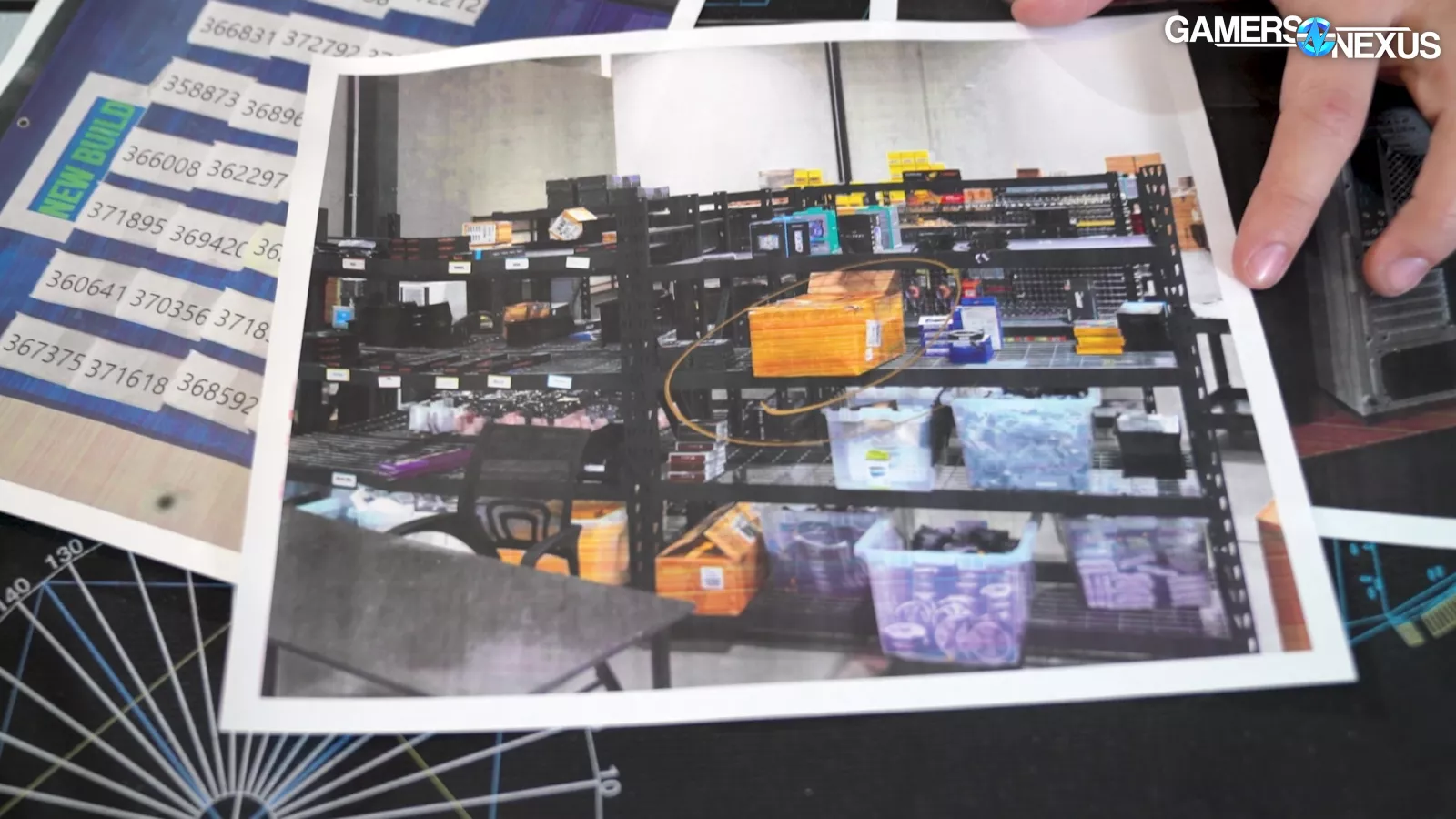
We dive deep into the shady, scummy operation of Artesian Builds and its former CEO Noah Katz.
The Highlights
- Artesian used to make multiple million dollars in revenue every year
- Mismanagement and hubris paved the path to bankruptcy
- We worked with insiders to uncover evidence
Table of Contents

The following article is the culmination of months of investigative journalism. We drew our own conclusions on Artesian Builds and its former CEO. We've heard Ex-CEO Noah Katz has considered suing us for this story.
We are proceeding with this article and nothing has been removed.
We will always advocate for consumers.
Credits
Investigation, Editing, Host, Web Editing
Steve Burke
Camera, Video Editing
Andrew Coleman
Web Editing
Jeremy Clayton
Our Biggest Investigation
This is the biggest scam we’ve ever covered. This is insane.
This ghost town of a warehouse is filled with active build tickets, dozens of power supplies, video cards locked in cages, and there are several areas where it’s as if it was frozen in time. Build stations remain as in-progress work sites – even with the employees’ drinks and lunch left behind – and bins remain partially unpacked from a team that was once excited to move into its brand new, multi-million dollar warehouse that was customized for them. The computers inside, these are still due to customers, including some who are probably reading this article right now.
We got inside of the foreclosed Artesian Builds offices in what turned out to be one of our biggest investigations yet as we try to unearth what went wrong for the many customers who got screwed by Artesian Builds.
Gallery of Artesian Builds East Coast Warehouse
Part 1: Driven Into the Ground
Artesian Builds went from being a robust pre-built PC manufacturer with two locations and around 60-70 employees, doing $20 million a year in revenue, to a bankrupt warehouse filled with at least $1 million of inventory locked up, some of it still owed to customers today. People who will never see the PCs they ordered and who will never get their RMA’d repair units that are stuck inside. The computers that were in here -- they had been sitting in here for months. That includes, again, repair units that existing customers sent in for repair with their personal files, work files, family photos, tax documents, anything like that – stuck, trapped on the systems, imprisoned, where they will never be able to get them back because all of it is being sold at auction.
As for how any of that happens, how a company goes from $20 million a year in revenue to bankrupt, well, a lot of that is because of Noah Katz. Although we would later discover deeper underlying issues within the company, the first sign of impending doom publicly came from a stream wherein CEO Katz rejected various potential winners, drawn seemingly at random, for often superficial reasons -- such as not meeting a popularity threshold.
Gallery of Noah Katz's Infamous "Reroll" Livestream

INFAMOUS: "Re-roll!"
In this stream, Katz pulled a name for a viewer to win a gaming computer. Upon reviewing the viewer's own subscriber stats, Katz declared a "re-roll" of the drawing necessary.
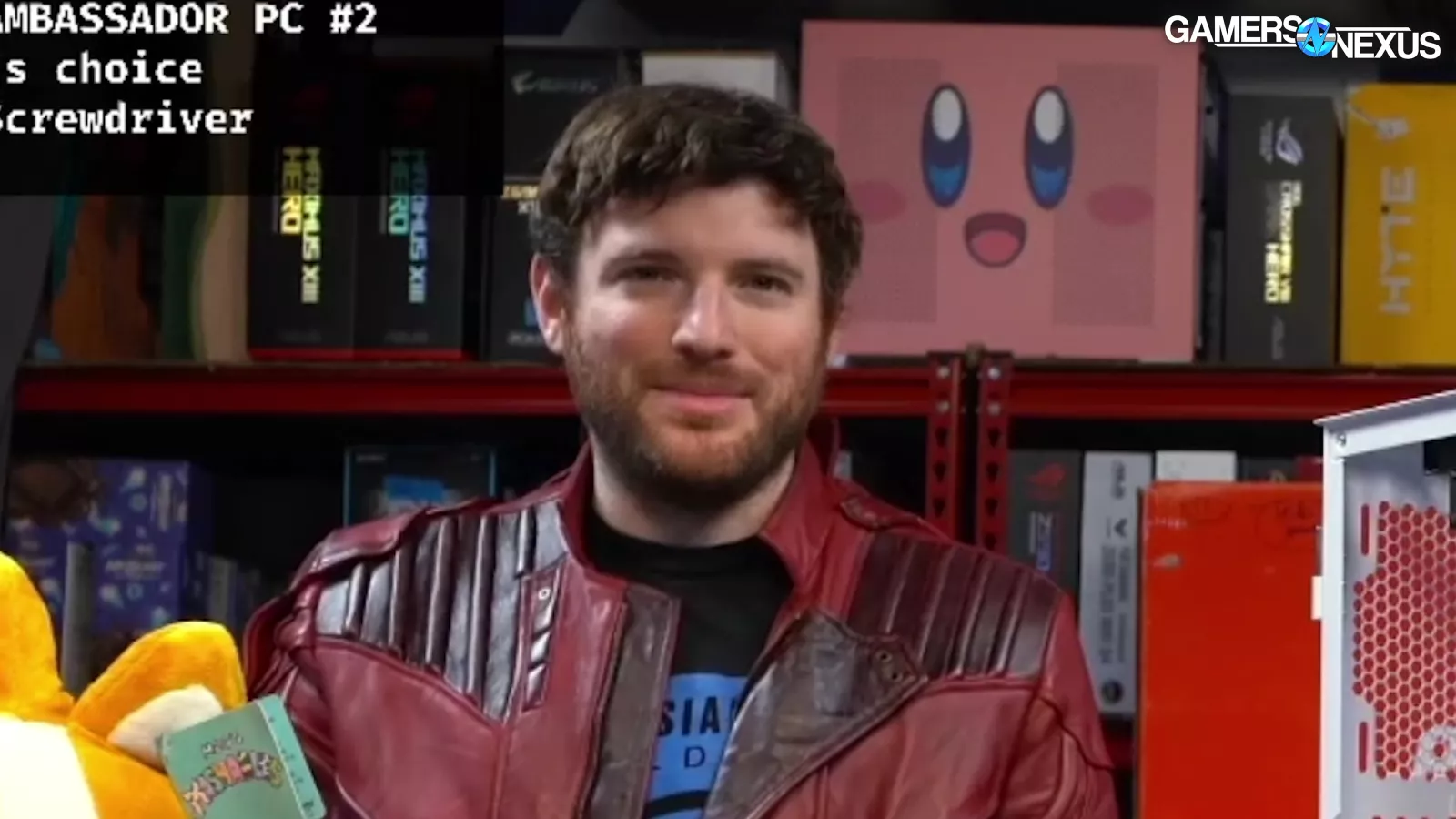


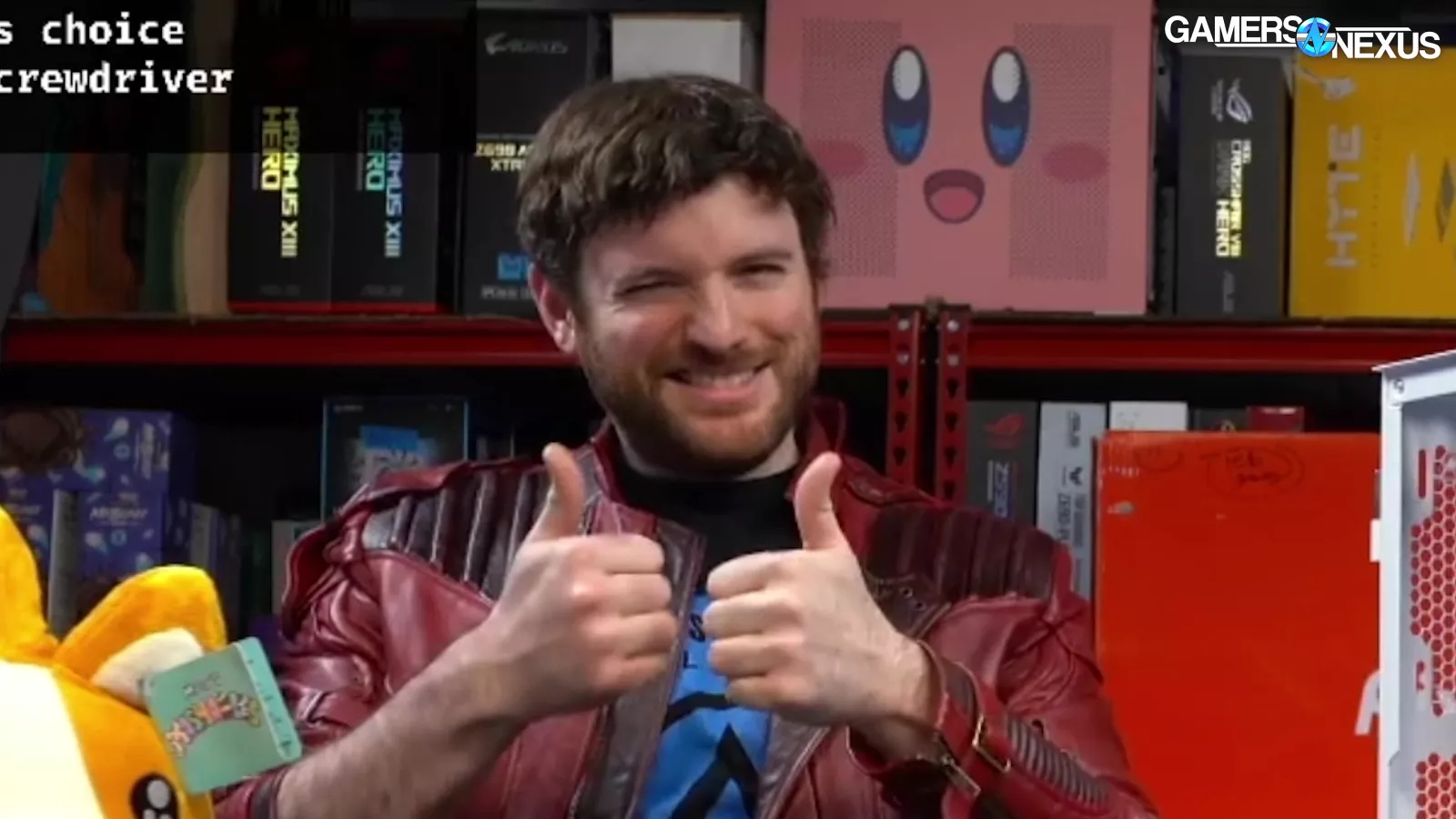
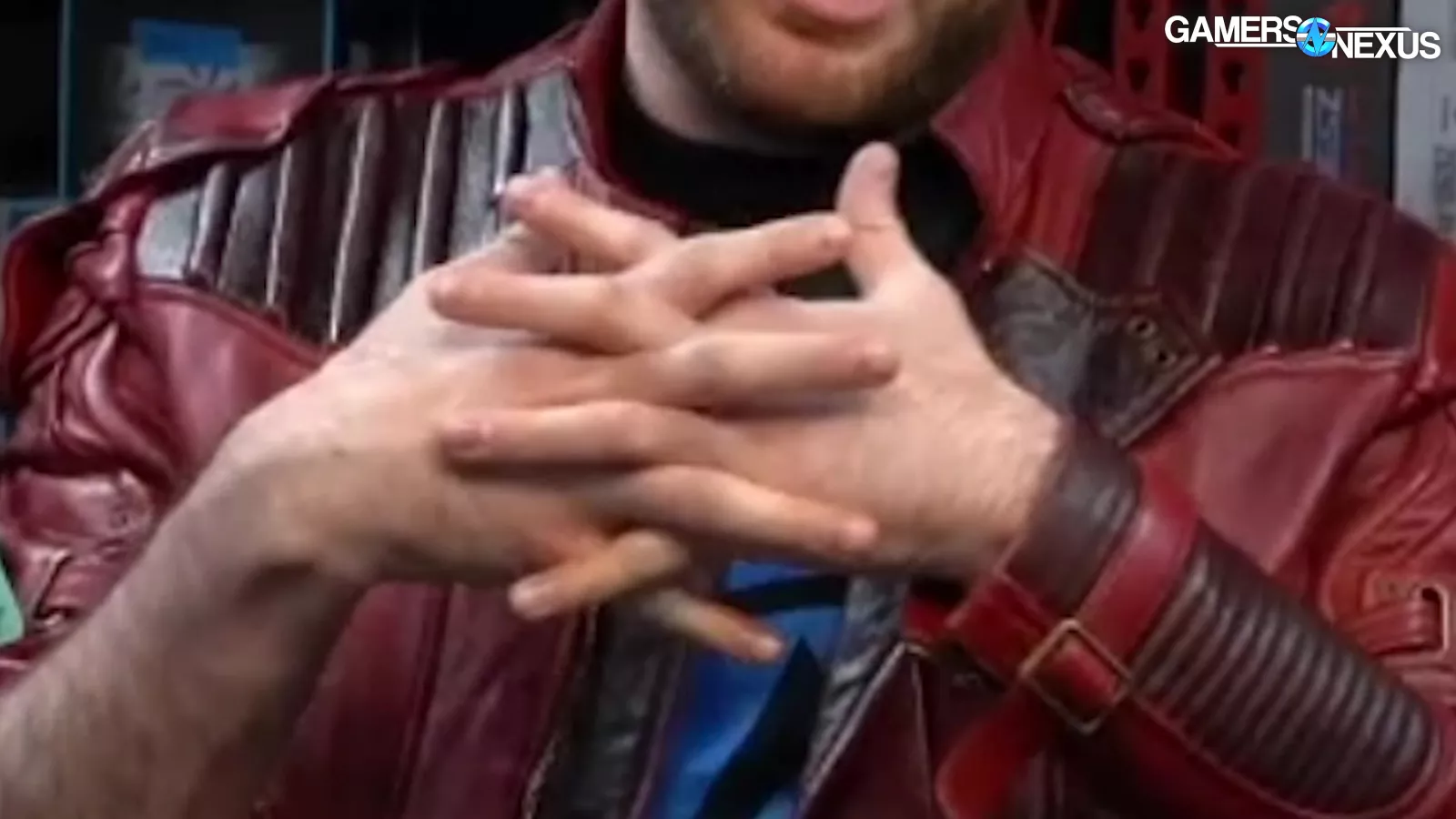
Collaborating
Even though that now-infamous livestream was an absolute trainwreck (and we have clips in our video above), it’s not the only reason Artesian Builds went out of business. Artesian was doomed a long time ago.
Today, we’re showing Artesian’s collapse from the inside. Our investigation revealed a number of concerning facts, some bordering on what we believe to be fraudulent or illegal activity. This is why Katz wanted to stifle our report. Some of the facts included employee payments being withdrawn despite work being delivered, non-payment to W-2s for the last week(s) of work, mysteriously missing items of value from bankruptcy auctions, and what our lawyers tell us might be a piercing of the corporate veil between Katz and his corporation, Artesian Builds.
ABANDONED: Artesian's Items, Customers, & Employees
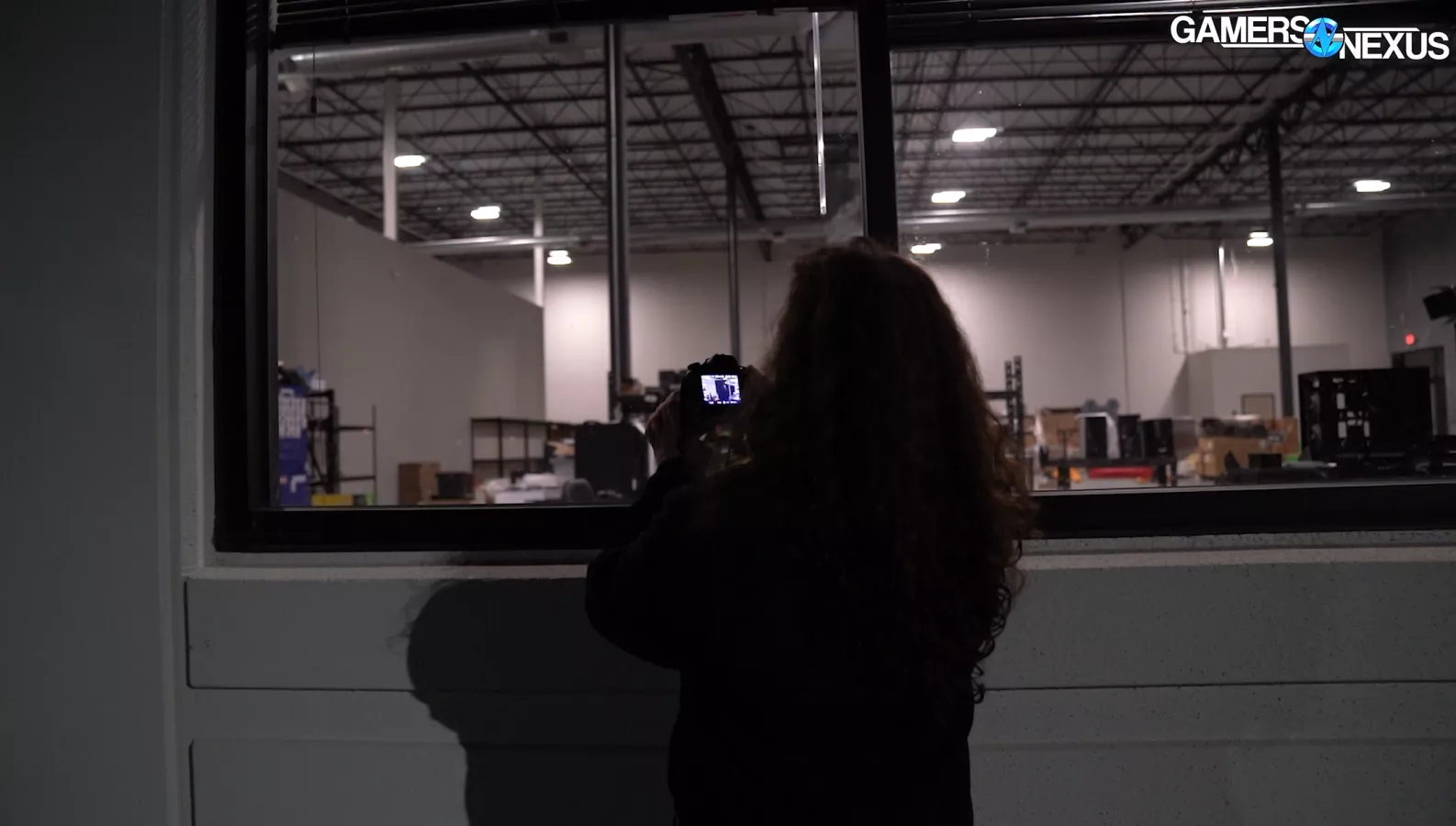
This was one of Artesian's two old locations. The first time we were here, it was just one day after the implosion of Artesian Builds and when it fired all staff via Twitter without notice, publicly.
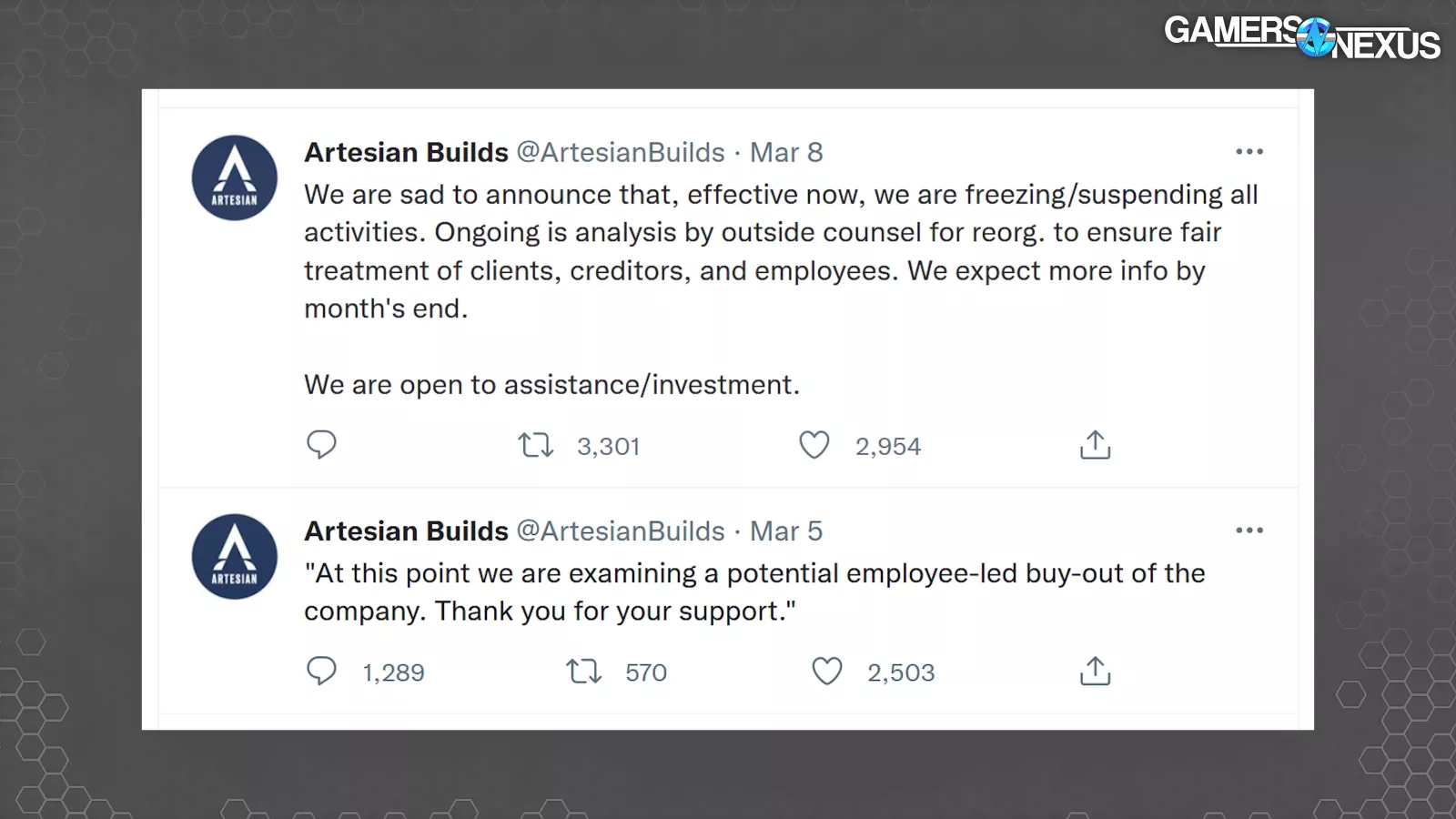
TERMINATED:
Employees learned via Twitter, publicly, that they had lost their jobs in an instant.
Part 2: It Doesn’t Add Up
Even with that nice warehouse, Artesian should have been able to make things work. It was shipping upwards of 800 pre-built computers every month.

Artesian went from doing $0 to $2.2 million in revenue in just two years. By the third year in business, the year it shut down, it was doing $20 million in revenue. Artesian was on track for $30 million of revenue in the fourth year, up until CEO Noah Katz ran it into the ground.

DEBTS CALLED:
Today, Artesian owes about 800 builds to customers and about $1.8M, not counting what it or its owner will owe once the pending lawsuits conclude.
When we were investigating this, we found that about a dozen or so former employees noted to us that they had not received the entirety of their last paycheck. We also are aware of at least one active lawsuit currently being taken against Artesian Builds or its owner, who now has to navigate the waters of making sure he hasn't accidentally pierced the corporate veil somewhere.
That brings us to just some of the indicators of where the troubles lie with Artesian Builds at this point. There are many more, and not all of them are purely personnel and HR issues.
Part 3: The Threat of Lawsuit

We should probably start by saying how we got into the warehouse. Especially since we've already heard that Noah Katz apparently wants to sue us for defamation, among other things. As if we're the ones who said these things:
With a record of zero purchases and a falling-off following, we’re going to be re-drawing this name…
- Noah Katz, regarding a rejected giveaway winner
Oh! I'm a dumbo!
- Noah Katz, regarding himself
It was all above-board. We contacted the brokers and, by proxy, the landlord after Artesian fired all its staff, and asked if we could tour the location. They were more than happy to accommodate us.
This is especially because Artesian shut down within days of moving into and occupying the new space, leaving the landlord and the brokers without a tenant after a lot of customization, months of work, and construction had gone into it. It's not much of a surprise that they were happy to talk to us about their former or would-be tenant. We also got information from staff and from company Slack chat logs, which included information from Noah himself.
Part 4: What Really Went Wrong
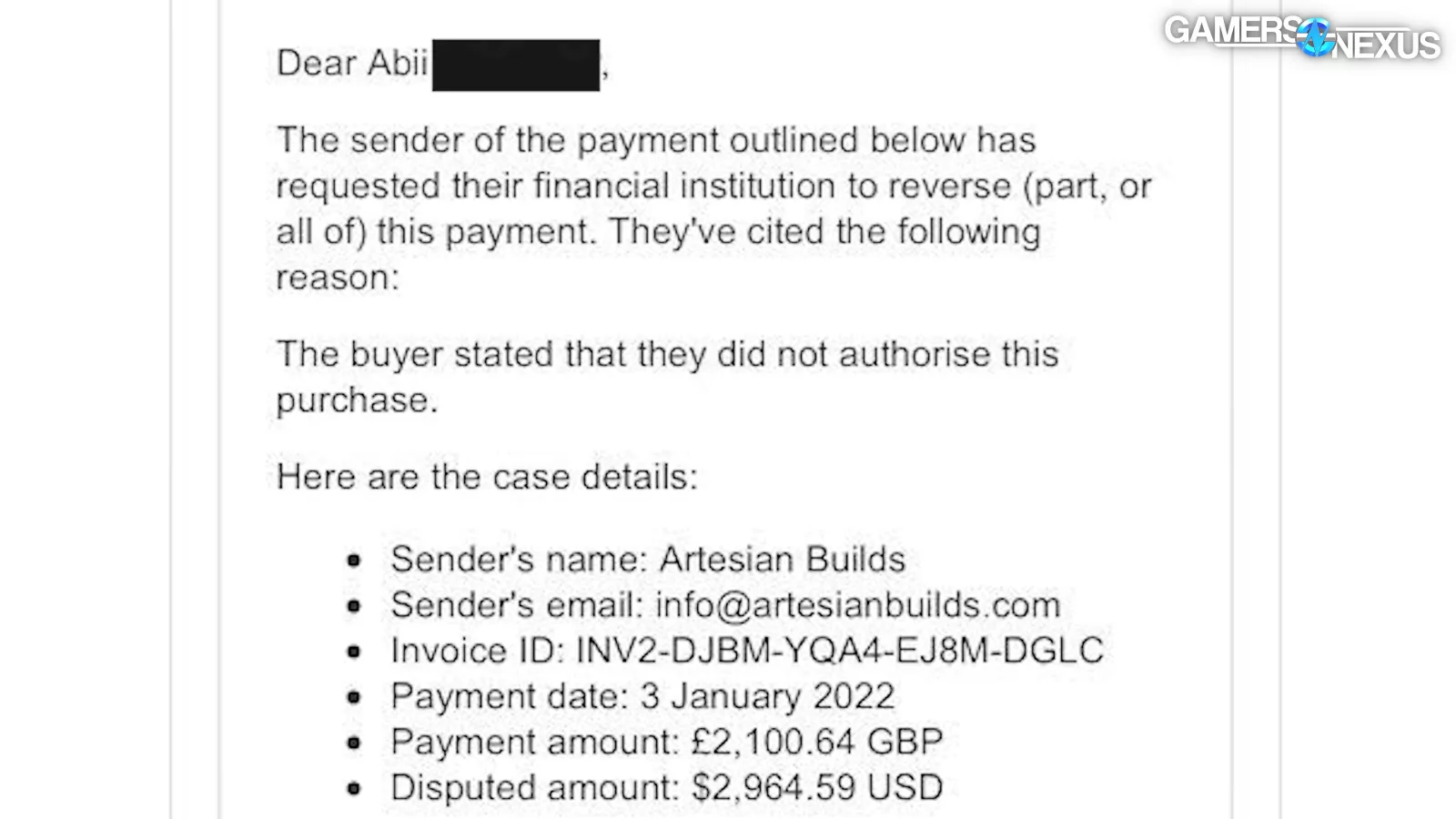
When the former CEO wasn’t busy going out of business and leaving landlords without a tenant, he could be found recalling pay from contractors and employees, putting them into debt in their personal PayPal accounts in what seems, to those of us who aren’t lawyers, to be fraudulent or potentially illegal. We’ll come back to the more serious evidence we’ve accumulated later.
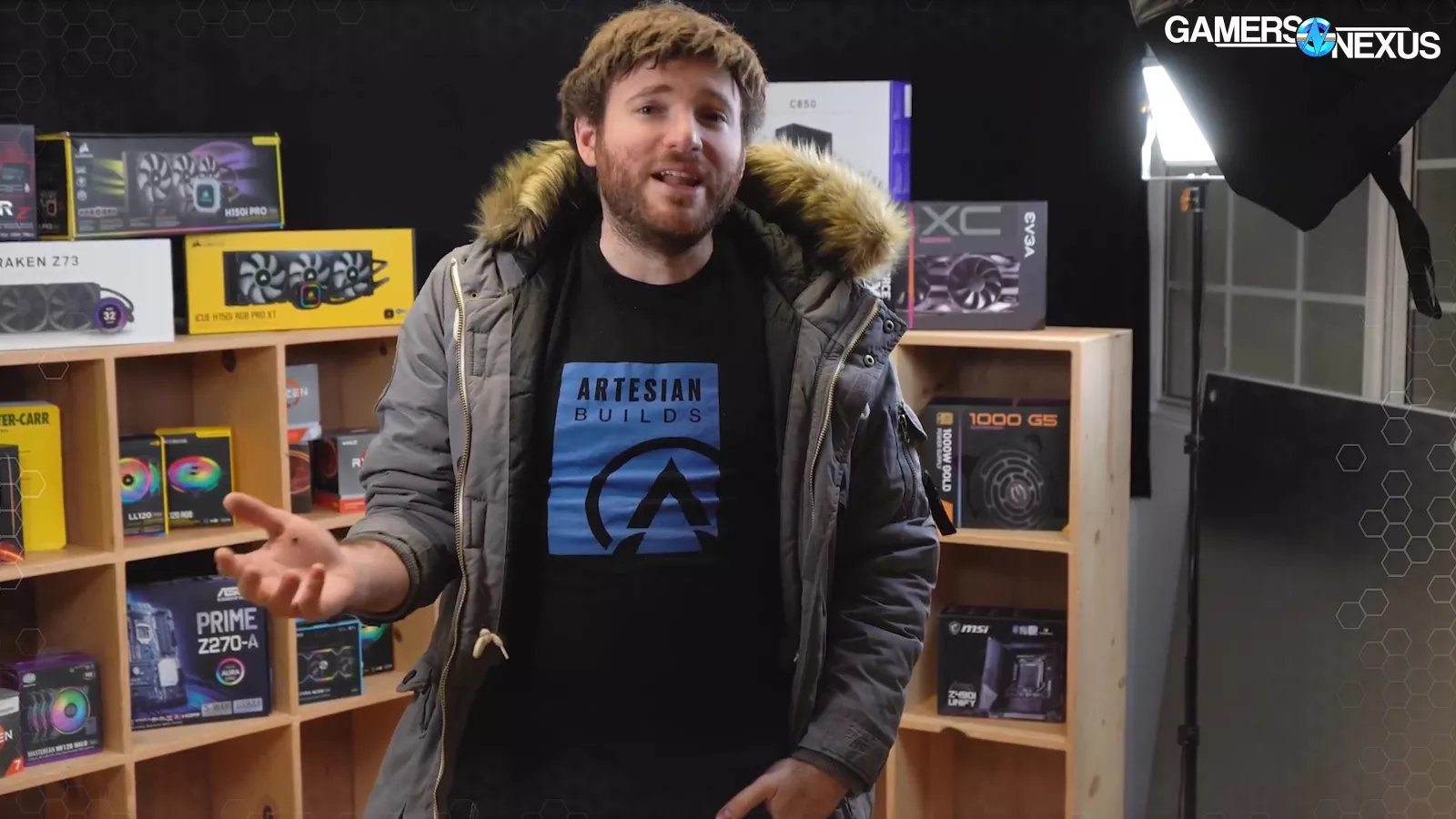
"BUSINESS EXPENSE"
Artesian was run by an eccentric man with ... unique tastes.
Katz modified this small form factor case by allegedly purchasing real dinosaur bones and arts-and-crafts gluing them to the chassis, in what was supposed to bring to life a render of a dinosaur bone case commissioned from an artist. Though that’s not quite as unique as the $300,000 triceratops skull used in a marketing attempt about custom builds.
Artesian was a company that found more success in its core PC building business than it knew what to do with, mostly built on the back of its unfortunate team.
Yet, instead of focusing on getting PCs out the door, it tirelessly tried to expand into irrelevant categories.
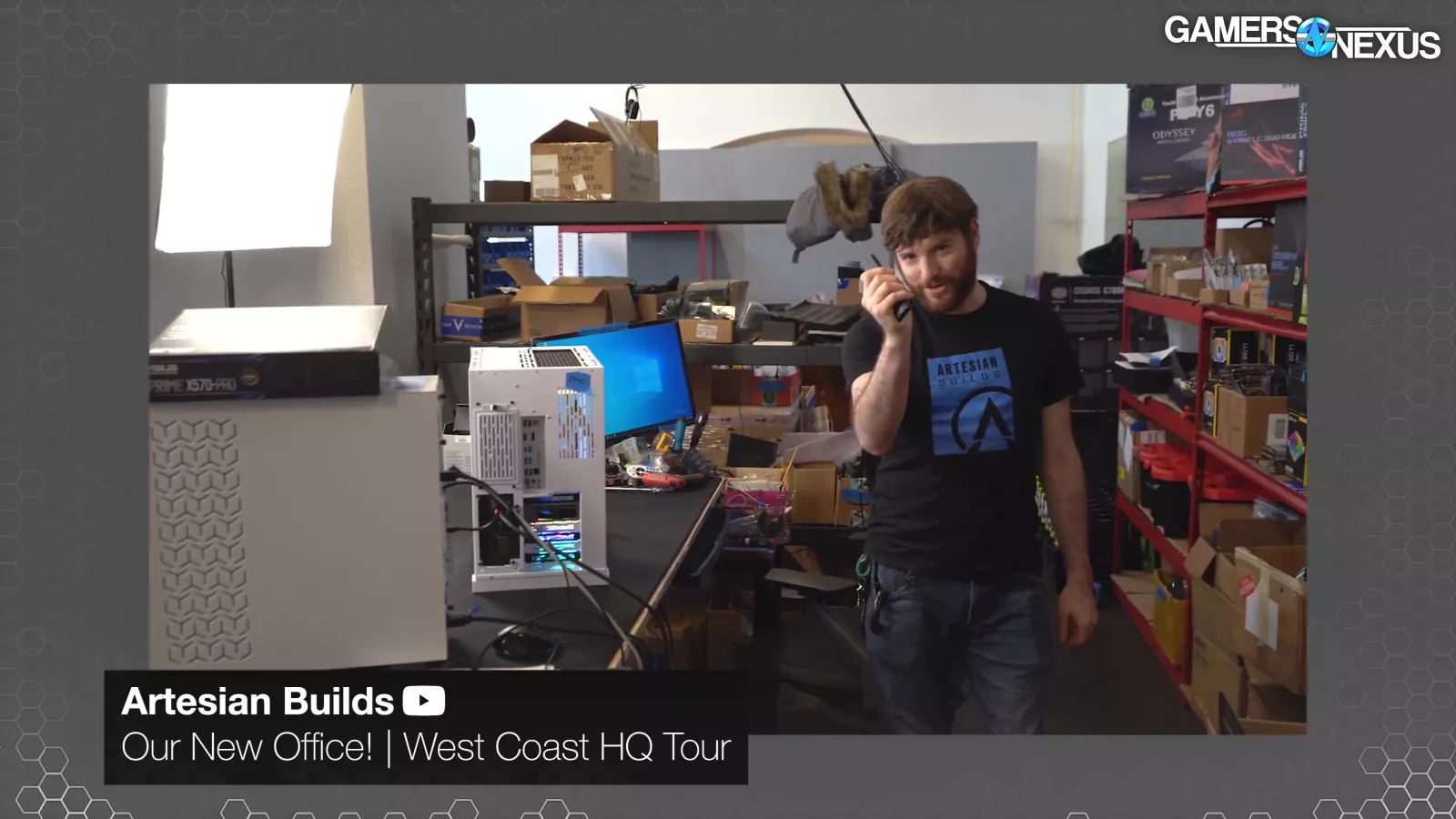
The company played with selling home goods, like cheese cakes ordered direct-to-consumer, jigsaw puzzles of PCs, cutting boards, and slippers, painting a picture of a company run by lost leadership unaware of the unthinkable success it had already inadvertently stumbled into.
Obsession With Fame
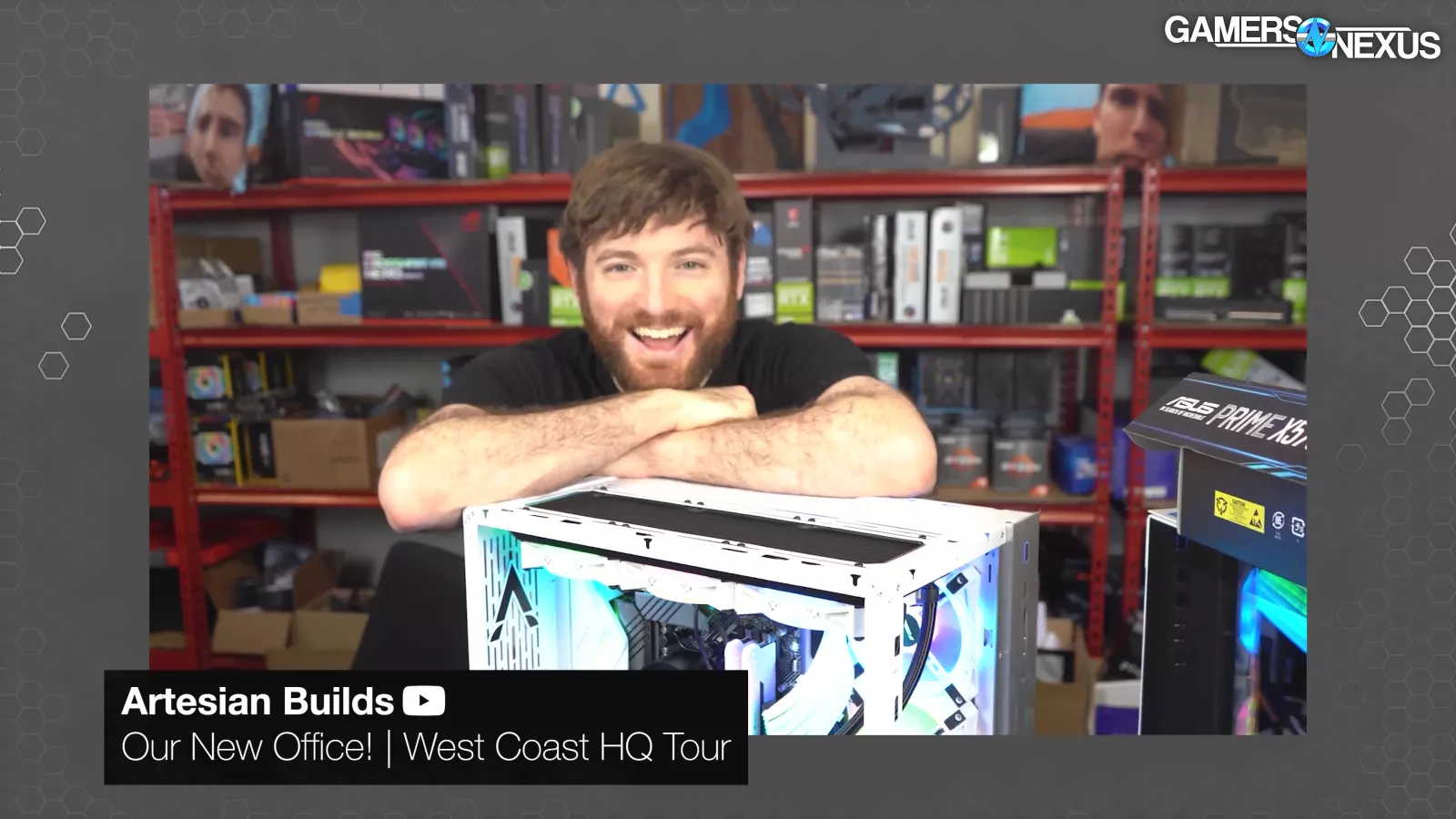
Artesian’s leadership wasn’t lost only in bizarre home goods. Its founder and CEO is also obsessed with the idea of internet fame and celebrity, something we experienced first-hand and entirely inappropriately when trying to interview him about the downfall of his company in the days before it closed.
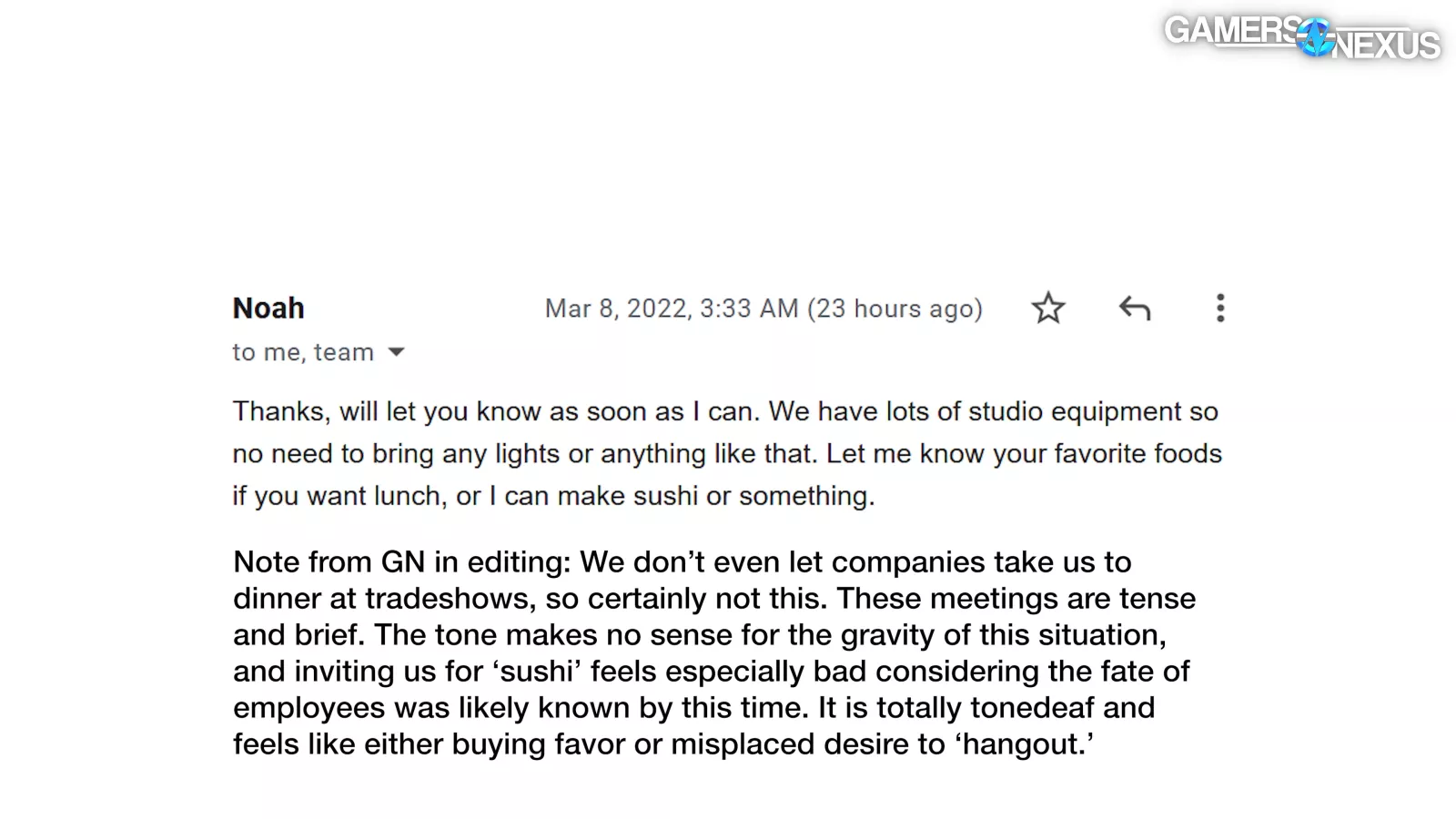
I'm an influencer, but I'm also an executive.
- Noah Katz, during an apology video
Don’t just take our word for it, though. In the company’s internal Slack, when employees were begging the CEO to please apologize for dismissing and disrespecting smaller creators, he made statements like these:
When confronted by employees with the idea that he was publicly disrespecting free marketing vectors – whom Artesian referred to as “ambassadors” – Katz said to his staff, “Wait, what? They are my buddies. What the fuck. If they aren’t, that’s the whole problem. That’s the whole problem guys. Am I not being clear?”
He continued, stating: “I literally built this brand to be their friends. That’s the whole point of being live.” and “I want them all to know me.”
This aligns with other actions Artesian took. Katz’ personal assistant stated in the company’s Slack, during a fiery debate with the CEO, that views and subs were purchased. We later learned from staff that this was during live west coast builds, particularly the CEO’s build and builds for other people close to him.
For all of the public issues that we already know about, like insulting smaller creators who are doing free marketing for Artesian for the chance to maybe win a PC if they're popular enough, there were more issues internally that weren't revealed really until we started digging into them.
Probably Fraud, in Our Opinions
The first person to know the company was truly doomed was CEO Noah Katz (not a surprise), who immediately, in the final days of Artesian’s life, set to withdrawing approximately $10,000 from the company’s PayPal account. This is information we have verified with bankruptcy hearings we obtained that are on court record.
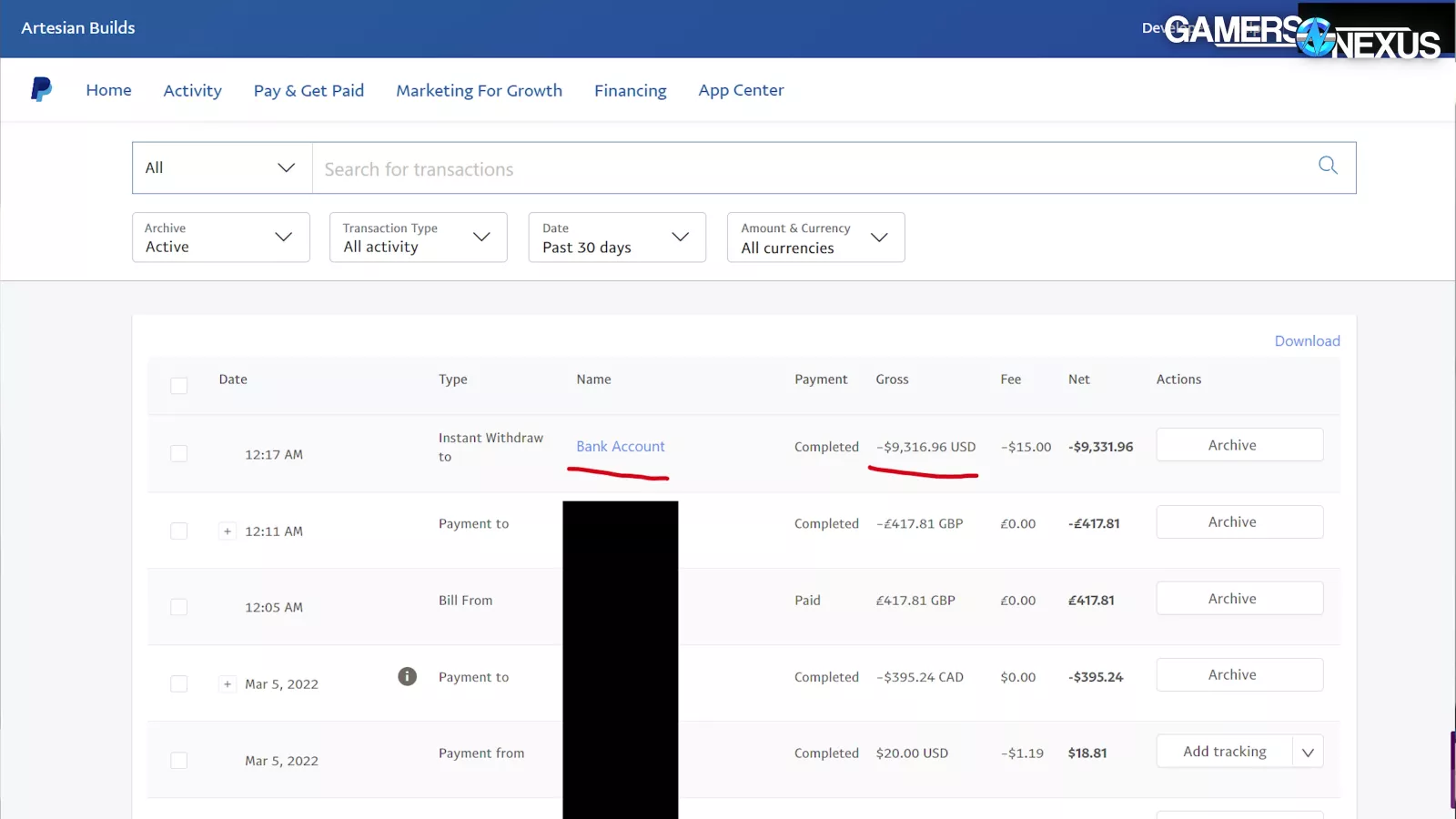
With the walls closing in around him, Katz also began clawing back money paid to contractors and staff in every way possible.
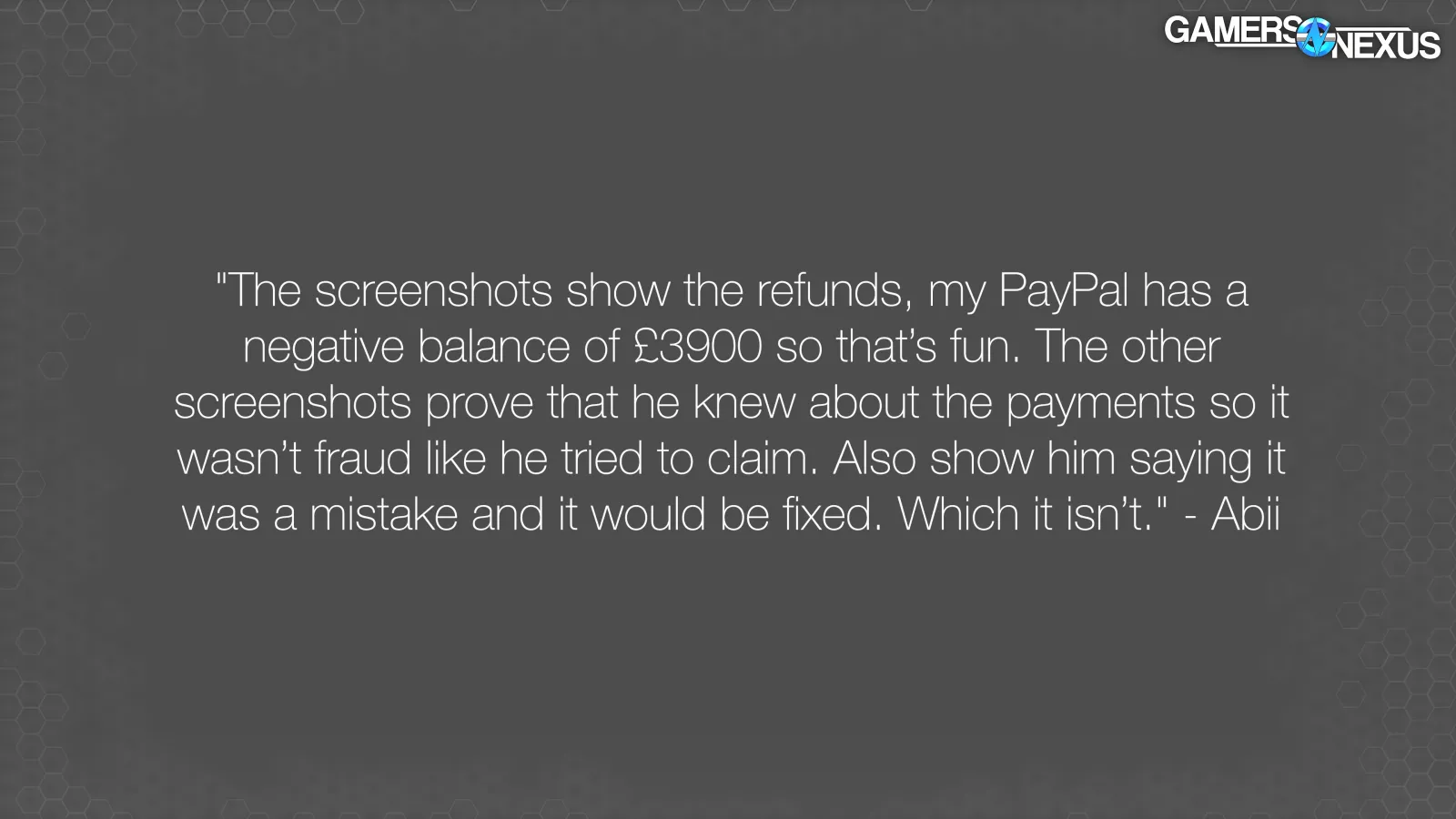
A former staff member named Abii is currently in debt £3900 GBP on her PayPal account, or about $4700 USD, because Artesian (or Artesian Futures, whatever it is now) recalled all payments made to her during the tumultuous downfall of the company. PayPal sided with Katz, probably because of his company’s size, and presumably because PayPal didn’t know Artesian was going under. Because Abii doesn’t know anyone who works at PayPal, she’s kind of screwed. She’s in the UK and isn’t able to feasibly sue Katz, who likely has no money left anyway. PayPal is the only avenue.
The PayPal cases show two disputes: One for $2964.59 and one for $2570.45 USD.
We obtained text logs between Abii and Katz, where Katz (messages shown on the left) is told that, with the COO, Nick, having departed, Abii will need to send the invoice to him. Katz pays the amount in December of 2021, well before collapse, and the thread revives in May of 2022, after everyone had been publicly fired. Abii kindly suggests (probably too kindly) that the text thread serves as evidence for the dispute and asks Katz to keep things amicable at the end. He refers Abii to his lawyers. Just for the record, we have emailed the CEO’s lawyers for comment, but as of writing, we have not heard back.
This wasn’t the only chargeback. At one time, especially early in the year, Artesian Builds was desperately in need of GPUs to complete builds that were partially assembled but could not ship due to the GPU shortage.
This built into a much bigger issue (that we'll get to later on) where the company had upwards of millions of dollars of inventory (which we verified on the balance sheet) sitting and waiting to ship, but was unable to because it was missing a GPU. The company tied up all this money and all these builds but couldn’t actually ship them, creating a massive liability sheet.
As a result of this, Artesian started seeking GPUs from employees and from eBay because they needed them to sell the actual build. There's nothing inherently wrong with buying the GPU from an employee of the company. If the company and the employee come to an agreement about it, that's completely fine. The problem is the payment of it. By the way, there were also mining PCs being sold from AB Mining, but that's a later story.
Even More Probably Fraud (in Our Opinions)
One particular employee paid about $1120 USD for a 3070 Ti at the time and sold it to his employer, Artesian Builds, which then went on to sell the GPU in a build upgrade for $1500 at the company. So the employee did well, they made some money on it. In May of 2022, Katz, or whoever’s handling his finances at this point, challenged the transaction on PayPal and claimed to PayPal that the transaction was “fraud.”
That’s... Ironic.
PayPal sided in favor of Artesian and Katz (or his money managers) once again, and clawed back the money from the former employee – who is now short a GPU and $1120.
In another scenario that was similar, Artesian Builds purchased a GPU via eBay from a viewer of ours and then charged it back, Artesian claiming it didn’t recognize the purchase.
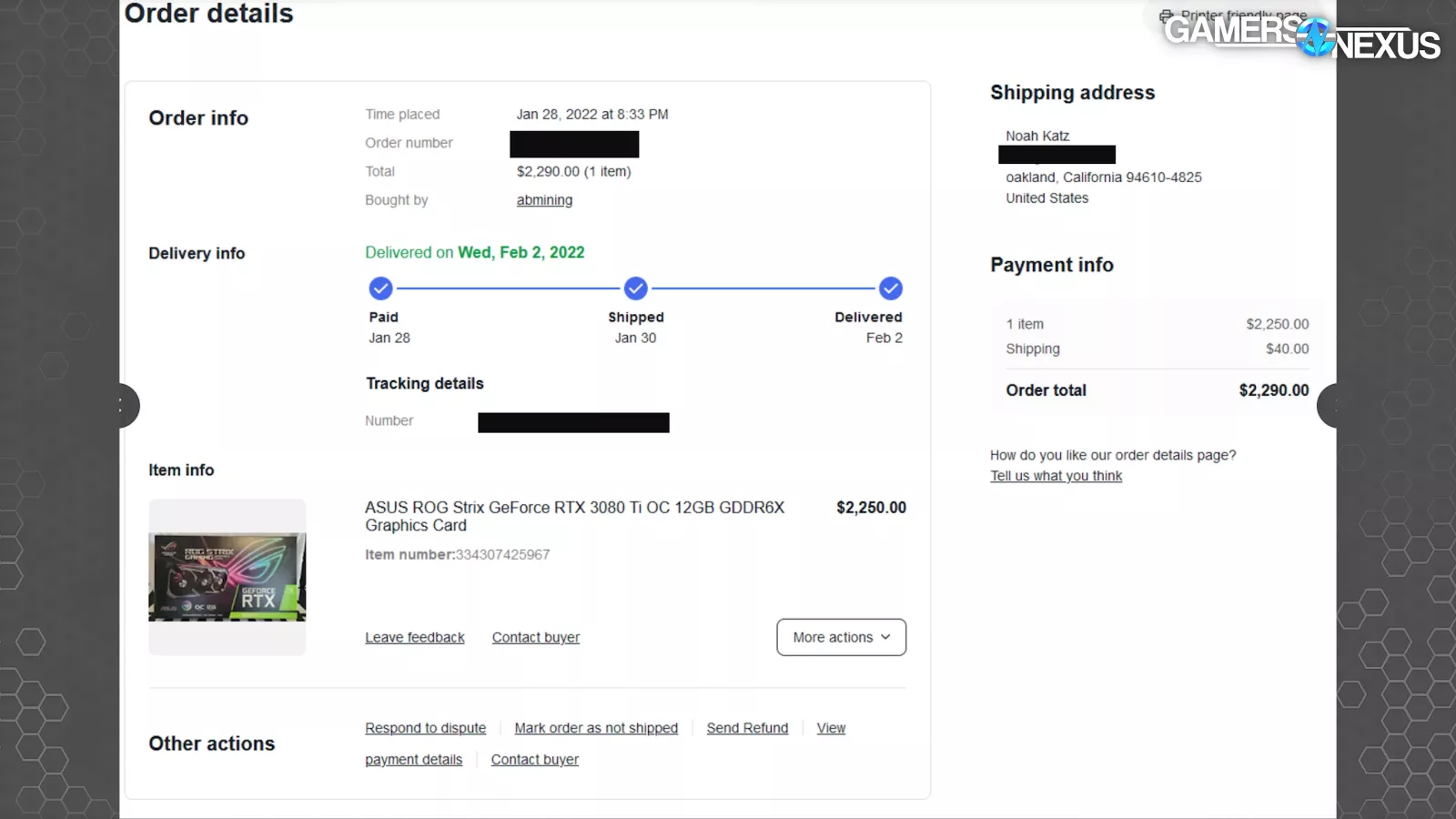
This order was placed in January 2022 for an RTX 3080 Ti, priced at $2250 at the time. The order was shipped to Artesian’s west coast warehouse and was insured, meaning there was a signature of receipt.

Looking at the receipt, it was actually purchased by AB Mining (Artesian Builds Mining), making this potentially even scummier. The dispute was filed on May 25, meaning it was 4 months after receipt of the GPU – so the GPU is long gone at this point. The reason provided is “buyer did not recognize the transaction” – so Artesian filed it as fraud.
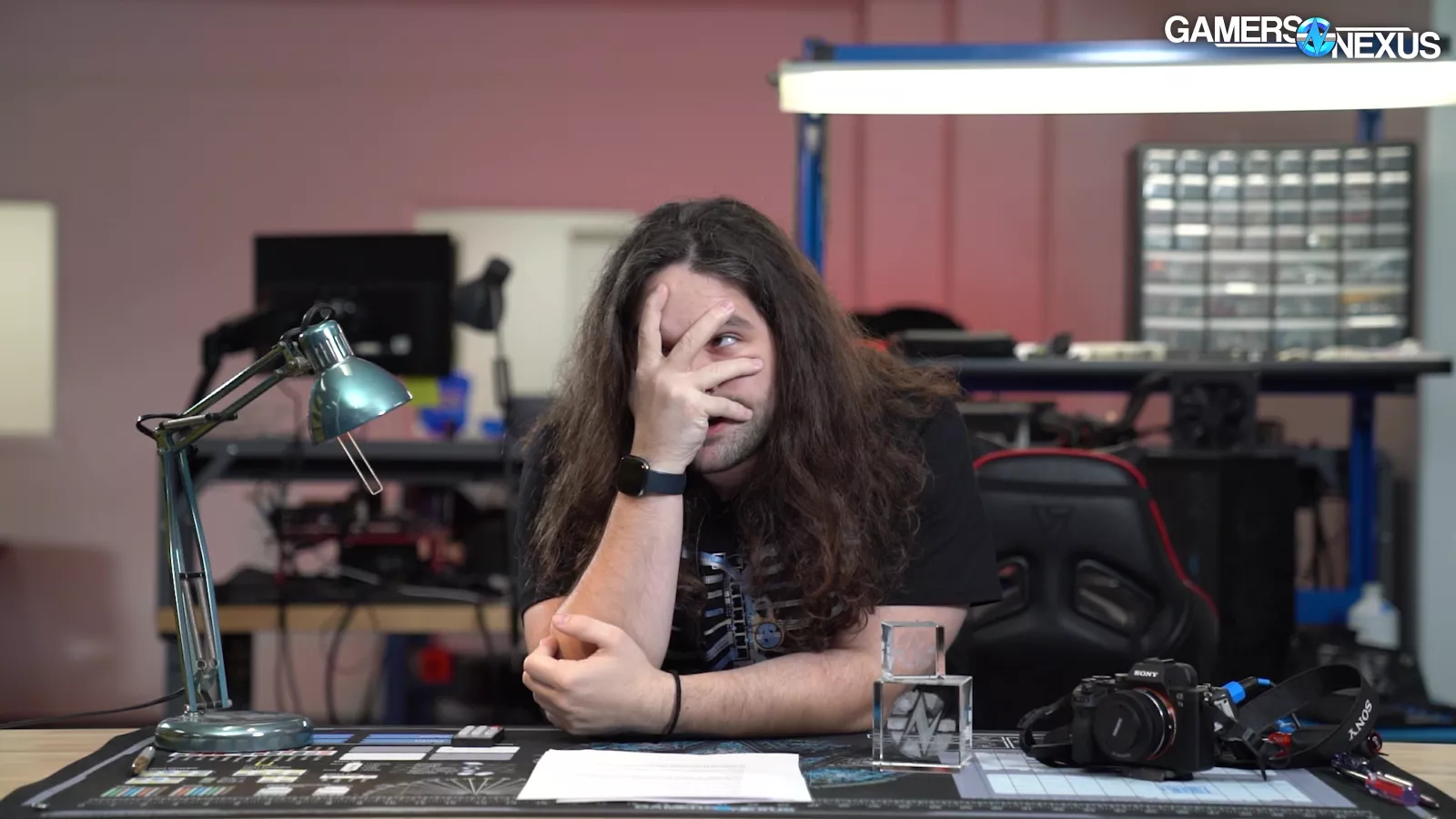
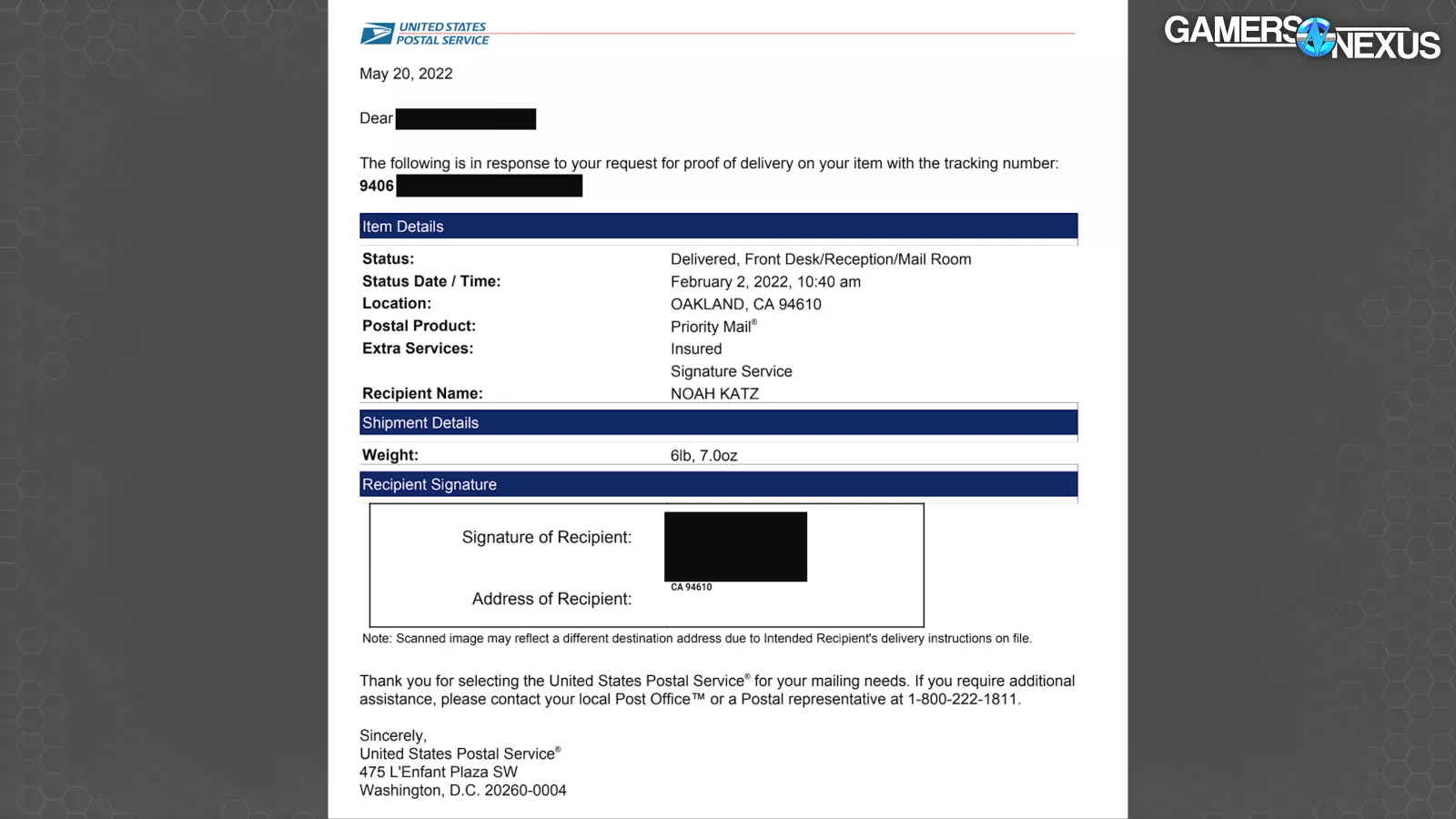
Upon further investigation, and to vet the source, we obtained official USPS government documentation noting the delivery of the product to Artesian Builds, as certified by the US government’s Postal Service.
Screw the Customers
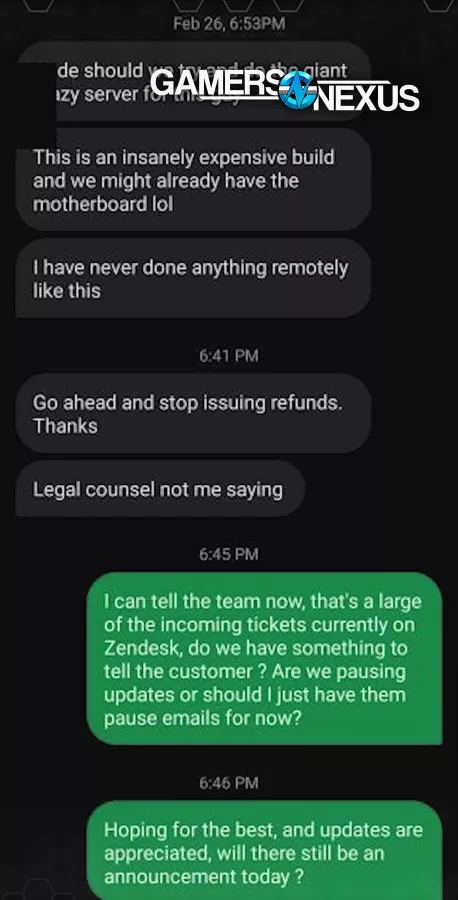
MISMANAGED MONEY:
Text conversations wherein CEO Noah Katz provides directive to halt customer refunds, referencing orders from "Legal."
The money mismanagement didn’t stop there.
Katz also handed-down a command from “legal” to stop issuing refunds to customers. This was a knee jerk reaction to the streaming mishap. So, as people were canceling orders, or backing out because of what happened on the livestream, Artesian took a stance of no refunds, or at least as directed by Noah Katz and whoever “legal” is.
Again, we’re not lawyers, but blanket-denying refunds as a knee-jerk reaction does, in our opinion, seem potentially fraudulent. As for why these potentially illegal decisions were made, that’s best explained by looking at the company’s balance sheet that we dug up.

At time of demise, Artesian had about $2.1 million in assets – mostly inventory assets, PC parts that would go into builds that have either already sold and are pending shipping or will sell in the future. This was contrasted starkly by the liabilities, listed at $4.1M in the final full operating month. Of that $4.1M, $853K was claimed as a “loan payable to family” – that’d be Katz’ parents – later allegedly climbing to $1.2M even just as the company went under. Given that Katz’s parents are secured creditors, the sudden increase in the loan puts them in line to get repaid during the bankruptcy. Meanwhile, customers who bought on debit or didn’t file chargebacks will be behind the parents, the former employees, and the institutions and suppliers in line. Basically, behind anybody who is filing a lawsuit. The reason people who filed chargebacks might get some money back is because they are now lumped in with a secured creditor, like a bank.

If we look at footnote 7, we’ll see a quarter million dollar adjustment to the owner’s investment in the closing month of the books, alongside another footnote for the increased loan from insiders (the parents).

Parents vs. Employees
We don’t want to get too derailed by this part of the story, but just for some context: Katz’ parents were invested deeply in the company, both financially and at some level in management. They would communicate regularly via lengthy messages with high-level employees and C-suite executives as well as lower-ranking employees. They were involved in daily operations. Reading some of the messages and logs, it becomes clear to us that there was a culture problem within the company of general disrespect between all parties. Much of this may fall on the CEO and his parental advisors. We can’t be 100% sure of how the blame is shifted there, but regardless of where that culture originated, we did see an overall mutual disrespect between staff on one side and the CEO on the other. That's just not conducive to ever running a successful company. For that reason, we think it was probably doomed long before the stream.
We could keep going about this generally scummy behavior (in our opinions) and talk about when the CEO was shocked anyone would curse him or Artesian after it had insulted people based on their follower count, or the crack-down on staff that happened after the streaming mishap, but we’ve made the point.
All of this stuff we've been over so far is bad; it's pretty damning. However, this was all stuff that happened more or less after, or towards the end of, the collapse of the company. So, we still need to look at what led up to it and caused that collapse. That is, other than the person running it, which at this point given the behavior, is probably enough. But there's more.
East vs. West Power Struggle
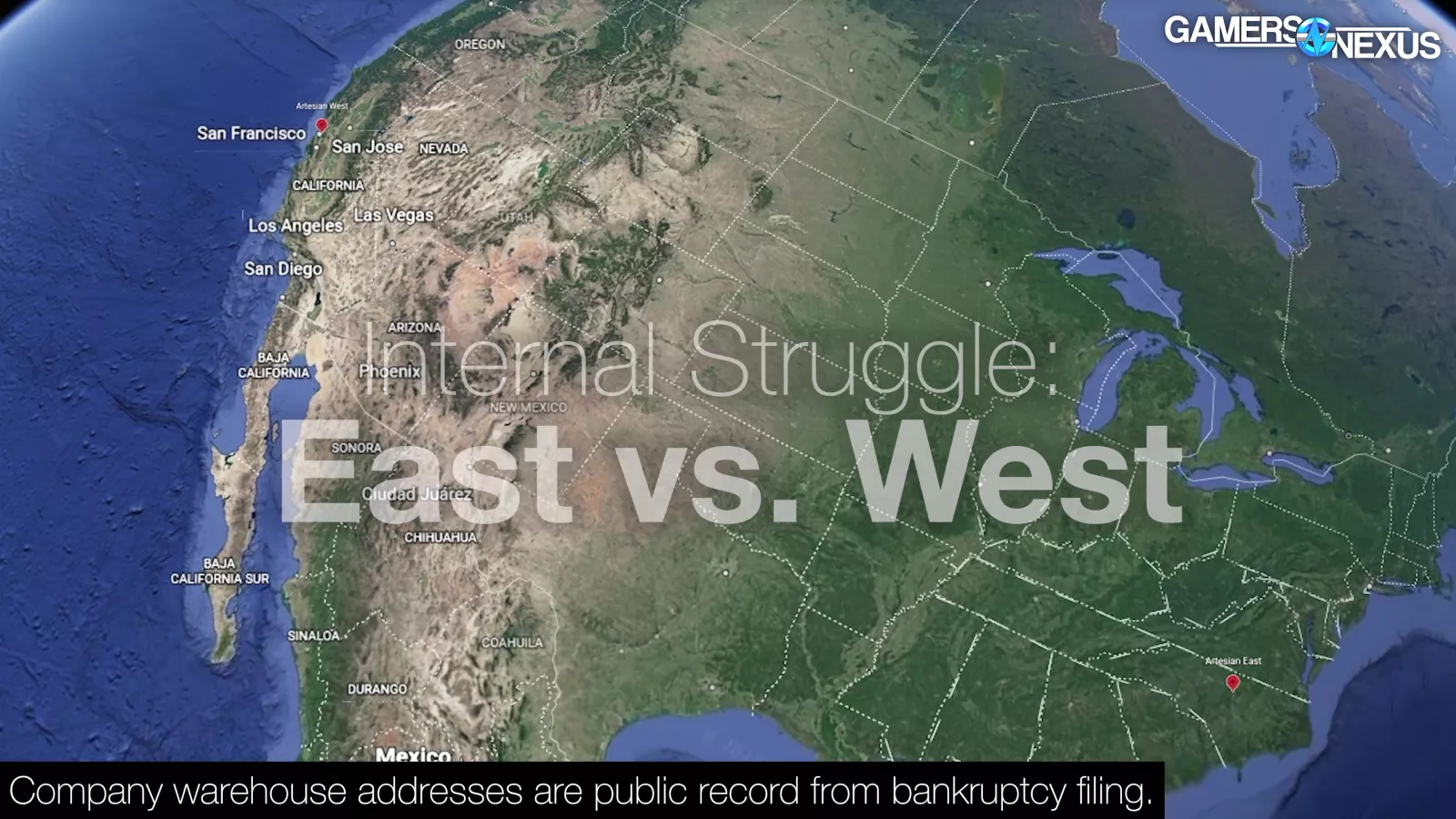
Then we get into the power struggle between the west coast office and east coast office.
The east coast branch was largely autonomous and had the operations team, including the COO and other high-rank individuals on-site. The west coast office was run by the CEO, who also resided and worked there.
In terms of staff, our understanding is that Artesian had roughly between a 2:1 and 3:1 ratio of staff between coasts, with the west coast having more staff at most times, based on the information we have.
There were about 3-4 employees building PCs on the east coast, not counting the support staff, operations staff, warehousing and shipping staff, and other non-building roles. The west coast had upwards of 8 PC builders employed.
The east coast built around 20-31 systems per day, depending on type of build, with its 4 builders. The west coast office did around 3 per day, sometimes 4, yet had significantly more staff.
Our investigation revealed that the company, as of its demise, had about 615 builds queued at the east coast warehouse – clearable within a month if supply was available and they didn’t go bankrupt. That’s based on information we’ve collected from former employees. This warehouse was the one that handled the bulk of the orders and had the most refined processes.
There were an additional 170-180 builds queued at the west coast warehouse, located in Oakland. That’s also where more of the streamer and influencer builds were prepped.
Here’s where the problems start.

WEST COAST:
The West Coast Build Queue, pictured here, indicates limited work orders despite an apparent over-allocation of resources within the company.
This image shows the company’s to-do list for the west coast warehouse nearing the end-months of Artesian. We can see that the west coast had about 3 builds per day scheduled, including one for a streamer listed at the bottom. These were the types of builds that Artesian’s CEO wanted to personally work on – in what we think becomes a trend of attempts to associate with the concept of internet celebrity – and were what the west coast handled. They also handled normal customer builds that weren’t supposed to be special ones.
The way it was supposed to be set up is that the west coast would handle builds for people closer to California, and the east coast was supposed to be for handling builds on the east coast. That’s because it drives down logistics costs and people get stuff faster. That's the way it's supposed to work.
We can see that on Wednesday, January 26, Artesian west had 3 builds queued.
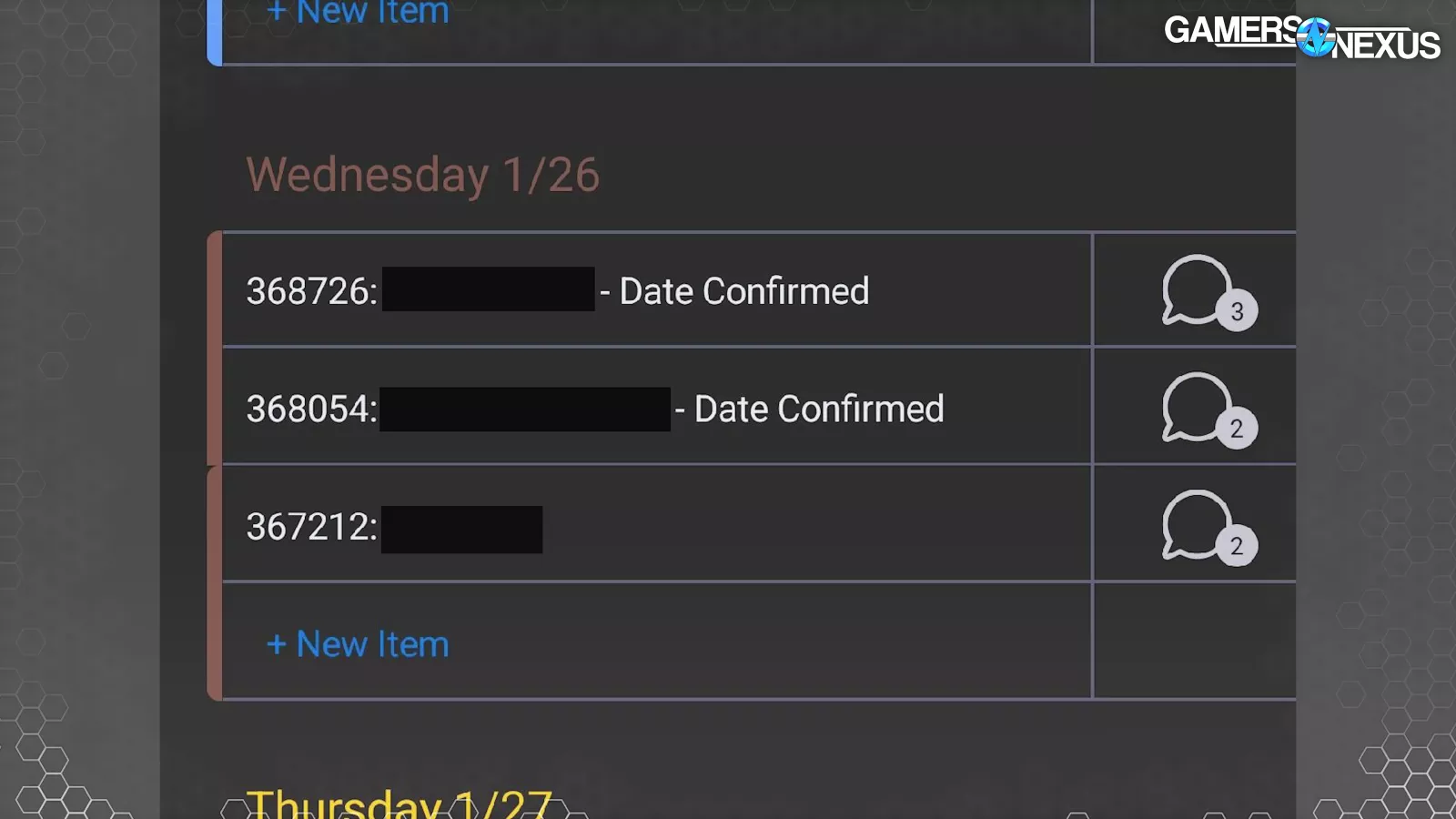
Here’s what the east coast division had to do on its Wednesday.
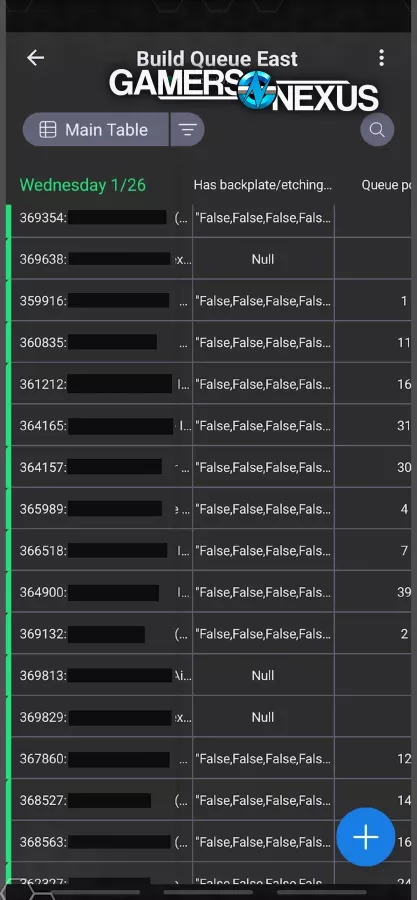
EAST COAST:
The East Coast warehouse, local to us, had multiples of an entire week of work for the West Coast warehouse just for one day.
It doesn’t even fit on the page. This branch printed money for Artesian, by all accounts we could collect.
Mutual Disrespect Internally
The picture painted is one of two autonomously operating arms of the same company, with little collective or collaborative action being taken between them. In interviewing former staff members from both locations, we had a strong impression of an “east vs. west” mentality within the company. This competitive mindset can be healthy, useful, and productive if managed carefully by executives, but internal competition within a company can quickly devolve into toxicity and a back-stabbing environment.
Certainly some of our readers who’ve worked in large corporate environments are probably all too familiar with it, going from feeling like they’re on a team, to starting to feel like they have to watch their back just because somebody else wants their job, window cubicle, or anything else. It’s easy for that to go off the rails and create a much worse situation than needs to exist.
As for why it devolved into a competitive mindset from a collaborative one, this image explains that well.
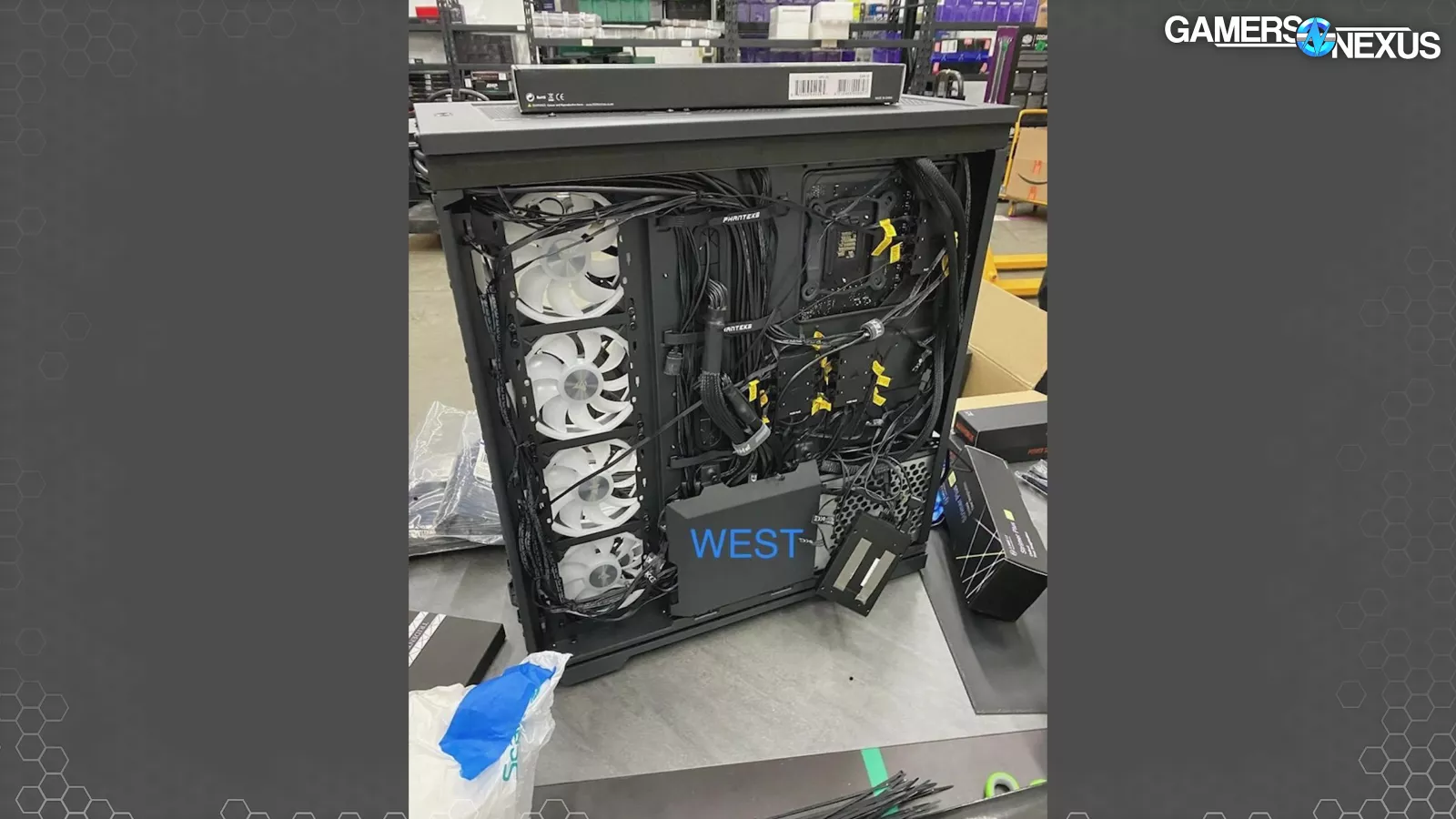
This is the quality of build that we were told would get delivered between the warehouses. This is the PC build of streamer Nickmercs, and the image on the left shows how it was shipped from the west coast branch, where the CEO directly worked on builds.
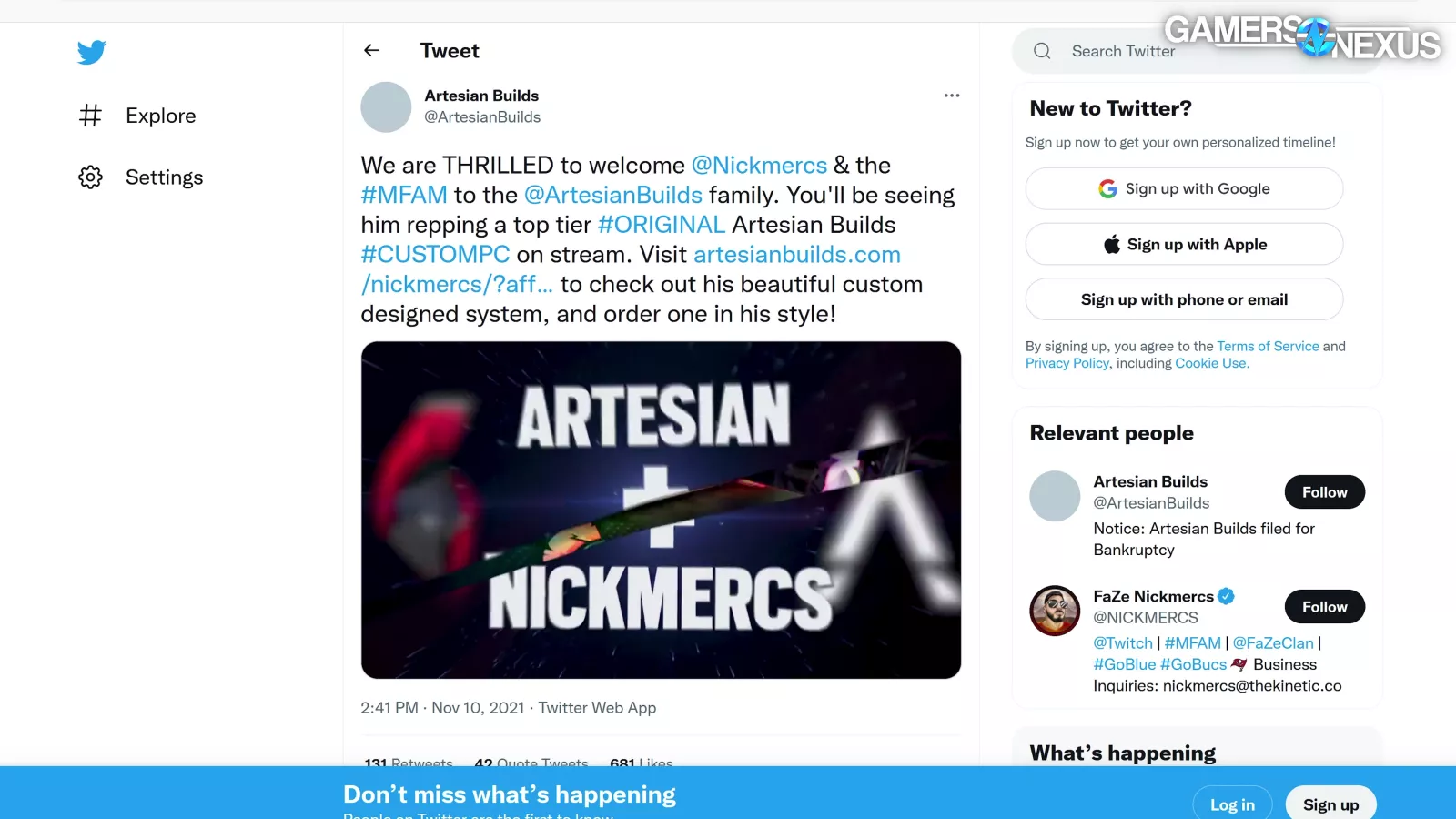
The west coast would build the celebrity builds on stream, often done by the CEO and one other builder, and then the east coast would beg the west coast branch to ship them the builds for a final once-over.
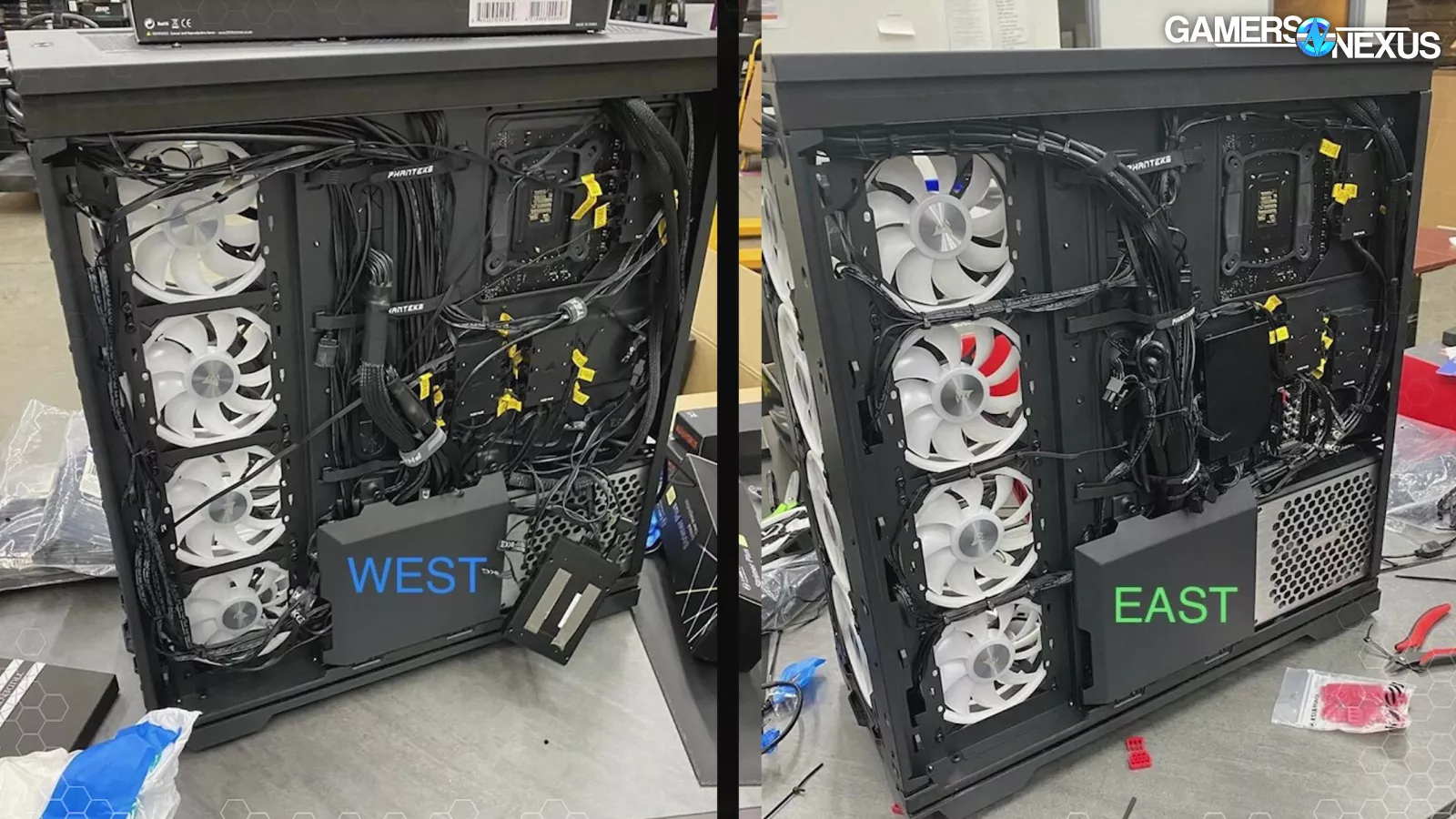
In this Nickmercs build, that’s exactly what happened. The east coast branch handled the final packing and distribution of this system, and when it arrived from the west coast, the lower level east coast employees immediately set to work fixing the cabling mess that was delivered for this system. It was going to be one of the largest collaborations with a streamer Artesian had ever done, so it had to look like it was built well.
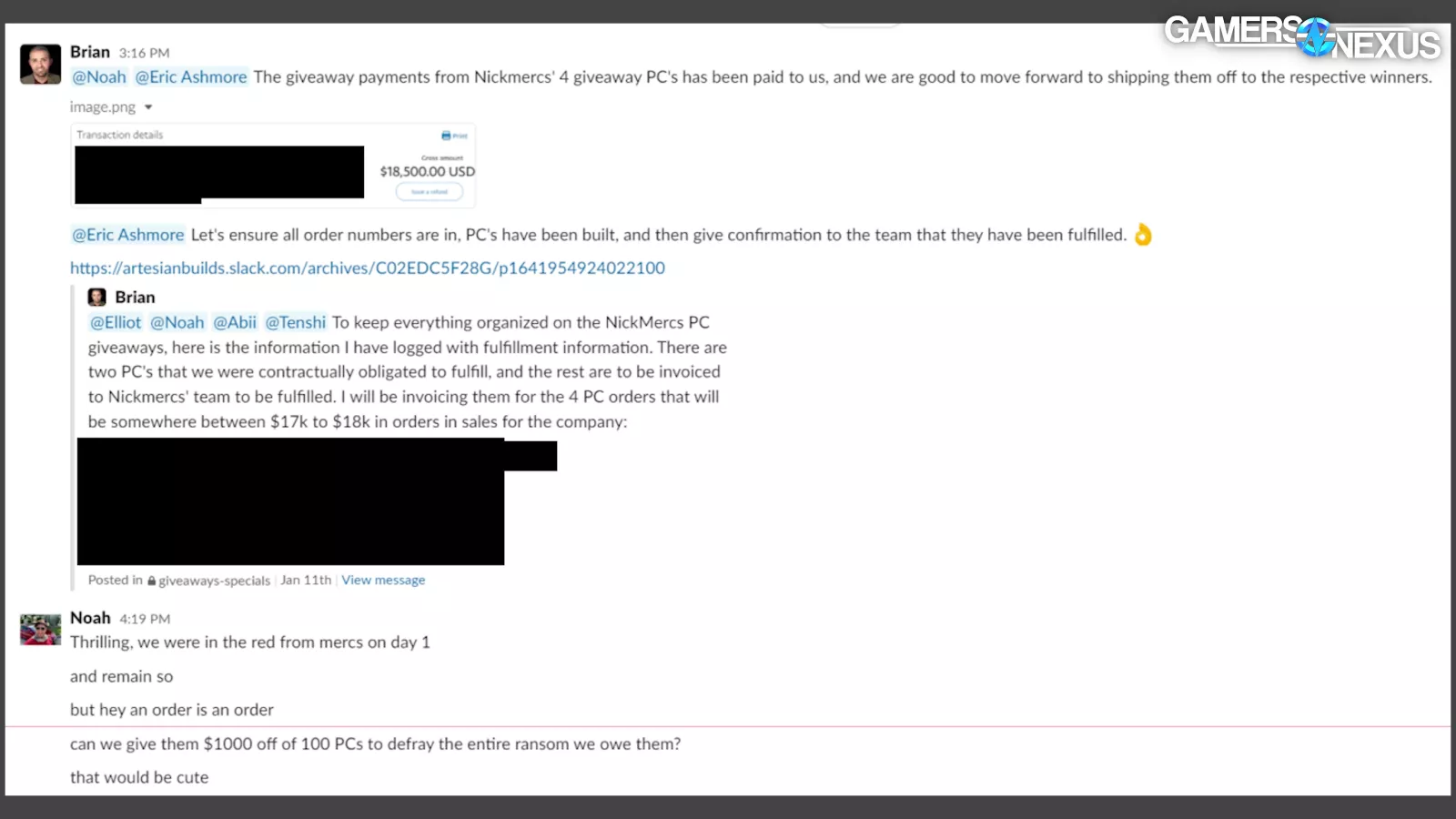
Artesian’s CEO wasn’t particularly fond of Nickmercs and crew anyway, and we’re also curious if Nickmercs knows that Katz referred to their paid partnership as “ransom.”
The decision to rework PCs at the east coast branch was based on the escape rate of RMA defects. Escape rate means the amount of product that would have some sort of defect and need a replacement, a refund, or be shipped back for repair. We were told that the west coast branch had an escape rate approaching 10%, with the east coast branch at about 0.3-0.5% range.

There was clearly an issue with operations between the two branches, which were clearly not following the same set of procedures. This is what ultimately led to Artesian burning large amounts of money, really for no reason. Having two groups of people doing the same work due to failures in one branch is just one part of what burned money at Artesian Builds. This is the kind of thing that’s not immediately obvious day to day until you zoom out.
GPUs as Currency
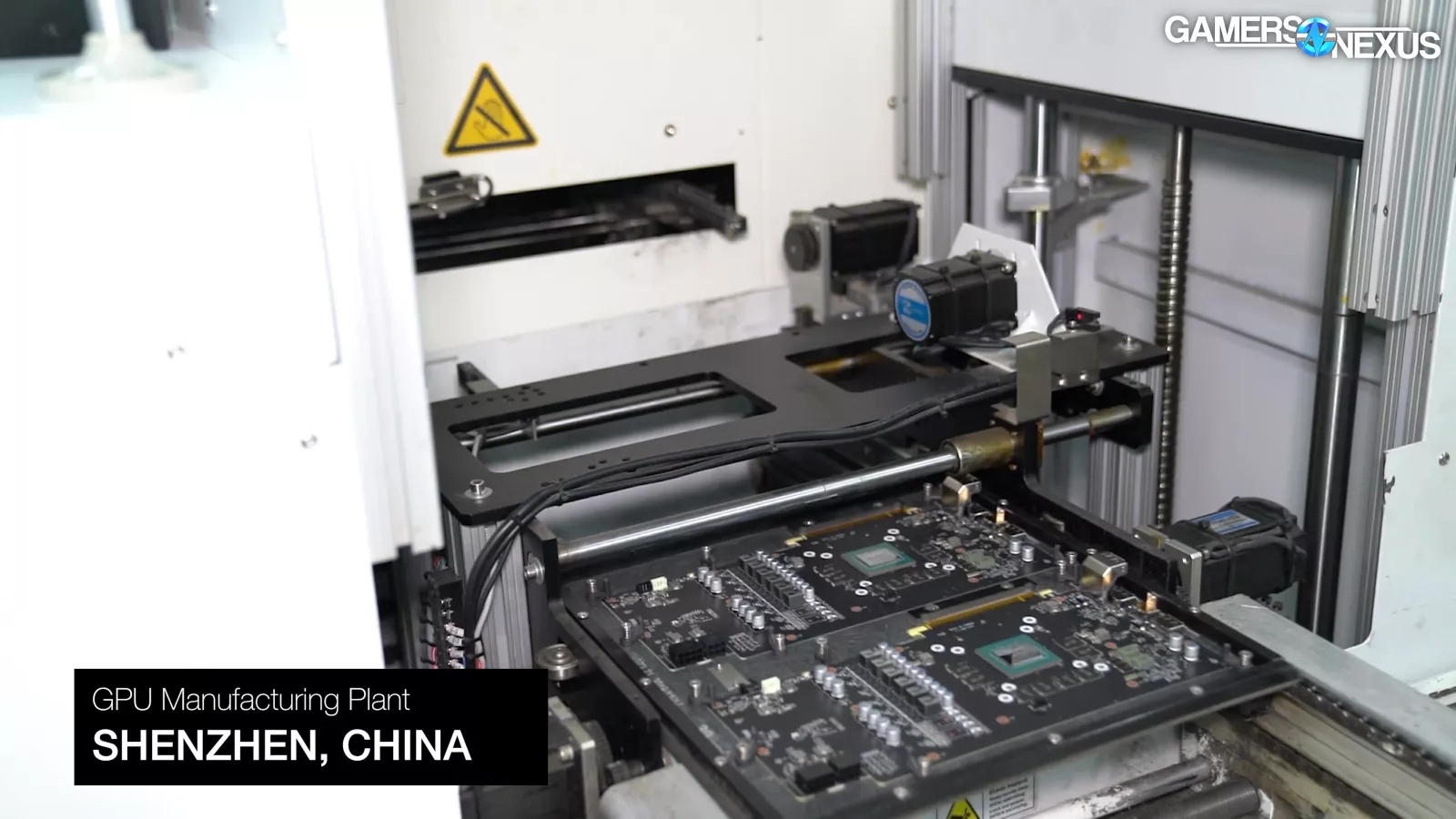
The biggest ongoing liability, though, was builds awaiting a GPU. Artesian had many outstanding, partially complete, and unfulfilled orders.
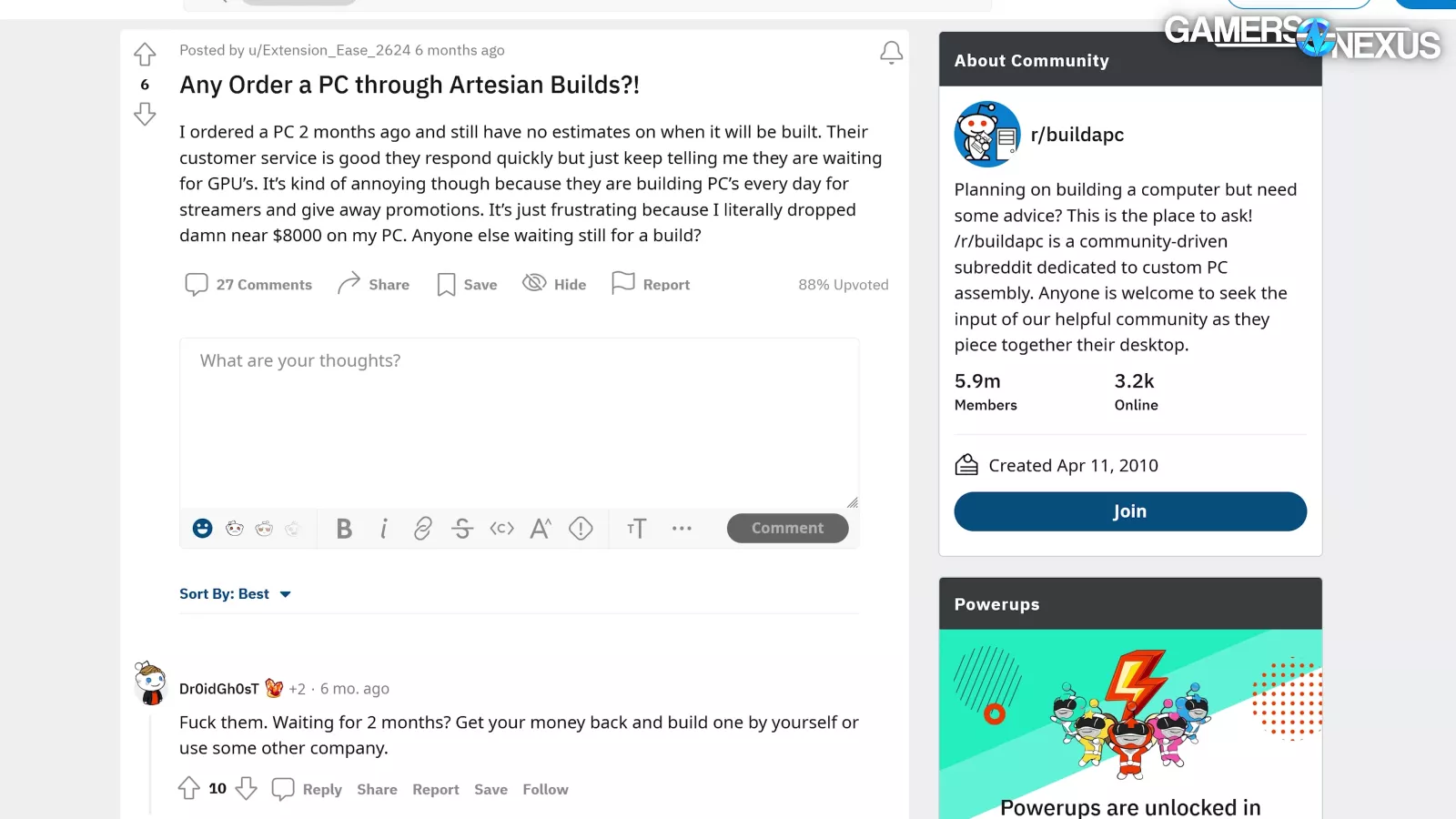
Artesian would collect money for the order, as is normal, and then fulfill it when complete. However, with unknown timelines for GPUs, this could lead to short-term liabilities stacking up as the orders can be canceled at any time, even though the company had already taken the money and potentially already recommitted it to the business.
Artesian would regularly send its warehouse team to purchase GPUs at full retail price (or even scalped on Stock X) just to get long back-ordered builds out of the door before the customer might cancel it. It reduced margin, but it was better than allowing the build time and build itself to go to waste. Artesian was stuck in a cycle of trying to fulfill old, paid-for orders where the money had long ago been spent (making it feel like it wasn’t making money anymore), but also needing to bring in new orders. Artesian was chasing old money with new, which starts to sound like something else. The problem culminated in what ultimately happened – a collapse.
Because Artesian was constantly chasing new money instead of first fulfilling those already paid-for orders due to GPU limitations, it was reallocating inbound GPU supply all the time. This included supply being reallocated away from backlogged orders and instead into new promotions.
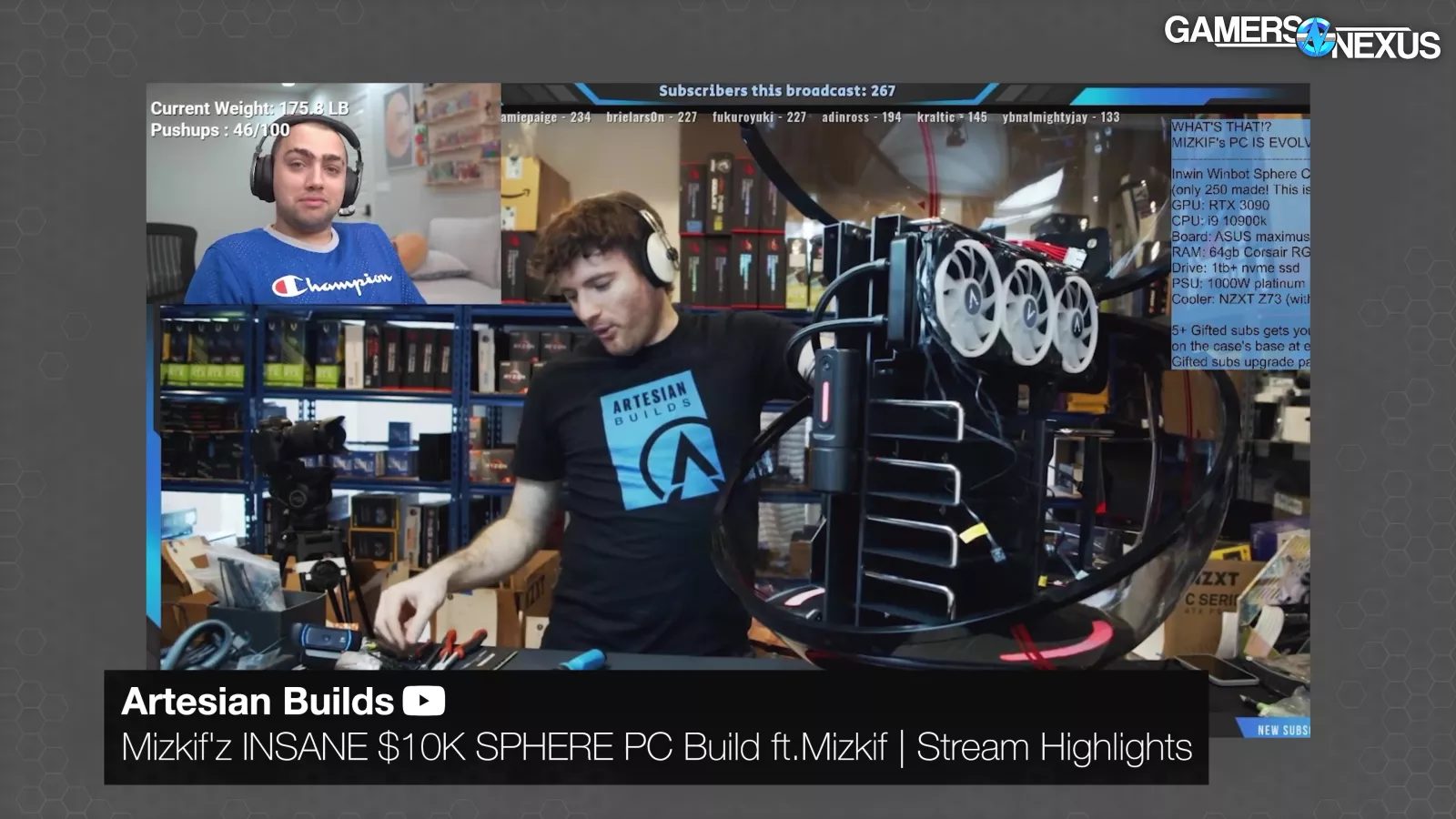
Artesian’s leadership would butt heads about allocation to backlogged builds versus allocation to new sales. Artesian’s CEO would run GPU giveaways during its streams when new cards arrived, do promotions for reduced cost on immediately shipped systems on its websites, or reallocate supply for streamer and celebrity builds. Artesian’s other managers would push for the opposite, to fulfill existing orders instead of chasing new customer acquisition.

Concluding Thoughts
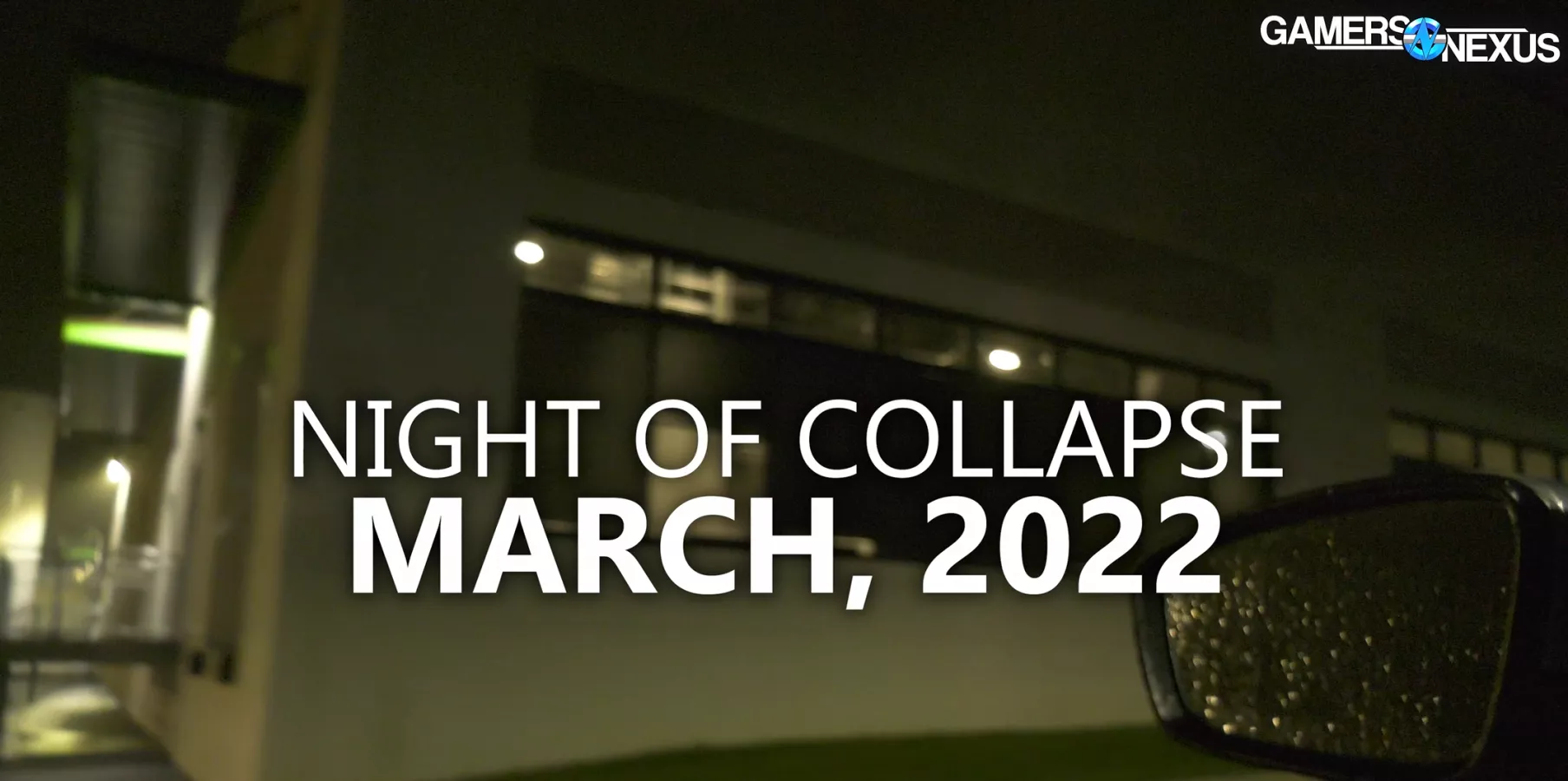
We have a lot more documentation and evidence we could share of this fascinating story, but this piece is long enough. At the end of all of this, what we’re left with are a few key points.
One of those is that Artesian Builds is now gone. It's been through bankruptcy proceedings, and the company has reformed as a new entity, which is something like Artesian Future Technologies. This is a normal bankruptcy procedure where the assets reform into a single asset. So, Artesian Builds itself, as we knew it, is finished and all of its assets have been or are being auctioned off at this point.
The company was run by a man who we think was obsessed with becoming Internet famous and with the idea of Internet celebrity, and he's achieved that. Kudos to him, but it was at the tragic loss of a company that was a dream job for a lot of its staff, and it was at the sacrifice of a $20 million per year business in just its first couple of years of operation. That's insane. These sacrifices were made at every opportunity to build the next Twitch celebrity gaming PC.
From what we've observed, the company had a team of talented people working for it on both coasts, particularly in the management teams and operations who managed to keep things going in spite of the completely misaligned goals. However, at least in the company's later months, there was a clear mutual disrespect between the CEO and his closest assigns and the rest of the company, if not also between the two coasts or branches. This is not something that can be overcome; everybody in the company has to work with each other in a respectful way.
The company was imploding long before the infamous stream, and most of that implosion was fueled by a constant pursuit of money without matching it to the same pursuit of building and shipping a good product. This leaves customers screwed and internal staff frustrated with what could have been and with the cleanup work they're having to do behind their own CEO or behind the entire branch on the other coast.
That's not to speak of other communication issues, like the changes that the CEO made overnight (or his closest assigns on the west coast) to the website, the promotions, and GPU supply shifting within the company. These things weren’t communicated with the company, as we understand it, until employees woke up and saw it in the morning and when the customer service reps started getting emails from customers and ambassadors asking what's going on. Those employees then had to first go to the CEO to ask about the changes because they hadn’t been communicated to them.
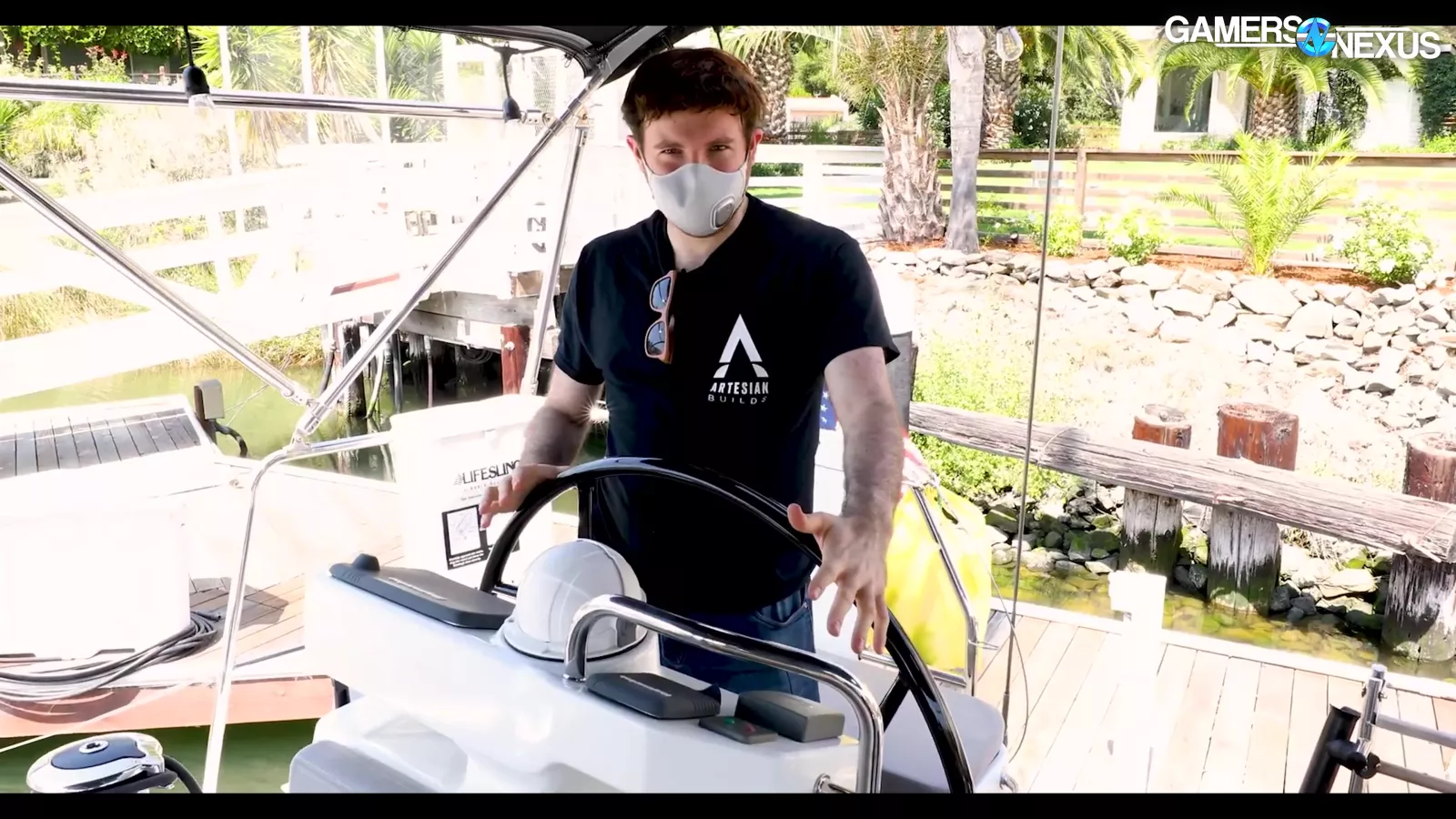
- Noah Katz
This erratic and privileged behavior was fueled by a belief that the money and the GPUs that Artesian had oversold would just keep coming in.
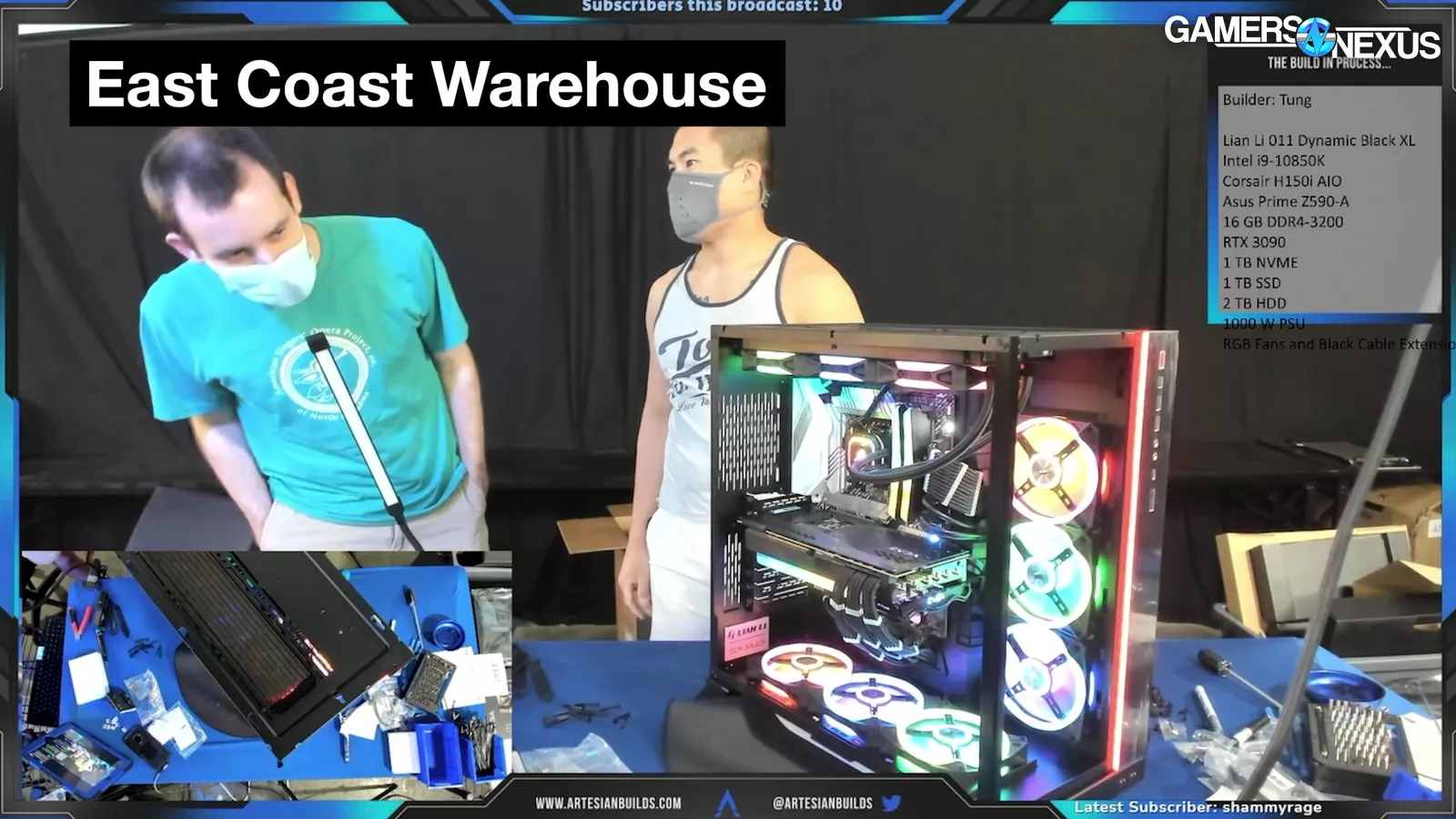
By all accounts we received, this team absolutely loved its local teammates between each branch and the jobs they had, with several of them telling us it was a dream job. The financial and reputational damage, though, was irreparable without replacing the CEO himself, and with that, likely, a lot of the staff between both coasts.
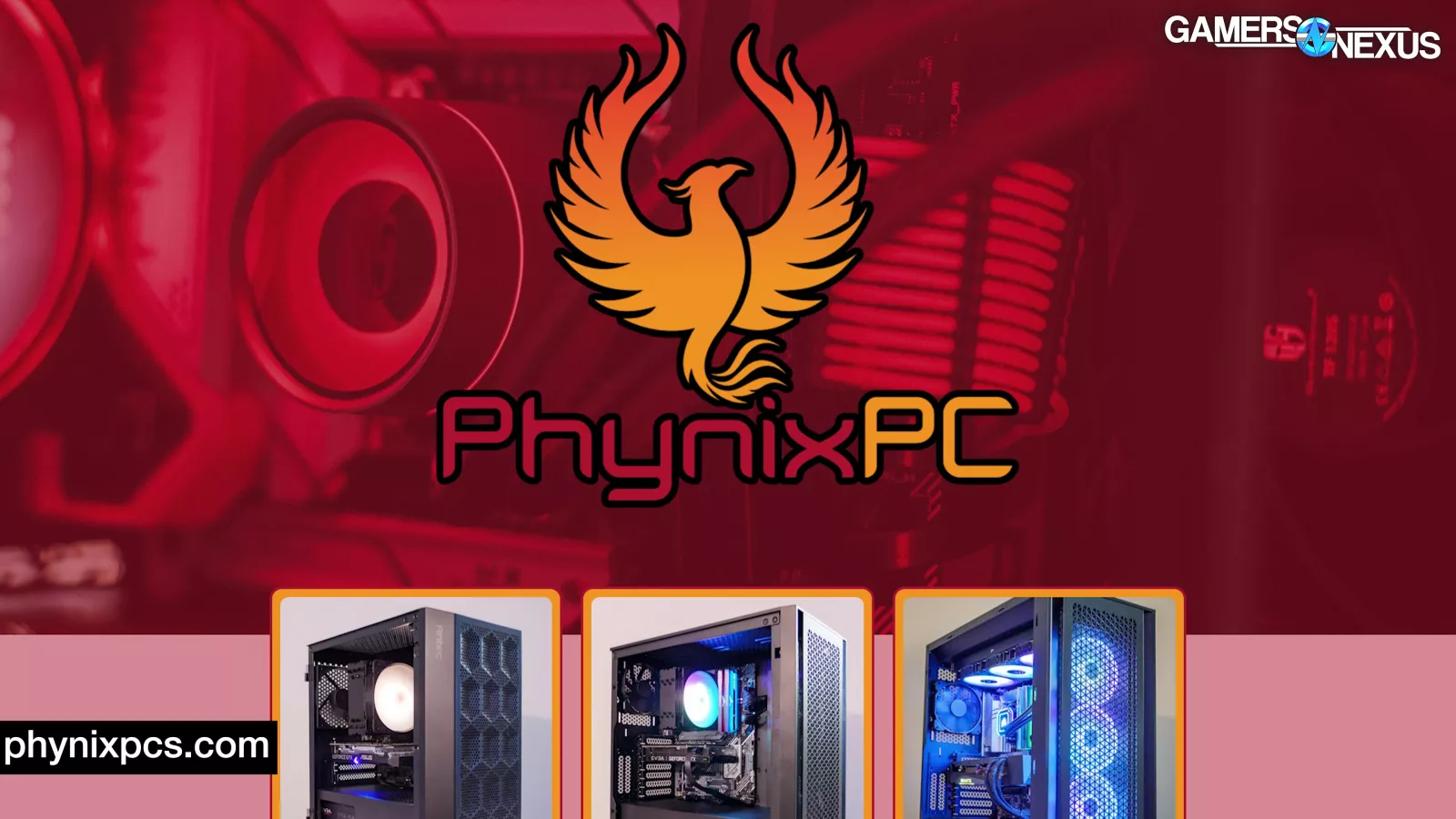
As for what's happening now for the CEO of Artesian Builds and everyone left, well, some of the group from the east coast office has now split off to form their own new company called PhynixPC. As for Mr. Katz, he’s changed his name and is dealing with numerous lawsuits from multiple different types of parties. It's likely we haven't heard the end of this story just yet.
Our biggest concern out of all of this at this point has been for the consumers who got shafted in this, and those who are left with absolutely no recourse – especially if bought on debit, and if they couldn't get into the chargebacks for institutions or for secured creditors. The irresponsible behavior of Artesian Builds as a company, not just the CEO (but also the CEO specifically) has led to upwards of thousands of dollars of losses for each person who had a computer on purchase, waiting for fulfillment. Again, there's even builds that were in the warehouse for RMAs and repairs that won't make it back.
It's tragic as a story, but again, we'll be back with some more on this sometime in the future.

